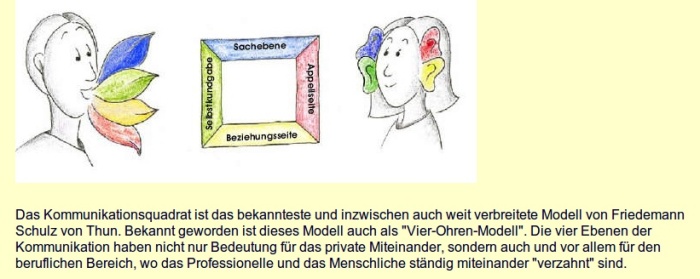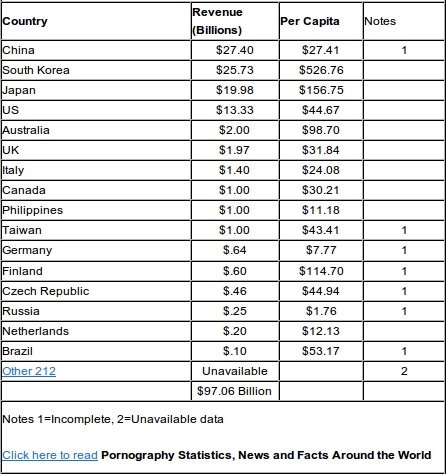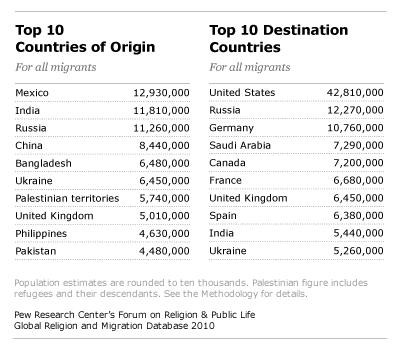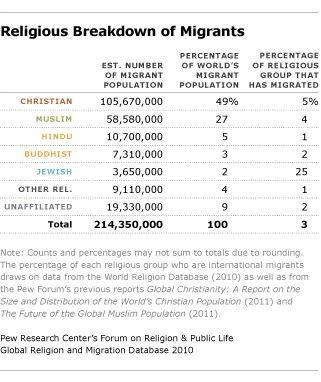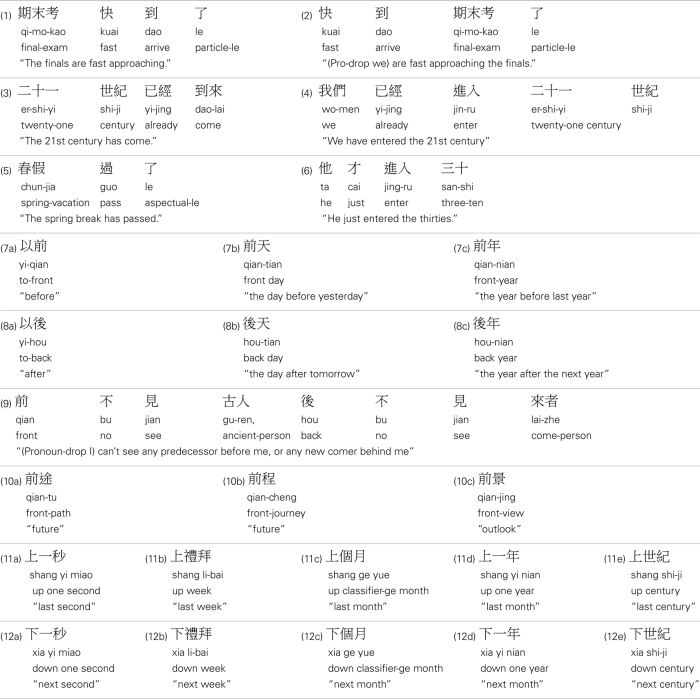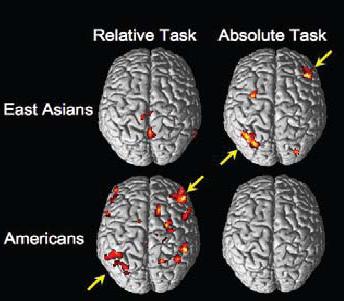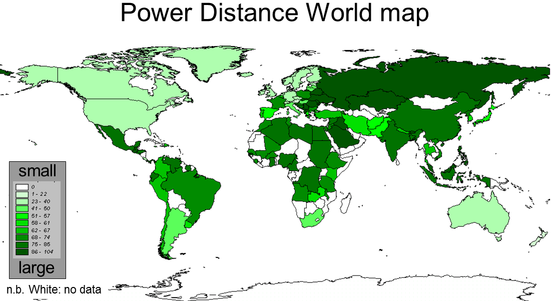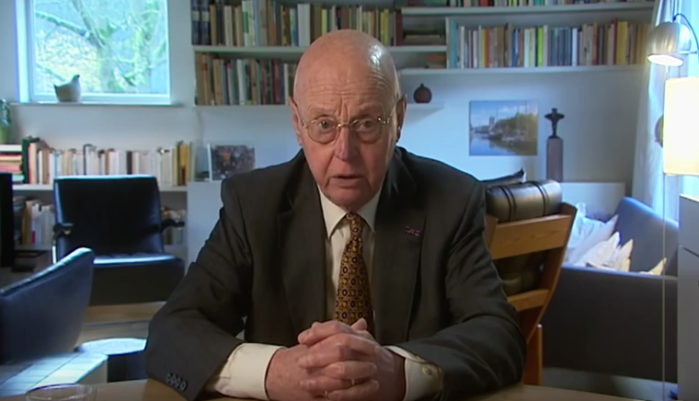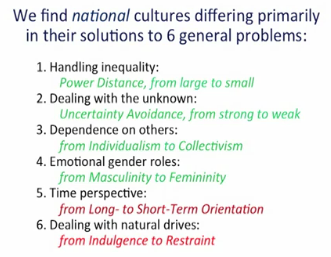Archive for the ‘All Articles’ Category
Genetics, Cultures and Body Odor
Body Odor / ABCC11
Introduction
There are two kinds of sweat glands: eccrine sweat glands, which are found throughout the skin, and apocrine sweat glands, which are found in the armpits and groin. Eccrine sweat glands produce sweat that is mostly water and salt, and it does not contribute very much to body odor. Apocrine sweat contains proteins and lipids; when bacteria on the skin metabolize apocrine sweat, they produce body odor. The earwax glands (ceruminous glands) are a form of apocrine gland. (…) Some people have earwax that is wet, sticky and yellow or brown; other people’s earwax is dry, crumbly and grayish. Variation at a single gene determines which kind of earwax you have; the allele for wet earwax is dominant over the allele for dry earwax. The allele for dry earwax appears to have originated by mutation in northeastern Asia about 2,000 generations ago, then spread outwards because it was favored by natural selection. It is very common in eastern Asia, becomes much less common towards Europe, and is rare in Africa. Earwax type is not used very often to illustrate basic genetics, but unlike most human characters that are used (tongue rolling, attached earlobes, etc.), it really is controlled by a single gene with two alleles. . (…)
MYTHS OF HUMAN GENETICS by JOHN H. MCDONALD
Read full text online here or download pdf there
(retrieved 20.01.2013 at http://www.google.de/url?sa=t&rct=j&q=myths%20of%20human%20genetics&source=web&cd=14&cad=rja&ved=0CEcQFjADOAo&url=http%3A%2F%2Fwww.bio-logisch-nrw.de%2FMyths_of_Human_Genetics__Tongue_Rolling.pdf&ei=wib8UOezFMnYtAaFuYDQAg&usg=AFQjCNFEZd0CAl1L9hrf5_JZmjyAs)
~
Apocrine Gland Secretion and Body Odor
(…) Martin et al. (2010) performed chemical analysis of axillary sweat samples from 25 individuals with different ABCC11 538G-A genotypes, including 18 Asian participants (11 AA homozygotes, 5 AG heterozygotes, and 2 GG homozygotes) and 7 Caucasian participants (2 AG heterozygotes and 5 GG homozygotes). Levels of 3 glutamine conjugates that are precursors for key body odorants were below detection limits in all participants with the AA genotype but were present in all AG and GG individuals, indicating that ABCC11 is essential for secretion of amino-acid conjugates of relevant axillary odors.
~
Mapping of Apocrine Gland Secretion
By a functional assay, Yoshiura et al. (2006) determined that cells with allele A showed a lower excretory activity for cGMP than those with allele G. The allele A frequency showed a north-south and east-west downward geographic gradient; worldwide, it was highest in Chinese and Koreans, and a common dry-type haplotype was retained among various ethnic populations. These results suggested that the allele A arose in northeast Asia and thereafter spread through the world. The 538G-A SNP was the first example of DNA polymorphism determining a visible genetic trait.(…)
Read the full text online here or download pdf there.
(both retrieved 21.02.2015 at http://www.omim.org/entry/117800)
~
World Overview ABCC11
Read the document online here or download full pdf there.
(retrieved 20.01.2013 at http://www.google.de/url?sa=t&rct=j&q=das%20ohrenschmalz%20als%20rassenmerkmal%20und%20der%20rassengeruch&source=web&cd=11&ved=0CDAQFjAAOAo&url=http%3A%2F%2Fge.tt%2Fapi%2F1%2Ffiles%2F50GjGkI%2F0%2Fblob%3Fdownload&ei=FK77ULKmLo_otQaVvoCgBg&usg=AFQjCNEG–tL)
~
Additional Material
Human Olfactory Communication
Abstact:
Nonhuman animals communicate their emotional states through changes in body odor. The study reported here suggests that this may be the same for humans. (…) The finding suggests that there is information in human body odors indicative of emotional state. This finding introduces new complexity in how humans perceive and interact. (…)
Human Olfactory Communication of Emotion by Chen D. and Haviland-Jones J.
(retrieved 21.05.2015 at http://www.ncbi.nlm.nih.gov/pubmed/11153847)
.
Read the full research as pdf online here or here.
(retrieved 21.05.2015 at http://www.google.de/url?sa=t&rct=j&q=&esrc=s&source=web&cd=7&cad=rja&uact=8&ved=0CFYQFjAG&url=http%3A%2F%2Fwww.rci.rutgers.edu%2F~baljones%2FHuman%2520Olfactory.pdf&ei=FrJdVeCFH8yVsgHs5oCgBg&usg=AFQjCNEZZU3iIyp2aNjbNP3SilgIbEpKqg&bvm=bv.93756505,d.bGg)
.
(Posted 21.05.2015)
White Box Computers – The Chaiwan Model
White Box Computers on the Rise
Mobile devices can be built in a modular way. Like Lego, the different modules can be sourced from different companies and assembled into a desired device. The key component is the Application Processor (AP).
~
Application Processor (AP)
(retrieved 20.04.2014 at http://www.dialog-semiconductor.com/products/power-management/applications)
~
(terieved 20.04.2014 at http://www.idc.com/getdoc.jsp?containerId=prUS24129713)
~
An interview with Joanne Chien, senior analyst & director, Digitimes Research
(…) a brand like Apple or Samsung controls everything in the process of bringing their products to market. Under the Chaiwan model, each sector does what it does best. For example, it starts with the key component provider, which in the case of smartphones is the application processor (AP). Companies like MediaTek or Qualcomm provide a turnkey solution and reference design to the players in the market.
Those other players include independent design houses (IDH), which provide design services and recommendations for components (such as connectors, casing, etc) that are not included in the AP turnkey solution. You also have EMS players, who do the manufacturing. And ultimately you have the customer, which could be a large brand, a small white-box brand, or any vendor that wants to bring a smartphone to market. Moreover, under this model, the order volumes don’t need to be very large, which means pretty much anyone who wants to can bring a smartphone to market in China, and it can be done quickly and cheaply.
Originally, this business model was developed by white-box players but it has been increasingly adopted by larger brands, such as Huawei, ZTE and Lenovo in China. A vendor such as Lenovo can direct development of one model through one IDH and EMS provider, while working with another pair of manufacturing partners for development of another model.
This has been a seismic shift for the market, but players are adapting. If you look at at AP provider MediaTek, the company no longer follows a strict roadmap. It simply reacts to what the market wants. In 2013, for example, MediaTek sometimes went a couple of months without releasing a new product and then would release two products in the same month. They weren’t following a roadmap, they were chasing demand.
This is also a new model for EMS providers, since they have been used to dealing with huge orders and following longer-term manufacturing plans. They now have to become more nimble and are learning how to cooperate with the IDHs and smaller brands for small orders and quick delivery.
Players adapt because this is where the growth is. China-based vendors account for approximately one-third of global smartphone shipments and the region had four of the top-10 vendors worldwide in 2013. For 2014, Digitimes Research forecasts that China will have five vendors in the top 10.
Looking at the rest of the market (non top 10 or “Other” segment) is even more interesting. This portion of the market is dominated by Greater China vendors and white-box players. The Other segment accounted for 12% of global smartphone shipments in 2012, 21% of the global market in 2013 and Digitimes Research forecasts the share will rise to 25.6% in 2014.
This means that the global smartphone industry is opening up rather than consolidating and it is directly a result of the dynamic interplay seen in the Chaiwan model. Moreover, China vendors are now exporting about 30% of their smartphones (as of 2013) and that proportion is forecast to rise. (…)
.
.
Read the full article online here or download pdf here.
.
(retriewed 13.04.2014 at http://www.digitimes.com/news/a20140221VL203.html)
~
(retrieved 13.04.2014 at http://www.digitimes.com/news/a20131231RS400.html?read=toc#66)
~
(terieved 20.04.2014 at http://www.idc.com/getdoc.jsp?containerId=prUS24129713)
.
(reviewed 23.04.2014)
The Stan Shih Smile Curve
The Stan Shih Smile and Frown Curve
.
Stan Shih`s Smile Curve
.
.
Stan Shih`s Smile Curve / Frown Curve
Bill Weinberg completed Stan Shih`s Smile Curve by adding the “Frown Curve”, which describes the increased efficiency of the producing units. Read the whole article online here or check his LinuxPundit Weblog.
(reviewed 13.04.2014)
The Origin of Facial Expressions
Facial Expressions Develop in the Womb
~
(…) Before he or she is born, a fetus begins to move his or her face — parting lips, wrinkling a nose or lowering a brow for example — making movements that, when combined, will one day assemble expressions we all recognize in one another. A new study has shown that, as the fetus develops, these facial motions become increasingly complex. (…)
Nadja Reissland, University of Durham in the United Kingdom
Read the full article online here or download pdf here.
(retrieved 04.02.2014 at http://www.livescience.com/15939-fetus-facial-expressions.html)
~
Study of Facial Expression of Blind Athletes
~
(…) By studying the expressions of the blind athletes in the Paralympic Game and in comparing them to the expressions to the athletes’ (…) regularly games, we can tell whether they have the same expressions or not.
So the study of the blind athletes in the Paralympic Games told us conclusively, that the source of facial expression of emotions must be resident in some innate biological program, that we all have and are born with and that we have from birth. And that everybody from around the world, as long as you’re a human has that. (…)
David Matsumoto – Professor of Psychology, San Francisco State University (transcription from the video by the editor)
(retrieved 04.02.2014 at http://www.youtube.com/watch?v=5G6ZR5lJgTI&feature=player_detailpage)
~
(…) Central to all human interaction is the mutual understanding of emotions, achieved primarily by a set of biologically rooted social signals evolved for this purpose—facial expressions of emotion. Although facial expressions are widely considered to be the universal language of emotion (…), some negative facial expressions consistently elicit lower recognition levels among Eastern compared to Western groups (…).
Read the full pdf here.
(retrieved 12.02.2014 at http://www.sciencedirect.com/science/article/pii/S0960982209014778)
For more information about expression of emotions see Perception and Expression of Emotions in Different Cultures.
.
(reviewed 12.02.2014)
A Geography of Time
Robert Levine – A Geography of Time
The Temporal Misadventures of a Social Psychologist, or How Every Culture Keeps Time Just a Little Bit Differently
(…) As Miles Davis said, “Time isn’t the main thing. It’s the only thing.” How we construct and use our time, in the end, defines the texture and quality of our existence. To seize control over the structure of one’s time is my own definition of what it means, as it is said in the Tibetan Book of the Dead, to avoid “devoting thyself to the useless doings of this life.” And that, more than anything, is what I have taken away from my studies of the time senses of other cultures. Borrowing again from Russell Banks’s image of Hawthorne’s Wakefield: I had moved out of my house and this is what appeared when I looked back to “see what’s true there.” Simply that. (…)
In each country, we went into one or more of the major cities in order to measure three indicators of the tempo of life.
(…)
First, we measured the average walking speed of randomly selected pedestrians over a distance of 60 feet.
(…)
The second experiment focused on an example of speed in the workplace: the time it took postal clerks to fulfill a standard request for stamps. In each city, we presented clerks with a note in the local language requesting a common stamp—the now standard 32-center in the United States, for example. They were also handed paper money—the equivalent of a $5 bill. We measured the elapsed time between the passing of the note and the completion of the request.
Third, as an estimate of a city’s interest in clock time, we observed the accuracy of 15 randomly selected bank clocks in main downtown areas in each city. Times on the 15 clocks were compared to those reported by the phone company.
The three scores for each country were then statistically combined into an overall pace-of-life score.
(…)
(…)
We can speculate about the direction of causality between the tempo of life and economic conditions. Most likely, the arrow points both ways. Places with active economies put greater value on time, and places that value time will be more likely to have active economies. Economic variables and the tempo tend to be mutually reinforcing; they come in a package.
(…)
It is one of the great ironies of modern times that, with all of our time-saving creations, people have less time to themselves than ever before. Life in the Middle Ages is usually portrayed as bleak and dreary, but one commodity people had more of than their successors was leisure time. Until the Industrial Revolution, in fact, most evidence suggests that people showed little inclination to work. In Europe through the Middle Ages, the average number of holidays per year was around 115 days. It is interesting to note that still today, poorer countries take more holidays, on the average,than richer ones.
(…)
Our results confirmed the hypothesis: greater individualism was highly related to faster tempos.
(…)
How we define and measure our time does, in fact, border on the religious. And people do not change religions lightly.
(…)
Since our own study found a very strong relationship between economic vitality and the pace of life, we hypothesized that this should also lead to a positive relationship between the pace of life and happiness. And this is exactly what we found: in all of our pace-of-life experiments, people in faster places were more likely to be satisfied with their lives.
(…)
It is in the middle ground between too much and too little pressure that people enter the experience, described in an earlier chapter, called “flow.” When Csikszentmihalyi kept tabs on people by having them wear beepers, asking them at frequent intervals what they were engaged in and how good they felt, the most positive reports came when people were in moderately challenging activities that engaged their skills. People doing too many things at once tended to be overstressed. But those who were doing nothing at all experienced little sense of flow and little pleasure. Many contemporary psychologists believe the flow experience is an important key to a happy and satisfying life. Studies have shown that flow experiences are not only exhilarating but empowering: they raise self-esteem, competence, and one’s overall sense of well-being.
My own studies, we have seen, point to the mixed consequences of a rapid pace of life. People in faster environments are more prone to potentially deleterious stress, as evidenced by higher rates of coronary heart disease; but they are also more likely to achieve a comfortable standard of living and, at least in part because of this, are more satisfied with their lives as a whole.
Download the full pdf here. (C) 1997 Robert Levine All rights reserved.
(received 12.07.2013 at http://www.cycle-planet.com/paleo/AGeographyofTime.pdf)
.
See also Arrow, Circle, Spiral and Cylinder – Different Conceptions of Time and History and Map of Happiness.
Culture and Colours
Culture and Colours
~
 (retrieved 14.06.2013 at http://www.informationisbeautiful.net/visualizations/colours-in-cultures/)
(retrieved 14.06.2013 at http://www.informationisbeautiful.net/visualizations/colours-in-cultures/)
~
~
Performable (now HubSpot) wanted to find out whether simply changing the color of a button would make a difference in conversion rates. They started out by trying to guess the outcome of a simple choice between two colors (green and red) and trying to guess what would happen.“Green connotes ideas like “natural” and “environment,” and given its wide use in traffic lights, suggests the idea of “go” or forward movement. The color red, on the other hand, is often thought to communicate excitement, passion, blood, and warning. It is also used as the color for stopping at traffic lights. Red is also known to be eye-catching.” So, clearly an A/B test between green and red would result in green, the more friendly color. At least that was their guess. Here is what their experiment looked like:
So how did that experiment turn out? The answer was surprising: The red button outperformed the green button by 21%. What’s most important to consider is that nothing else was changed at all: 21% more people clicked on the red button than on the green button. Everything else on the pages was the same, so it was only the button color that made this difference.
(retrieved 15.06.2013 at http://www.fastcompany.com/3009317/why-is-facebook-blue-the-science-behind-colors-in-marketing)
~
Red in Western and Chinese Meaning
(…) Because of distinctively different cultural backgrounds, the core meaning of red leads to different abstract meanings in each language. Chinese people used to think they were descendants of the Sun God and red is the color of the Sun God, so the original worship endows festival meanings of red in Chinese culture. Red in English is mostly related to negative connotations, such as anger, guilt and sin, and the main reason may be the correlation with blood. However, apart from different core denotations and connotations of red in both Chinese and English, both languages have similar connotations for positive, negative and warning. (…)
Comparison of Red in Chinese and English – Yanping Bai
Read the whole article online here or download pdf here (11MB).
(retrieved 13.08.2013 at http://www.hpu.edu/CHSS/LangLing/TESOL/ProfessionalDevelopment/201080TWPfall10/BaiRed.pdf)
~
Target Markets
Using Color Psychology to Attract Your Target Markets
Your target market is the people or businesses you are aiming to sell your products or services to; it is therefore important that you understand the colors that will attract your specific market.
With many businesses now being global, color has also become global. Know your the market you are trying to attract and speak the color language that they will best respond to. Then test your color choices on a small sample of your market before implementing a large and expensive promotion. Compare several color options, get feedback and then choose the colors which give you the best response.
Color psychology is not an exact science and there are no right or wrong colors, only colors which may get a better response than others from your target market. Understand that there is a physiological and a psychological component to each color as well as the subjective meanings attached by each individual.
Our color preferences are ‘colored’ by our gender, our age, our education, the culture we grew up in, preconceived color beliefs of the societies we live in, our childhood associations with certain colors, and our life experiences, whether those associations are negative or positive.
The following are typical generalizations to help you understand your target market, but remember, there are always exceptions to the rules!
Gender Based Color Preferences
Blue is a color which is generally favored by most people, independent of which culture, country, age, socio-economic bracket, or gender they are from, so it is the safest color to use in all your target markets, although not always the best color to use. Universally, pink tends to be favored by females.
Males:
-
Prefer the color blue to red, and orange to yellow.
-
Baby boys traditionally tend to be dressed in blue, except in Belgium where pink is used for baby boys.
-
In the western world many men are color blind so you need to be aware of the red/green visual problems if this is your target market and choose other colors that are not as affected.
Females:
-
Prefer the color red to blue, and yellow to orange.
-
Baby girls traditionally tend to be dressed in pink except in Belgium where blue is used for baby girls.
-
Tend to have a broader range of color preferences to men and are more open to trying new colors.
Both Genders:
-
Blue, turquoise, green, red, yellow, black, white, gray and silver are colors that are the most suitable for use in a business marketing to both males and females.
-
Pinks and purples are now becoming more acceptable to males, with pale pink business shirts and purple casual shirts commonly seen on men.
Age Based Color Preferences
Babies:
-
Cry more in a yellow room.
-
Respond best to high contrast visuals.
Pre-adolescent Children:
-
Prefer brighter primary and secondary colors – red, yellow, blue, orange, green and purple.
-
Also prefer solid blocks of colors rather than patterns.
Adolescents/Teenagers:
-
More open to experimenting with more sophisticated and complex colors due to their exposure to computer graphics programs such as Photoshop.
-
More influenced by cultural influences due to multiculturalism and greater access to world markets through the Internet.
-
Many younger teenager girls love varying shades of purple and pink.
-
As they reach their late teens they often show a preference for black – this relates to a psychological need for black during the transition stage from the innocence of childhood to the sophistication of adulthood – it signifies the ending of one part of their life and the beginning of another, allowing them to hide from the world while they discover their own unique identity.
Young Adults:
-
Similar to teenagers.
-
Tastes begin to change around age 25 as they become more sure of themselves and find their direction in life.
Adults:
-
Prefer more subdued colors.
-
Are less open to experimenting with color, tending to stick with their favorites.
Mature 65+ Years Old:
-
Yellow is the least favored color of this target market, unless it is a pale butter yellow.
-
Preference for clear colors such as fresh blues, pinks, greens.
-
Preference for cleaner colors such as blue-greens rather than olive greens.
-
Are generally more comfortable with the calming colors of blue, green, pink and purple, than the bright, stimulating colors of red, orange and yellow, although some will choose muted blue based reds and pale yellow.
-
Many females often choose colors in the purple range, varying from deep purple and violet, to mauve and lavender, and plum colors, as they grow older.
Corporate Color Preferences
-
The more serious the business, the darker the colors – dark blue, dark green, dark red, indigo, black, gray.
-
The more casual and light-hearted the business, the brighter and lighter the colors – red, orange, yellow, bright green, bright blue, pink and purple.
Class Differences
-
Working class and blue collar workers tend to prefer the bright and warm primary and secondary colors of the rainbow.
-
Wealthier people tend to prefer the more complex and sophisticated colors – tertiary colors, and shades and tints of primary and secondary colors.
Education Based Color Preferences
-
Research has shown that the more educated people are, the more sophisticated their color choices seem to be.
-
Well educated people respond well to tertiary colors and those given unusual names.
-
Less educated people tend to prefer the simpler basic primary and secondary colors.
-
Broader education through the use of the Internet has resulted in greater access to worldwide influences and effects on color choices.
Climate Based Color Preferences
-
People tend to prefer colors that duplicate the colors relating to their climate.
-
People from warm tropical climates respond best to bright, warm colors, while people from colder climates tend to prefer cooler and more subdued colors.
-
In the Scandinavian countries, fresh and bright blues, yellows and whites are popular.
-
In Switzerland, more sophisticated colors such as dark reds and burgundies, gray and dark blue are common.
-
In South America the warm reds, oranges, yellows and bright pinks are popular.
-
Australian Aborigines respond well to the earthy reds, oranges, blues and greens that are seen in the outback regions of Australia.
(retreived 14.06.2013 at http://www.empower-yourself-with-color-psychology.com/cultural-color.html)
.
(reviewed 14.04.2014)
China’s GDP in 2013
Only 30% of the world now has a higher GDP per capita than China (2013)
~
In many ways, what we are witnessing is not the ‘emergence of Asia’, but the ‘re-emergence of Asia’
(…) In 1820, Asia accounted for just under 60 per cent of total global output, with China and India together accounting for nearly half of global GDP. This was followed by nearly two centuries of economic decline in Asia, ignited by the European industrial revolution—a trend that has now been reversed. (…)
Jayant Menon, ADB
Read the full article online here of here.
/retrieved 09.06.2013 at http://www.eastasiaforum.org/2013/06/09/asia-yet-to-earn-its-future/)
~
(retrieved 09.06.2013 at http://adnanramin.wordpress.com/2013/06/02/racism/)
~
China’s economic achievement is so enormous, indeed literally without parallel in human history, that it is sometimes difficult for people to take in its scale. A country which in 1978, when “reform and opening up” was launched, was one of the poorest in the world, has now reached a point where it has a higher GDP per capita than the countries containing the majority of the world’s population. Only 30 per cent of the world’s population now lives in countries with higher per capita GDP than China.
To give absolutely precise numbers, drawing on the newly published data for the world economy in 2012 released by the IMF, the chart shows that by 2012, only 30.2 per cent of the world’s population lived in countries with a higher GDP per capita than China, while 50.2 per cent lived in countries with a lower one. China itself constituted 19.6 per cent of the world’s population at this time.
China is, therefore, now in the top half of the world as far as economic development is concerned, and to avoid any suggestions of exaggeration, it should be made clear that these comparisons are at the current market exchange rate measures usually used in China – although calculations in parity purchasing powers (PPPs), which are the measure preferred by the majority of Western economists, makes no significant difference to the result.
The chart also illustrates China’s extraordinary progress. In 1978, when “reform and opening up” began, only 0.5 per cent of the global population lived in countries with a lower GDP per capita than China, while 73.5 per cent lived in countries with a higher GDP per capita. The transition to a situation where China has overtaken the majority of the world’s population in per capita GDP is the greatest economic transformation in human history, both in terms of the short time frame required and number of people affected.
Given that the data clearly shows China has progressed into the top half of the world economy in terms of economic development, why do some persist with misrepresenting China as being “in the middle” or even more misleadingly dubbing it a “poor” country by international standards?
Such misrepresentations make elementary statistical errors which are familiar to those who analyse income distribution data. For example the following argument is sometimes presented: The IMF World Economic Outlook database gives GDP per capita statistics for 188 countries with China ranking 94th – therefore China is “in the middle”. Another sometimes-cited statistic compares China to the world average – in 2012 China’s GDP per capita was 59 per cent of this average figure – making China appear a “poor” country.
The problem with this “list” method is that it does not take population into account. For example, the Caribbean state St Kitts and Nevis, population 57,000, has a higher GDP per capita than China while India, population 1.223 billion, has a lower one. To say China is “between the two”, as though St Kitts and Nevis and India represent equivalent weights in the world economy, is playing games with words rather than carrying out serious analysis. This elementary statistical rule is particularly relevant given that the number of developed economies with small populations is disproportionately large. The population of countries must therefore be taken into account when calculating China’s real relative position in the world economy.
The second mistake, comparing China to the “average”, makes an error so well known in income distribution statistics that it is somewhat surprising anyone gives it any credence, let alone continues to propose it.
Statisticians know that averages, technically speaking the “mean”, can be disproportionately affected by small numbers of extreme values. It is well known that this applies to incomes within countries as small numbers of billionaires artificially raise average incomes in a way that misrepresents the real situation.
This statistical distortion is clear from international data. Average world GDP per capita, that is world GDP divided by the number of people, is slightly more than $10,000 per year. But only 29.9 per cent of the world’s population lives in countries with GDP per capita above that level while 70.1 per cent live in countries below it. Something with only 29.9 per cent above and 70.1 per cent below is not most people’s idea of an average!
What most people understand by an average, the mid-point, is, in proper statistical terms, not the average but the median. Reputable studies on income distribution, therefore, almost invariably use the median, not averages, to avoid this distorting effect of small numbers of extreme values. Using the statistically misleading average, instead of the mid-point, bizarrely transforms the real situation – that China now has a GDP per capita above that of the majority of the world’s population – into giving the impression that China is a poor country!
There are three main reasons why it is important to accurately present China’s level of development.
First, policy must be based on accurate analysis – in serious matters there is no virtue in either optimism or pessimism, only in realism. As the famous Chinese phrase tells us, it is better to seek truth from facts.
Second, accurate presentation is necessary to clearly understand the real economic challenges China faces. For example China’s GDP per capita is now higher than all developing South and South East Asian countries except Malaysia – clarifying why any competitive strategy for China based on low wages is unviable.
Third, China’s position in the top half of the world in terms of GDP per capita makes clear its technological level – China’s economy is now dominated by medium, not low, technology.
Does an accurate presentation of China’s real level of development endanger its international legal status as a developing economy? The World Bank has not yet published new criteria for the GDP per capita necessary to qualify as an “advanced” economy, but the 2011 criteria and statistical data is available and it tells us that the answer to the question is “no”. To classify as “high income”, an economy must have an annual GDP per capita of slightly more than $12,000. Only 16 per cent of the world’s population lives in such economies. It will take 10-15 years for China to achieve “high income” status – although when it does this will more than double the number of people living in such economies.
Achieving the “Chinese dream” requires that the present reality is accurately understood. China has entered the top half of the world’s level of economic development. Only 30 per cent of the world’s population lives in countries with a higher GDP per capita than China. That is the accurate analysis of China’s relative position in the world economy. To achieve the “Chinese dream” requires eliminating not only any exaggerated bombast but also any systematic underestimation
This article originally appeared in Chinese at Sina Finance and in English at China.org.cn.
~
John Ross
Is Visiting Professor at Antai College of Economics and Management, Jiao Tong University, Shanghai
~
TrackBack URL for this entry: http://www.typepad.com/services/trackback/6a00e554717cc988330192aa48c0e8970d
(retrieved 25.05.2013 at http://ablog.typepad.com/keytrendsinglobalisation/2013/05/only-30-of-the-world-now-has-a-higher-gdp-per-capita-than-china.html)
~
Read more about China and it’s economy from John Ross
Key Trends in Globalisation
Seek truth from facts – 实事求是 (Chinese saying originally from the Han dynasty)
http://ablog.typepad.com/keytrendsinglobalisation/
~
World Economic Outlook (WEO) – International Monetary Fund – Survey 2013
http://www.imf.org/external/pubs/ft/weo/2013/01/
http://www.imf.org/external/pubs/ft/weo/2013/01/pdf/text.pdf
https://laofutze.files.wordpress.com/2013/05/world-economic-outlook-april-2013.pdf
(above retrieved 25.05.2013 at http://www.imf.org/external/pubs/ft/weo/2013/01/, http://www.imf.org/external/pubs/ft/weo/2013/01/pdf/text.pdf, https://laofutze.files.wordpress.com/2013/05/world-economic-outlook-april-2013.pdf)
~
What that dramatic economic shift means to people, describes Onionjuggler in her Force Feeding Duck Style:
A student told me this story as part of a midterm last year, and I thought it was so cute I would share it with you.
For her fifth birthday, Helen’s* mother wanted to make her a special dinner. She lived in the country, and at that time everyone was very poor, so meat was hard to come by. Her mother had to take the day off to travel to a different town to buy some pork, and in the end was only able to afford enough meat for Helen– the rest of the family would have to make due with the usual vegetables and noodles.
That night, Helen was so excited to eat her fancy dinner. But when her mother handed her the bowl, her older brother pointed at it and said, “Look out! There is a spider on the bottom of the bowl!”
Helen tipped the bowl over to look for the spider, and poured her whole dinner onto the dirty floor. Her mother scolded her brother, but she couldn’t salvage the dinner. Poor Helen cried and cried, and she never forgot that birthday.
*Her real name isn’t Helen– that’s just the name she chose for class.
(retrieved 25.05.2013 at http://onionjuggler.wordpress.com/2013/05/20/a-short-story/)
~
China in 2050
(retrieved 13.07.2013 at http://de.ce.cn/photo/right/201211/21/t20121121_597748.shtml)
~
(reviewed 13.07.2013)
Demographic Transition in Asia
Demographic Transition in Asia – East Asia Forum Vol.5 No.1 January-March 2013
~
~
“By 2050 Asia will add another billion to its already huge population of 4.3 billion. Somewhat perversely, demographers see this as a good result, not because the population will grow but because the outcome for 2050 is several billion lower than it would have been without the spread of control over human fertility that has occurred over the past four decades. Future population growth is confined almost entirely to South Asia and will be the result not of high birth rates but of large numbers of people in the childbearing ages, the product of past higher fertility.
The falls in birth rates across Asia mean that today there is a concentration of population in most Asian countries in the working ages. This highly desirable characteristic is known as the demographic dividend because it provides the opportunity for more productive investment of capital and for a stronger focus on developing the human capital of the next generation of workers, both essential features of economic development. This dividend has already proven to be effective in Japan and the Asian tiger economies, and is now evident in the development progress of countries such as Malaysia, Thailand, Indonesia and China. Other countries need to ensure that they capitalise on this potential.
Demography never stands still and those countries that were at the head of demographic change in the second half of the 20th century now find themselves facing the new challenges of very low fertility and very rapid ageing of their populations. Rapid falls in mortality rates have also contributed to ageing and to a shift in the burden of disease to older-age chronic illnesses. The articles in this issue address the past, the present and the future of demography in Asian countries and assess the causes and consequences of this spectacular transition.”
Peter McDonald
(retrieved 28.04.2013 at http://epress.anu.edu.au/wp-content/uploads/2013/03/EAFQ-5.1-WEB-final.pdf)
Read the full article online here or download as pdf here.
Annotation of the editor: Seems the coming century will look pretty purple in China. The historic overhang of female workers without formal education dramatically changed. In 2010 there is a significant high overhang of young male workers without education compared to their female colleagues, which tends to zero. The projection of 2050 underlines this trend.
(reviewed 30.04.2013)
Marriage in Asia
Marriage in Asia
Gavin W. Jones, NUS is Professor of Sociology and Director of the J.Y Pillay Comparative Asia Research Centre at the Global Asia Institute, National University of Singapore
(…) Marriage patterns across Asia are diverse. Though many countries in East and Southeast Asia now show patterns of very delayed marriage, not all of them do. The people of Japan, South Korea, Taiwan, Thailand and Myanmar marry late, while the people of Indonesia marry earlier. Almost all women in China are married by the time they reach age 30 — but this pattern is not repeated by ethnic Chinese populations elsewhere in the region (including Hong Kong), which have extreme patterns of delayed marriage. Interestingly, it is not that women marry very young in China, but rather that marriages are concentrated in the 20s to a much greater extent than in other East and Southeast Asian countries. (…)
Read the full article online here or download full pdf “Marriage in Asia“.
For more background info please visit the East Asia Forum Quarterly.
(retrieved 28.04.2013 at http://www.eastasiaforum.org/2013/04/26/marriage-in-asia/)
(reviewed 28.04.2013)
Introduction to Chinese Culture by Li Yunfang
中国文化 Chinese Culture
China – 中国 – Zhōngguó
~
Thanks to Ms. Li Yunfang for her her contribution!
~
一 地理概况 Geographical Situation of China (yī dìlǐ ɡàikuànɡ)
1.面积: 960万平方公里 area: 9.6 million square km
miàn jī: 960 wàn pínɡ fānɡ ɡōnɡ lǐ
2. 形状: 雄鸡 shape: Rooster
xínɡ zhuànɡ : xiónɡ jī
3. 行政划分: 34个省级行政单位 34 provincial administrative units
包括23个省、4个直辖市(北京、天津、上海、重庆)、5个自治区(内蒙古自治区、广西壮族自治区、西藏自治区、宁夏回族自治区和新疆维吾尔自治区)、2个特别行政区(香
港、澳门)
Including 23 provinces, 4 municipalities directly under the central government (Beijing, Tianjin, Shanghai, Chongqing), 5 autonomous regions (Inner Mongolia, Guangxi, Tibet, Ningxia, Xinjiang), 2 special administrative regions (Hong Kong, Macao)
xínɡ zhènɡ huà fēn : 34 ɡè shěnɡ jí xínɡ zhènɡ dān wèi。
bāo kuò 23 ɡè shěnɡ 、4 ɡè zhí xiá shì(běi jīnɡ 、tiān jīn 、shànɡ hǎi 、chónɡ
qìnɡ ) 、5 ɡè zì zhì qū(nèi měnɡ ɡǔ zì zhì qū 、ɡuǎnɡ xī zhuànɡ zú zì zhì
qū 、 xī zànɡ zì zhì qū 、nínɡ xià huí zú zì zhì qū hé xīn jiānɡ wéi wú ěr zì
zhì qū ) 、 2 ɡè tè bié xínɡ zhènɡ qū ( xiānɡ ɡǎnɡ 、ào mén )
.
4. 母亲河:华夏文明的发源地,长江和黄河
Mother Rivers: the birthplace of Chinese civilization, the Yangtze River and the Yellow River
mǔ qīn hé : huá xià wén mínɡ de fā yuán dì , chánɡ jiānɡ hé huánɡ hé
5. 五岳: 东岳泰山、西岳华山、南岳衡山、北岳恒山、中岳嵩山
The five mountains:
East Mountain Taishan in Shandong, West Mountain Huashan in Shanxi, South Mountain Hengshan in Hunan, North Mountain Hengshan in Shanxi and Central Mountain Songshan in Henan
wǔ yuè :dōnɡ yuè tài shān 、xī yuè huà shān 、nán yuè hénɡ shān 、běi yuè hénɡ
shān 、 zhōnɡ yuè sōnɡ shān
.
二 历史演变 Historical Evolution (èr lì shǐ yǎn biàn)
1.三皇:伏羲、神农、黄帝
The three emperors: Fu Xi, Shen Nong, Huang Di (dates unknown may be legendary)
sān huánɡ : fú xī 、 shén nónɡ 、 huánɡ dì
炎黄子孙 Chinese descent
yán huánɡ zǐ sūn
华夏文明 Chinese civilization
huá xià wén mínɡ
2. 朝代的的更迭 the change of dynasties
cháo dài de ɡēnɡ dié
夏 Xia , xià (about 2070 – 1600 BC)
商 Shang ,shānɡ (about 1600 – 1046 BC)
周 Zhou (1000 – 200 BC)
西周 Western Zhou ,
东周:春秋、战国 Eastern Zhou: the Spring and Autumn period、the Warring States period
zhōu
xī zhōu
dōnɡ zhōu : chūn qiū 、 zhàn ɡuó
秦(公元前 221年建立)Qin dynasty was founded in 221 BC
qín ( ɡōnɡ yuán qián 221 nián jiàn lì )
汉 Han
西汉(公元前206年- 公元8年)Western Han
东汉(25年建立)eastern Han
hàn
xī hàn ( ɡōnɡ yuán qián 206 nián – ɡōnɡ yuán 8 nián )
dōnɡ hàn ( 25 nián jiàn lì )
三国(魏、蜀、吴)the three kingdoms
sān ɡuó ( wèi 、 shǔ 、 wú )
魏晋南北朝the Wei-Jin, Southern & Northern Dynasties periods
wèi jìn nán běi cháo
隋(581年-618年)Sui
suí ( 581 nián -618 nián )
唐(618年-907年)Tang
tánɡ ( 618 nián -907 nián )
宋(960年-1127年)Song
北宋 Northern Song
南宋 Southern Song
sònɡ ( 960 nián -1127 nián )
běi sònɡ
nán sònɡ
元(1271年建立)Yuan
yuán ( 1271 nián jiàn lì )
明(1368年-1644年)Ming
mínɡ ( 1368 nián -1644 nián )
清(1636年-1911年)Qing
qīnɡ ( 1636 nián -1911 nián )
3. 公元前841年,周平王东迁洛邑,中国有了准确纪年的开始
Accurate dating in China history began in 841BC, since the king Zhoupingwang moved the capital to Luoyi
ɡōnɡ yuán qián 841 nián ,zhōu pínɡ wánɡ dōnɡ qiān luò yì,zhōnɡ ɡuó yǒu le
zhǔn què jì nián de kāi shǐ
4. 秦朝是中国第一个封建统一的国家
The Qin Dynasty is the first Chinese feudal unified country
qín cháo shì zhōnɡ ɡuó dì yí ɡè fēnɡ jiàn tǒnɡ yī de ɡuó jiā
秦始皇统一中国Qin Shihuang unified China
qín shǐ huánɡ tǒnɡ yī zhōnɡ ɡuó
实行郡县制 Implementation of the system of prefectures and counties
shí xínɡ jùn xiàn zhì
统一文字、货币、度量衡
unified the characters、currency、weights and measures
tǒnɡ yī wén zì 、 huò bì 、 dù liánɡ hénɡ
5. 唐朝出现了中国历史上唯一的女皇帝:武则天
In Tang dynasty, the only female emperor in China history came out
tánɡ cháo chū xiàn le zhōnɡ ɡuó lì shǐ shànɡ wéi yī de nǚ huánɡ dì :wǔ zé tiān
6. 成吉思汗远征Gen Gi Khan expedition
chénɡ jí sī hán yuǎn zhēnɡ
7. 1912年,中华民国政府成立,孙中山当选第一任总统
In 1912, the government of the Republic of China was founded; Sun Zhongshan was elected the first president (Sun Yat-sen)
1912 nián, zhōnɡhuá mínɡuó zhènɡfǔ chénɡlì,sūn zhōnɡ shān dānɡxuǎn dìyí rèn
zǒnɡ tǒnɡ
8. 1949年10月1日,中华人民共和国成立
The People’s Republic of China was founded in Oct. 1, 1949
1949 nián 10 yuè 1 rì,zhōnɡ huá rén mín ɡònɡ hé ɡuó chénɡ lì
.
三 姓氏文化 Surname Culture (sān xìnɡ shì wén huà)
1.“女”字旁
Ever thought why the Chinese character for surname is formed by a feminine character?
“ nǚ ” zì pánɡ
母系氏族社会 matriarchal society
mǔ xì shì zú shè hu
父系氏族社会 patriarchal society
fù xì shì zú shè huì
2.中国古人的姓名:姓、名、字、号,如唐朝诗人李白,姓李,名白,字太白,号青莲居士
The ancient Chinese name included 4 parts: family name, given name, zi and hao. For example, the famous poet in tang dynasty Libai, “li” is his family name, bai is his given name, and his zi is “taibai”, his “hao” is “qinglian jushi”.
(In ancient China, young man reaching the age of 20 and girls when they are going to marry, they will get a “biao zi4”. This is his or her formal name when they officially join the society. Literati and people who have a social position may have a “hao”.)
zhōnɡ ɡuó ɡǔ rén de xìnɡ mínɡ :xìnɡ、mínɡ 、zì 、hào ,rú tánɡ cháo shī rén Lǐbái ,xìnɡ lǐ ,mínɡ bái ,zì tài bái ,hào qīnɡ lián jū shì。
3.《百家姓》the book of family names.
李姓为最大姓 the surname “ li ” is the biggest surname in China now
《 bǎi jiā xìnɡ 》
lǐ xìnɡ wéi zuì dà xìnɡ
.
四 文字 Chinese Characters
sì wén zì
1. 传说 legend
chuán shuō
(1)伏羲发明说 Fuxi invented Chinese characters
(2)神农创造说(教民稼穑,teaching people to sow and reap; 结绳记事 knotting note)
Shennong created Chinese characters
(3)皇帝史官仓颉造字说
Huang Di’s histographer Cangjie created the characters
( 1 ) fú xī fā mínɡ shuō
( 2 ) shén nónɡ chuànɡ zào shuō ( jiāo mín jià sè , jié shénɡ jì shì )
( 3 ) huánɡ dì shǐ ɡuān cānɡ jié zào zì shuō
2.汉字演变The evolution of Chinese characters
hàn zì yǎn biàn
(1)甲骨文inscriptions of oracle bones
jiǎ ɡǔ wén
(2)金文inscriptions on ancient bronze objects
jīn wén
(3)篆书seal character
大篆Big seal characters
小篆a style of calligraphy, adopted in the Qin Dynasty for the purpose of standardizing the script
zhuàn shū
dà zhuàn
xiǎo zhuàn
(4)隶书official script, an ancient style of calligraphy current in the Han Dynasty (206 B.C.-A.D.220)
lì shū
(5)楷书 standard script of handwriting
kǎi shū
(6)草书characters executed swiftly and with strokes flowing together
cǎo shū
(7)行书semi cursive script
xínɡ shū
~
汉字结构 Construction of Characters (hàn zì jié ɡòu)
六书:the six categories of Chinese characters:
Self-explanatory characters, pictographs, pictophonetic characters, associative compounds, mutually explanatory characters and phonetic loan characters
liù shū
(1)象形 Pictographic characters or pictographs, e.g. 日 (sun) and 月 (moon)
xiànɡ xínɡ
(2)会意 Associative compounds
huì yì
(3) 指事 The indicative characters
zhǐ shì
(4)形声A pictographic element and a phonetic element combine to form a pictophonetic character
xínɡ shēnɡ
(5)转注Synonymous words
zhuǎn zhù
(6)假借Phonetic loan characters
jiǎ jiè
4. 繁体字和简体字
Traditional style and simplified style
fán tǐ zì hé jiǎn tǐ zì
五 诸子百家 The Hundred Schools of Thought
wǔ zhū zǐ bǎi jiā
先秦时代思想家 philosophers of the Pre-Qin Era
xiān qín shí dài sī xiǎnɡ jiā
1.儒家 Confucian
rú jiā
诗书礼乐 poetry and music
shī shū lǐ yuè
仁义礼智信
Benevolence\ Righteousness \manners, the practice of art\ wisdom\ credit
rén yì lǐ zhì xìn
修身齐家治国平天下
self-cultivating;family-regulating;state-ordering;The land great governed
xiū shēn \qí jiā \zhì ɡuó \pínɡ tiān xià
中庸 golden mean
zhōnɡ yōnɡ
积极入世 join the political affairs
jī jí rù shì
(1)孔子(公元前551年-前479年) 思想家、教育家
Confucius (ca.551 BC – 479 BC) philosopher, educator
kǒnɡ zǐ( ɡōnɡ yuán qián 551 nián – qián 479 nián )sī xiǎnɡ jiā 、jiào yù jiā
有教无类provide education for all people without discrimination
yǒu jiào wú lèi
弟子三千,贤者七十二人The three thousand disciples, sage seventy-two
dì zǐ sān qiān , xián zhě qī shí èr rén
仁:一切美德 “Ren”: Of all the virtues
rén : yì qiè měi dé
(2)孟子(约公元前385年-前304年),是孔子的孙子子思的学生
Mencius (ca. 385 BC – 304 BC), the student of Confucius’ grandson Zisi
mènɡ zǐ( yuē ɡōnɡ yuán qián 385 nián – qián 304 nián ) ,shì kǒnɡ zǐ de sūn zi zǐ sī de xué shenɡ
性善论theory of original goodness of human nature
xìnɡ shàn lùn
仁政 benevolent governance
rén zhènɡ
(3)荀子(约公元前313年-前238年)Xunzi (ca. 313 BC – 238 BC)
xún zǐ ( yuē ɡōnɡ yuán qián 313 nián – qián 238 nián )
性恶论 theory of original evil of human nature
xìnɡ è lùn
《劝学篇》,
强调后天教育的作用Stress the role of Education after birth
《 quàn xué piān 》 , qiánɡ diào hòu tiān jiào yù de zuò yònɡ
2.道家 Taoist
dào jiā
消极避世Negative masquerade
无为而治govern by doing nothing that goes against nature
顺乎天然 fallow the nature
xiāo jí bì shì
wú wéi ér zhì
shùn hū tiān rán
(1)老子(约公元前571年-前472年),Laozi (ca. 571 BC – 472 BC)
lǎo zi(yuē ɡōnɡ yuán qián 571 nián – qián 472 nián ),Laozi (ca. 571 BC – 472 BC)
无为而治govern by doing nothing that goes against nature
《道德经》[Dao De Jing] of Laozi
“道” Tao, the Way of Nature which cannot be given a name
wú wéi ér zhì
《 dào dé jīnɡ 》
“ dào ”
(2)庄子(约公元前369年-前286年)Zhuangzi (ca. 369 BC – 286 BC)
zhuānɡ zi ( yuē ɡōnɡ yuán qián 369 nián – qián 286 nián )
自然无为 calm and content himself of nature
无用之用 the great use of uselessness
zì rán wú wéi
wú yònɡ zhī yònɡ
相濡以沫,不如相忘于江湖
It should be better to forget each other than helping each other when both are in humble circumstances
xiānɡ rú yǐ mò , bù rú xiānɡ wànɡ yú jiānɡ hú
“子非鱼,安知鱼之乐?”
“子非我,安知我不知鱼之乐?”
–You are not the fish, how could you know its happiness?
–You are not me, how could you know that I don’t know the fish’s happiness?
“ zǐ fēi yú , ān zhī yú zhī lè ?
zǐ fēi wǒ , ān zhī wǒ bù zhī yú zhī lè ? ”
庄周梦蝴蝶 Zhuangzi dreamed the butterfly
zhuānɡ zhōu mènɡ hú dié
坐忘、修身养性 Period, self-cultivation
zuò wànɡ 、 xiū shēn yǎnɡ xìnɡ
3.墨家 moist
mò jiā
兼爱、非攻、非命 love\ no attack\no destiny
jiān ài 、 fēi ɡōnɡ 、 fēi mìnɡ
墨子(约公元前468年-前376年)Mozi (ca. 468 BC – 376 BC)
mò zǐ ( yuē ɡōnɡ yuán qián 468 nián – qián 376 nián )
4. 法家 Legalist school
fǎ jiā
法 law
术 tactics
势 power
fǎ
shù
shì
韩非子(约公元前280年-前233年)Han Feizi (ca. 280 BC – 233 BC)
hán fēi zǐ ( yuē ɡōnɡ yuán qián 280 nián – qián 233 nián )
5. 汉代经学Study of Confucian classics in Han Dynasty
hàn dài jīnɡ xué
魏晋玄学Metaphysics in the Wei and Jin Dynasties
wèi jìn xuán xué
宋明理学Song Ming Neo-Confucianism
sònɡ mínɡ lǐ xué
清代朴学The textology of the Qing Dynasty
qīnɡ dài pǔ xué
六 宗教信仰 Religious Belief
liù zōnɡ jiào xìn yǎnɡ
The main religions are Buddhism, Taoism, Islam, Catholicism and Protestantism.
1. 多神信仰 Polytheism
duō shén xìn yǎnɡ
2. 三大崇拜 Three worships
sān dà chónɡ bài
天地 heaven and earth
生之本the fundamental of existence
祖先 ancestors
类之本the fundamental of being a human
君师 kings and masters
治之本the fundamental of managing the country
tiān dì shēnɡ zhī běn
zǔ xiān lèi zhī běn
jūn shī zhì zhī běn
师:(文武)孔子和关公 masters, refer to Confucius and Guan Gong
shī : ( wén wǔ ) kǒnɡ zǐ hé ɡuān ɡōnɡ
图腾 totem
家祠 Ancestral temple, 帝王庙 imperial temple
tú ténɡ
jiā cí,dì wánɡ miào
3. 西汉末年,佛教传入中国 Buddhism was introduced into china at the end of The Western Han Dynasty
xī hàn mò nián , fó jiào chuán rù zhōnɡ ɡuó
《西游记》A journey to the West
《 xī yóu jì 》
4. 东汉中叶, 道教产生 Taoist appeared in the middle of the Eastern Han Dynasty
dōnɡ hàn zhōnɡ yè, dào jiào chǎn shēnɡ
民间信仰 folk belief
迷信 superstition
得道长生 immortality by great achievements in the Tao
炼金术alchemy
mín jiān xìn yǎnɡ
mí xìn
dé dào chánɡ shēnɡ
liàn jīn shù
5. 唐代, 伊斯兰教传入Islam was introduced into China in Tang Dynasty
tánɡ dài, yī sī lán jiào chuán rù
6. 唐贞观年间, 基督教传入 Christianity was introduced into China during the “Zhen Guan” period of Tang Dynasty
tánɡ zhēn ɡuān nián jiān, jī dū jiào chuán rù
.
七 古代教育 Ancient Education (qī ɡǔ dài jiào yù)
1. 六艺 the six skills
礼:规章仪式 etiquette
乐:音乐舞蹈 dance and music
射:射箭shoot an arrow
御:骑马驾车horse riding and driving
书:历史 history
数:数学 math
liù yì
lǐ : ɡuī zhānɡ yí shì
yuè : yīn yuè wǔ dǎo
shè : shè jiàn
yù : qí mǎ jià chē
shū : lì shǐ
shù : shù xué
2. 大学之道,在明明德,在亲民,在止于至善。
The meaning of “The Great Learning” is in the family, in people, in the aim at absolute perfection
dà xué zhī dào , zài mínɡ mínɡ dé , zài qīn mín , zài zhǐ yú zhì shàn 。
3. 重农、重教 pay attention to agriculture and education
zhònɡ nónɡ 、 zhònɡ jiào
4. 科举取士imperial examination to select talents
kē jǔ qǔ shì
四书五经: [sì shū wǔ jīng]
The Four Books (The Great Learning, The Doctrine of the Mean, The Confucian Analects, and The Works of Mencius) and The Five Classics (The Book of Songs, The Book of History, The Book of Changes, The Book of Rites and The Spring and Autumn Annals)
.
八 四大发明 The Four Great Inventions
bā sì dà fā mínɡ
1. 指南针 compass
指南针的原型是战国时期的司南,北宋有指南针的记载.
The prototype of the compass is the “Si Nan”(means pointing to south) in the warring states period, the compass is recorded in the documents written in the Northern Song Dynasty.
zhǐ nán zhēn
zhǐ nán zhēn de yuán xínɡ shì zhàn ɡuó shí qī de sī nán,běi sònɡ yǒu zhǐ nán
zhēn de jì zǎi.
2. 火药fire powder
发明于隋唐时期 the fire powder was invented during the Sui-Tang Dynasties period.
huǒ yào
fā mínɡ yú suí tánɡ shí qī
3. 造纸术paper-making
公元前2 世纪的西汉初年已经出现了纸,东汉蔡伦在公元105年改进造纸术,成功地造出了植物纤维纸。
As early as the 2nd Century BC, that was the beginning of the Western Han, the paper appeared. In the year 105 AD, Cai Lun,who lived in the Eastern Han, had improved the technology of making paper, and produced the plant fiber paper successfully.
zào zhǐ shù
ɡōnɡ yuán qián 2 shì jì de xī hàn chū nián yǐ jīnɡ chū xiàn le zhǐ,dōnɡ hàn
cài lún zài ɡōnɡ yuán 105 nián ɡǎi jìn zào zhǐ shù,chénɡ ɡōnɡ de zào chū le
zhí wù xiān wéi zhǐ 。
4. 活字印刷术movable type printing
活字印刷书源于隋朝时候的雕版印刷,北宋毕升在公元1004年至1048年间发明了胶泥活字印刷术
The movable type printing was originated from the block printing of Sui Dynasty. Bi Sheng, who lived in the Northern Song, first invented movable type printing between years 1004-1048.
huó zì yìn shuā shù
huó zì yìn shuā shù yuán yú suí cháo shí hou de diāo bǎn yìn shuā,běi sònɡ bì
shēnɡ zài ɡōnɡ yuán 1004 nián zhì 1048 nián jiān fā mínɡ le jiāo ní huó zì
yìn shuā shù。
.
九 传统习俗 Traditional Customs
jiǔ chuán tǒnɡ xí sú
1.十二生肖 12 zodiac symbols
shí èr shēnɡ xiāo
鼠 牛 虎
Rat 1984年 Ox 1985年 Tiger 1986年
兔 龙 蛇
Rabbit 1987年 Dragon 1988年 Snake 1989年
马 羊 猴
Horse 1990年 Goat 1991年 Monkey 1992年
鸡 狗 猪
Rooster 1993年 Dog 1994年 Pig 1995年
shǔ niú hǔ
tù lónɡ shé
mǎ yánɡ hóu
jī ɡǒu zhū
2. 吉祥物 mascot
jí xiánɡ wù
龙 dragon,lónɡ
凤 phoenix,fènɡ
龟 turtle,ɡuī
麟 kylin, unicorn
鹿身、牛尾、鱼鳞、独角,象征和平和美德
Kylin is an animal created by imagination, with deer body, ox tail, fish scales and a unicorn, unicorn is the symbol of peace and virtue.
lín
lù shēn 、 niú wěi 、 yú lín 、 dú jiǎo , xiànɡ zhēnɡ hé pínɡ hé měi dé
3. 颜色:红黄为尊,黑白为贬
Red and yellow colors are respected colors, while black and white are not good ones.
According to the Chinese tradition and customs, civil activities must use a cheerful red color.
yán sè : hónɡ huánɡ wéi zūn , hēi bái wéi biǎn
五行对应的颜色
金——白色 white color 木——青色 green color
水——黑色 black color 火——赤色 red color
土——黄色 yellow color
wǔ xínɡ duì yìnɡ de yán sè
jīn — bái sè mù — qīnɡ sè
shuǐ — hēi sè huǒ — chì sè
tǔ — huánɡ sè
4. 方位:东、南为尊 east and south are the respected directions
fānɡ wèi : dōnɡ 、 nán wéi zūn
5. 五行 the five elements
金 木 水 火 土
Metal、wood、water、fire、earth
wǔ xínɡ
jīn mù shuǐ huǒ tǔ
五行对应的数理
金——一 one 木——二 two
水——三 three 火——四 four
土——五 five
wǔ xínɡ duì yìnɡ de shù lǐ
jīn — yī mù — èr
shuǐ — sān huǒ — sì
tǔ — wǔ
五行对应的方向
金——西方 west 木——东方 east
水——北方 north 火——南方 south
土——中央 middle
wǔ xínɡ duì yìnɡ de fānɡ xiànɡ
jīn — xī fānɡ mù — dōnɡ fānɡ
shuǐ — běi fānɡ huǒ — nán fānɡ
tǔ — zhōnɡ yānɡ
五行对应的天气
金——燥 dry 木——风 windy
水——寒 cold 火——暑 hot
土——湿 wet
wǔ xínɡ duì yìnɡ de tiān qì
jīn — zào mù — fēnɡ
shuǐ — hán huǒ — shǔ
tǔ – shī
五行相生相克 mutual promotion and restraint between the five elements
wǔ xínɡ xiānɡ shēnɡ xiānɡ kè
.
五行和阴阳的关系 relationship between “Yin”& “Yang” and the five elements
水:太阴极限状态 water: status of limit of “Tai Yin”
木:阴消阳长状态 wood: status of “Yin declining when Yang growing”
火:太阳极限状态fire: status of limit of “Tai Yang”
土:阴阳平衡状态 earth: status of balance between “Yin” and “Yang”
金:阳消阴长状态 metal: status of “Yang declining when Yin growing”
wǔ xínɡ hé yīn yánɡ de ɡuān xi
shuǐ : tài yīn jí xiàn zhuànɡ tài
mù : yīn xiāo yánɡ zhǎnɡ zhuànɡ tài
huǒ : tài yánɡ jí xiàn zhuànɡ tài
tǔ : yīn yánɡ pínɡ hénɡ zhuànɡ tài
jīn : yánɡ xiāo yīn zhǎnɡ zhuànɡ tài
五行与时辰
时辰是中国古代的一种计时方法,24小时共分为12个时辰,从晚上11点开始,与12属相相对应:
“Shichen” is one kind of Chinese ancient time method, 24 hours are divided into 12 shichen, starts from 11 p.m., and each shichen is corresponding to one sign of the zodiac.
wǔ xínɡ yǔ shí chén
shí chén shì zhōnɡ ɡuó ɡǔ dài de yì zhǒnɡ jì shí fānɡ fǎ,24 xiǎo shí ɡònɡ fēn
wéi 12 ɡè shí chén,cónɡ wǎn shɑnɡ 11 diǎn kāi shǐ,yǔ 12 shǔ xiànɡ xiānɡ duì
yìnɡ :
十二时辰:子、丑、寅、卯、辰、巳、午、未、申、酉、戌、亥;
12 shichen: zi, chou, yin, mao, chen, si, wu, wei, shen, you, xu, hai.
shí èr shí chén : zǐ 、 chǒu 、 yín 、 mǎo 、 chén 、 sì 、 wǔ 、 wèi 、 shēn 、 yǒu 、 xū 、 hài ;
按五行来说: According to the five elements,
àn wǔ xínɡ lái shuō :
寅、卯、辰属木,主宰春季,代表东方;
yin\mao\chen belong to wood, dominate spring, and stand for the east;
yín 、 mǎo 、 chén shǔ mù , zhǔ zǎi chūn jì , dài biǎo dōnɡ fānɡ ;
巳、午、未属火,主宰夏季,代表南方;
si\wu\wei belong to fire, dominate summer, and stand for the south;
sì 、 wǔ 、 wèi shǔ huǒ , zhǔ zǎi xià jì , dài biǎo nán fānɡ ;
申、酉、戊属金,主宰秋季,代表西方;
shen\you\xu belong to metal, dominate autumn, and stand for the west;
shēn 、 yǒu 、 wù shǔ jīn , zhǔ zǎi qiū jì , dài biǎo xī fānɡ ;
亥、子、丑属水,主宰冬季,代表北方;
hai\zi\chou belong to water, dominate winter, and stand for the north.
hài 、 zǐ 、 chǒu shǔ shuǐ , zhǔ zǎi dōnɡ jì , dài biǎo běi fānɡ ;
辰、未、戌、丑单个而言都属土,代表中方,主宰四季最后一个月。
Individually, chen\wei\xu\chou belong to earth, stand for center, and dominate the last month of the year
chén、wèi、xū、chǒu dān ɡè ér yán dōu shǔ tǔ,dài biǎo zhōnɡ fānɡ,zhǔ zǎi sì
jì zuì hòu yí ɡè yuè 。
~
十 传统节日 Traditional Festivals (shí chuán tǒnɡ jié rì)
1. 24节气,根据农事活动制定 The 24 Solar Terms, according to agricultural production
24 jié qi , ɡēn jù nónɡ shì huó dònɡ zhì dìnɡ
立春 Spring begins. lì chūn
雨水 The rains. yǔ shuǐ
惊蛰 Insects awaken. jīnɡ zhé
春分 Vernal Equinox. chūn fēn
清明 Clear and bright. qīnɡ mínɡ
谷雨 Grain rain. ɡǔ yǔ
立夏 Summer begins. lì xià
小满 Grain buds. xiǎo mǎn
芒种 Grain in ear. mánɡ zhǒnɡ
夏至 Summer solstice. xià zhì
小暑 Slight heat. xiǎo shǔ
大暑 Great heat. dà shǔ
立秋 Autumn begins. lì qiū
处暑 Stopping the heat. chǔ shǔ
白露 White dews. bái lù
秋分 Autumn Equinox. qiū fēn
寒露 Cold dews. hán lù
霜降 Hoar-frost falls. shuānɡ jiànɡ
立冬 Winter begins. lì dōnɡ
小雪 Light snow. xiǎo xuě
大雪 Heavy snow. dà xuě
冬至 Winter Solstice. dōnɡ zhì
小寒 Slight cold. xiǎo hán
大寒 Great cold. dà hán
2.传统节日
(1)春节 the Spring Festival ( New Year’s Day of the Chinese lunar calendar) 农历正月初一 1st of the first month of the lunar year
chuán tǒnɡ jié rì
chūn jié, nónɡ lì zhēnɡ yuè chū yī
(2)元宵节(灯节) the Lantern Festival
农历正月十五15th of the first month of the lunar year
yuán xiāo jié ( dēnɡ jié ) ,nónɡ lì zhēnɡ yuè shí wǔ
(3)清明节 the Qing Ming Festival
四月五日前后about 5th of April of the lunar year
qīnɡ mínɡ jié ,sì yuè wǔ rì qián hòu
(4)端午节 the Dragon-Boat Festival
农历五月初五 5th of May of the lunar year
duān wǔ jié ,nónɡ lì wǔ yuè chū wǔ
(5)中秋节 the Mid-Autumn Festival(the Moon Festival)
农历八月十五15th of August of the lunar year
zhōnɡ qiū jié ,nónɡ lì bá yuè shí wǔ
(6)重阳节 the Double Ninth Festival
农历九月初九9th of September of the lunar year
chónɡ yánɡ jié ,nónɡ lì jiǔ yuè chū jiǔ
(7)除夕New Year’s Eve
农历十二月三十日the last eve of the lunar year
chú xī,nónɡ lì shí èr yuè sān shí rì
.
十一 中医 Chinese Medicine (shí yī zhōnɡ yī)
1.医药 Chinese herbal medicine
yī yào
2.针灸 acupuncture
经络 acupuncture channels
穴位 acupuncture points
zhēn jiǔ
jīnɡ luò
xué wèi
3. 中医和五行的关系 relationship between Chinese medicine and the five elements
五行对应的身体部位 five elements with different boby parts
zhōnɡ yī hé wǔ xínɡ de ɡuān xi
wǔ xínɡ duì yìnɡ de shēn tǐ bù wèi
金——皮、鼻孔、肺脏、大肠。 Metal-skin, nose, lungs,big intestinal
木——筋、眼睛、肝、胆。 Wood-band, eye, liver, gall
水——骨、耳朵、肾脏、膀胱。 Water-bone, ear, kidney, bladder
火——脉、舌头、心脏、小肠。 Fire-pulse, tongue, heart, small intestine
土——肉、嘴巴、脾脏、胃。 Earth-meat, mouth, spleen, stomach
jīn — pí 、 bí kǒnɡ 、 fèi zànɡ 、 dà chánɡ 。
mù — jīn 、 yǎn jinɡ 、 ɡān 、 dǎn 。
shuǐ — ɡǔ 、 ěr duo 、 shèn zànɡ 、 pánɡ ɡuānɡ 。
huǒ — mài 、 shé tou 、 xīn zànɡ 、 xiǎo chánɡ 。
tǔ — ròu 、 zuǐ bɑ 、 pí zànɡ、 wèi 。
The five elements (metal, wood, water, fire and earth, held by the ancients to compose the physical universe and later used in traditional Chinese medicine to explain various physiological and pathological phenomena)
十二 天干地支纪年法 Heavenly Stems and Earthly Branches Calendar (shí èr tiān ɡān dì zhī jì nián fǎ)
1.十天干:10 Heavenly stems
shí tiān ɡān
甲(jiǎ)、乙(yǐ)、丙(bǐng)、丁(dīng)、戊(wù)、
己(jǐ)、庚(gēng)、辛(xīn)、壬(rén)、癸(guǐ);
其中甲、丙、戊、庚、壬为阳干,乙、丁、己、辛、癸为阴干。
Jia\bing\wu\geng\ren are“Yang”stems; while yi\ding\ji\xin\gui are “Yin”stems
qí zhōnɡ jiǎ、bǐnɡ、wù、ɡēnɡ、rén wéi yánɡ ɡān ,yǐ、dīnɡ、jǐ、xīn 、ɡuǐ wéi
yīn ɡān 。
2.十二地支:12 Earthly Branches
shí èr dì zhī
子(zǐ)、丑(chǒu)、寅(yín)、卯(mǎo)、辰(chén)、巳(sì)、
午(wǔ)、未(wèi)、申(shēn)、酉(yǒu)、戌(xū)、亥(hài)。
其中子、寅、辰、午、申、戌为阳支,丑、卯、巳、未、酉、亥为阴支.
Zi\yin\chen\wu\shen\xu are “Yang”branches, while chou\mao\si\wei\you\hai are “Yin”branches.
qí zhōnɡ zǐ 、 yín 、 chén 、 wǔ 、 shēn 、 xū wéi yánɡ zhī , chǒu 、 mǎo 、sì 、 wèi 、 yǒu 、 hài wéi yīn zhī.
(注:十二地支对应十二生肖——子:鼠;丑:牛;寅:虎;卯:兔;辰:龙;巳:蛇; 午:马;未:羊;申:猴;酉:鸡;戌:狗;亥:猪。)
( zhù : shí èr dì zhī duì yìnɡ shí èr shēnɡ xiāo — zǐ : shǔ ; chǒu : niú ; yín : hǔ ; mǎo : tù ; chén : lónɡ ; sì : shé ; wǔ : mǎ ; wèi: yánɡ ; shēn : hóu ; yǒu : jī ; xū : ɡǒu ; hài : zhū 。 )
天干地支纪年:Heavenly stems and Earthly Branches calendar
tiān ɡān dì zhī jì nián
|
六十甲子 |
|
天干地支产生在炎黄时期,天干地支纪年法以立春作为一年的开始而不是以农历正月初一。
Heavenly stems and Earthly Branches originated during the “Yan Di” and “Huang Di” period, the beginning of the year is “li chun” (Spring Begins), not the first day of the first month in lunar calendar.
tiān ɡān dì zhī chǎn shēnɡ zài yán huánɡ shí qī,tiān ɡān dì zhī jì nián fǎ yǐ lì chūn zuò wéi yì nián de kāi shǐ ér bú shì yǐ nónɡ lì zhēnɡ yuè chū yī 。
天干地支简称“干支”。“辞源”里说,“干支”取义于树木的“干枝”。
“Ganzhi” is shot of “Heavenly stems and Earthly Branches ”. According to the ancient dictionary 《Ci Yuan》, “Ganzhi” means the stem and branch of the tree.
tiān ɡān dì zhī jiǎn chēnɡ“ɡān zhī” 。“cí yuán” lǐ shuō ,“ɡān zhī”qǔ yì yú
shù mù de “ ɡān zhī ” 。
3.生肖对应的时辰:Hours according to the zodiac (one Chinese hour has 120 mins.)
子(鼠)时(23点~01点) 丑(牛)时(01点~03点)
寅(虎)时(03点~05点) 卯(兔)时(05点~07点)
辰(龙)时(07点~09点) 巳(蛇)时(09点~11点)
午(马)时(11点~13点) 未(羊)时(13点~15点)
申(猴)时(15点~17点) 酉(鸡)时(17点~19点)
戌(狗)时(19点~21点) 亥(猪)时(21点~23点)
shēnɡ xiāo duì yìnɡ de shí chén :
zǐ(shǔ)shí(23 diǎn ~01 diǎn) chǒu(niú)shí(01 diǎn ~03 diǎn)
yín(hǔ)shí(03 diǎn ~05 diǎn) mǎo(tù)shí(05 diǎn ~07 diǎn)
chén(lónɡ)shí(07 diǎn ~09 diǎn) sì(shé)shí(09 diǎn ~11 diǎn)
wǔ(mǎ)shí(11 diǎn ~13 diǎn) wèi(yánɡ)shí(13 diǎn ~15 diǎn)
shēn(hóu)shí(15 diǎn ~17 diǎn) yǒu(jī)shí(17 diǎn ~19 diǎn)
xū(ɡǒu)shí(19 diǎn ~21 diǎn) hài(zhū)shí(21 diǎn ~23 diǎn)
~
十三 八卦 The Eight Trigrams (shí sān bā ɡuà)
八卦源于中国古代对基本的宇宙生成、相应日月的地球自转(阴阳)关系、农业社会和人生哲学互相结合的观念。最原始资料来源为西周的易经,内容有六十四卦,但没有图像。《易传》记录“易有太极,是生两仪。两仪生四象,四象生八卦。”故近代考证认为所谓太极即宇宙,两仪指天地,四象就是四季天象;如长日照的夏季称太阳,短日照的冬季称太阴,春是少阳,秋是少阴,而八卦再分三爻,自然是指廿四节气。表面上“太极八卦图”明显是指地球自转一周年而复始。
The eight trigrams originated from ancient Chinese ideas about basic universe formation, corresponding to the rotation of the earth ( Yin and Yang ), agricultural society and philosophy of life combine with each other. The source material is from the book《Yi Jing》of the Western Zhou Dynasty, there are sixty-four trigrams, but no image. It has record as “Yi has Tai ji, tai ji produces two ‘yi’, two yi produces
Four ‘xiang’, and four ‘xiang’ produces eight‘gua’”.The modern textual criticism that the so-called Taiji is the cosmic, “liang yi” means heaven and earth, and “si xiang” is the images of four seasons, e.g. long sunshine summer called “tai yang”, while short-day winter called “tai yin”. Spring is lesser yang, while autumn is the lesser Yin. Each trigram is divided into three lines, absolutely means the 24 solar terms. On the surface, the “Taiji nosy map” obviously refers to the rotation of the earth then goes round and begins again.
bā ɡuà yuán yú zhōnɡ ɡuó ɡǔ dài duì jī běn de yǔ zhòu shēnɡ chénɡ、xiānɡ
yīnɡ rì yuè de dì qiú zì zhuàn ( yīn yánɡ ) ɡuān xi 、 nónɡ yè shè huì hé
rén shēnɡ zhé xué hù xiānɡ jié hé de ɡuān niàn 。 zuì yuán shǐ zī liào lái
yuán wéi xī zhōu de yì jīnɡ , nèi rónɡ yǒu liù shí sì ɡuà , dàn méi yǒu tú
xiànɡ 。《yì zhuàn 》 jì lù “ yì yǒu tài jí , shì shēnɡ liǎnɡ yí 。 liǎnɡ yí
shēnɡ sì xiànɡ, sì xiànɡ shēnɡ bā ɡuà 。 ” ɡù jìn dài kǎo zhènɡ rèn wéi suǒ
wèi tài jí jí yǔ zhòu , liǎnɡ yí zhǐ tiān dì , sì xiànɡ jiù shì sì jì tiān
xiànɡ ; rú chánɡ rì zhào de xià jì chēnɡ tài yánɡ , duǎn rì zhào de dōnɡ
jì chēnɡ tài yīn ,chūn shì shào yánɡ , qiū shì shào yīn , ér bā ɡuà zài
fēn sān yáo , zì rán shì zhǐ niàn sì jié qi 。 biǎo miàn shànɡ “ tài jí bā
ɡuà tú ” mínɡ xiǎn shì zhǐ dì qiú zì zhuàn yì zhōu nián ér fù shǐ 。
.
太极图:白上黑下,顺时针方向
Tai Chi diagram: white’s up and black’s down, a clockwise direction
tài jí tú : bái shànɡ hēi xià , shùn shí zhēn fānɡ xiànɡ
.
太极八卦图
Taiji nosy map
The Eight Trigrams (eight combinations of three whole or broken lines formerly used in divination)
tài jí bā ɡuà tú
八卦代表八种基本物象: 乾为天, 坤为地, 震为雷, 巽为风, 艮为山, 兑为泽, 坎为水, 离为火, 总称为经卦, 由八个经卦中的两个为一组的排列, 则构成六十四卦。
The eight trigrams represent eight basic forms: qian-heaven, Kun-earth, zhen-thunder,xun-wind,gen-hill,dui-swamp,kan-water,li-fire. Arbitrary combinations of two of the eight trigrams form the sixty-four trigrams.
bā ɡuà dài biǎo bā zhǒnɡ jī běn wù xiànɡ : qián wéi tiān, kūn wéi dì, zhèn
wéi léi, xùn wéi fēnɡ, ɡèn wéi shān, duì wéi zé, kǎn wéi shuǐ, lí wéi huǒ,
zǒnɡ chēnɡ wéi jīnɡ ɡuà, yóu bā ɡè jīnɡ ɡuà zhōnɡ de liǎnɡ ɡè wéi yì zǔ de pái liè, zé ɡòu chénɡ liù shí sì ɡuà 。
八卦所对应的五行 the eight trigrams corresponds to the five elements:
金-乾、兑; 乾为天,兑为泽 jin—qian\dui, qian is heaven, dui is swamp;
木-震、巽; 震为雷,巽为风 mu—zhen\xun, zhen is thunder,xun is wind;
土-坤、艮; 坤为地,艮为山 tu—kun\gen, kun is earth,gen is hill;
水-坎; 坎为水(月亮) shui—kan, kan is water(moon);
火-离; 离为火(太阳) huo—li, li is fire(sun).
bā ɡuà suǒ duì yìnɡ de wǔ xínɡ
jīn – qián 、 duì ; qián wéi tiān , duì wéi zé
mù – zhèn 、 xùn ;zhèn wéi léi , xùn wéi fēnɡ
tǔ – kūn 、 ɡèn ; kūn wéi dì , ɡèn wéi shān
shuǐ – kǎn; kǎn wéi shuǐ ( yuè liɑnɡ )
huǒ – lí;lí wéi huǒ ( tài yánɡ )
八卦分割 eight trigrams segmentation
bā ɡuà fēn ɡē
八卦: 乾 兑 离 震 巽 坎 艮 坤
Eight trigrams: qian\ dui\ li\ zhen\ xun\ kan\ gen\ kun
bā ɡuà : qián duì lí zhèn xùn kǎn ɡèn kūn
四象: 太阳 少阴 少阳 太阴
Four “xiang”: Full Yang\ Lesser Yin\ Lesser Yang\ Full Yin
sì xiànɡ : tài yánɡ shào yīn shào yánɡ tài yīn
两仪: 阳 阴
Two “Yi”: Yang\Yin
liǎnɡ yí : yánɡ yīn
|
卦名 |
自然 |
特性 |
家人 |
肢体 |
动物 |
方位 |
季节 |
阴阳 |
五行 |
|
乾 |
天 |
健 |
父 |
首 |
马 |
西北 |
秋冬间 |
阳 |
金 |
|
兑 |
泽 |
悦 |
少女 |
口 |
羊 |
西 |
秋 |
阴 |
金 |
|
离 |
火 |
丽 |
中女 |
目 |
雉 |
南 |
夏 |
阴 |
火 |
|
震 |
雷 |
动 |
长男 |
足 |
龙 |
东 |
春 |
阳 |
木 |
|
巽 |
风 |
入 |
长女 |
股 |
鸡 |
东南 |
春夏间 |
阴 |
木 |
|
坎 |
水 |
陷 |
中男 |
耳 |
猪 |
北 |
冬 |
阳 |
水 |
|
艮 |
山 |
止 |
少男 |
手 |
狗 |
东北 |
冬春间 |
阳 |
土 |
|
坤 |
地 |
顺 |
母 |
腹 |
牛 |
西南 |
夏秋间 |
阴 |
土 |
~
十四 饮食文化 Food Culture (shí sì yǐn shí wén huà)
1. 中华美食的特点The characteristics of Chinese food
zhōnɡ huá měi shí de tè diǎn
风味多样 Flavor variety
四季有别 different from seasons
讲究美感Pay attention to beauty
注重情趣Focus on taste
食医结合Food and medicine are closely linked
fēnɡ wèi duō yànɡ
sì jì yǒu bié
jiǎnɡ jiū měi ɡǎn
zhù zhònɡ qínɡ qù
shí yī jié hé
2. 八大菜系Eight cuisines
川、粤、苏、闽、浙、湘、徽、鲁
The “eight big cuisines of china”:
Sichuan, Guangdong, Suzhou, Fujian, Zhejiang, Zhejiang, Hunan, Anhui, Shandong cuisines
bā dà cài xì
chuān 、 yuè 、 sū 、 mǐn 、 zhè 、 xiānɡ 、 huī 、 lǔ
饮食中心
北方饮食中心:北京
西南饮食中心:有“食在中国,味在成都”称号的成都
西北饮食中心: 西安
东部饮食中心:有“天下美食之都”称号的苏州
南部饮食中心:有“食在广州”称号的广州
Food center:
North Food Center: Beijing
Southwest Food Center: “eat in China, the taste in Chengdu”, Chengdu
Northwest Food Center: Xi’an
Eastern Food Center: “the food capital of world”, Suzhou
Southern Food Center: “eating in Guangzhou”, Guangzhou
yǐn shí zhōnɡ xīn :
běi fānɡ yǐn shí zhōnɡ xīn :běi jīnɡ
xī nán yǐn shí zhōnɡ xīn:yǒu“shí zài zhōnɡ ɡuó ,wèi zài chénɡ dū”chēnɡ hào de chénɡ dū
xī běi yǐn shí zhōnɡ xīn : xī ān
dōnɡ bù yǐn shí zhōnɡ xīn :yǒu“tiān xià měi shí zhī dū”chēnɡ hào de sū zhōu
nán bù yǐn shí zhōnɡ xīn :yǒu “shí zài ɡuǎnɡ zhōu”chēnɡ hào de ɡuǎnɡ zhōu
3. 神奇的筷子Magical chopsticks (shén qí de kuài zi)
筷子,可谓是中国国粹。既轻巧又灵活,在世界各国餐具中独树一帜,被西方人誉为“东方的文明”。中国使用筷子历史可追溯到商代,至少有三千多年的用筷历史。先秦时期称筷子为“挟”,秦汉时期叫“箸”。古人十分讲究忌讳,因“箸”与“住”字谐音,“住”有停止之意,乃不吉利之语,所以就反其意而称之为“筷”。这就是筷子名称的由来。它是反应中国饮食文化的重要组成特色部分。筷子看起来只是非常简单的两根小细棒,但它有挑、拨、夹、拌、扒等功能,且使用方便,价廉物美。筷子也是当今世界上一种独特的餐具。
Chopsticks, it may be said is the quintessence of China. Lightweight and flexible,chopsticks is unique among all table wares of the world. It’s regarded as the “Oriental civilization” by the West. The history of using chopsticks could be traced back to the Shang Dynasty, at least three thousand years. Chopsticks are called as “Jia” during the pre-Qin period. Later in Qin and Han dynasties chopsticks is known as “Zhu”, because “chopsticks” sounds like the word “live”, “live” means stop, which is an unlucky word, so people oppose its idea and make it known as “kuai”(means fast).This is the origin of chopsticks. It is an important component feature of the Chinese diet culture. Chopsticks look very simple with two small sticks, but it has many functions such as pick, clip, mix, grill and others, and it is both convenient and cheap. Chopsticks are unique tableware in today’s world.
kuài zi,kě wèi shì zhōnɡ ɡuó ɡuó cuì。jì qīnɡ qiǎo yòu línɡ huó,zài shì jiè
ɡè ɡuó cān jù zhōnɡ dú shù yí zhì,bèi xī fānɡ rén yù wéi“dōnɡ fānɡ de wén
mínɡ”。zhōnɡ ɡuó shǐ yònɡ kuài zi lì shǐ kě zhuī sù dào shānɡ dài,zhì shǎo yǒu
sān qiān duō nián de yònɡ kuài lì shǐ。xiān qín shí qī chēnɡ kuài zi wéi“jiā”,qín hàn shí qī jiào“zhù”。ɡǔ rén shí fēn jiǎnɡ jiū jì huì,yīn“zhù”yǔ“zhù”
zì xié yīn ,“zhù”yǒu tínɡ zhǐ zhī yì,nǎi bù jí lì zhī yǔ,suǒ yǐ jiù fǎn qí
yì ér chēnɡ zhī wéi“kuài”。zhè jiù shì kuài zi mínɡ chēnɡ de yóu lái。tā shì
fǎn yìnɡ zhōnɡ ɡuó yǐn shí wén huà de zhònɡ yào zǔ chénɡ tè sè bù fen。kuài zi
kàn qǐ lái zhǐ shì fēi chánɡ jiǎn dān de liǎnɡ ɡēn xiǎo xì bànɡ,dàn tā yǒu
tiāo、bō、jiá、bàn、bā děnɡ ɡōnɡ nénɡ,qiě shǐ yònɡ fānɡ biàn,jià lián wù měi。 kuài zi yě shì dānɡ jīn shì jiè shànɡ yì zhǒnɡ dú tè de cān jù。
4. 餐桌礼仪Table manners
cān zhuō lǐ yí
第一,入座的礼仪。先请客人和长者入座。入座时要从椅子左边进入,入座后不要动筷子,更不要弄出什么响声来,也不要起身走动。如果有什么事要向主人打招呼。
First, table manners. Ask the guests or elders to take seats first. When take the seat, take it from the left side, and don’t move chopsticks as soon as you sit down. Don’t make any noise, also do not rise and move. If you have anything to do, just tell the host.
dì yī,rù zuò de lǐ yí。xiān qǐnɡ kè rén hé zhǎnɡ zhě rù zuò。rù zuò shí yào
cónɡ yǐ zi zuǒ biɑn jìn rù,rù zuò hòu bú yào dònɡ kuài zi,ɡènɡ bú yào nònɡ
chū shén me xiǎnɡ shēnɡ lái,yě bú yào qǐ shēn zǒu dònɡ。rú ɡuǒ yǒu shén me shì
yào xiànɡ zhǔ rén dǎ zhāo hu。
第二,进餐时。先请客人、长者动筷子。喝汤时不要出声响。使劲咀嚼脆食物发出很清晰的声音,这种做法是不合礼仪要求的。
Second, when eating, invite the guests or elders to move chopsticks first. Don’t make noises when drinking soup. Some people like chewing food and making clear crisp sound, this is not required by etiquette.
dì èr,jìn cān shí。xiān qǐnɡ kè rén、zhǎnɡ zhě dònɡ kuài zi。hē tānɡ shí bú
yào chū shēnɡ xiǎnɡ。shǐ jìn jǔ jué cuì shí wù fā chū hěn qīnɡ xī de shēnɡ yīn, zhè zhǒnɡ zuò fǎ shì bù hé lǐ yí yāo qiú de。
第三,进餐时不要打嗝,也不要出现其他声音。如果出现打喷嚏等不由自主的声响时,就要说一声“真不好意思”、“对不起”、“请原凉”之类的话以示歉意。
Third, when eating, don’t burp, also don’t make other voices. If sneezingand other phenomenons, should say “sorry” or “please forgive me”.
dì sān,jìn cān shí bú yào dǎ ɡé,yě bú yào chū xiàn qí tā shēnɡ yīn。rú ɡuǒ
chū xiàn dǎ pēn tì děnɡ bù yóu zì zhǔ de shēnɡ xiǎnɡ shí,jiù yào shuō yī shēnɡ“zhēn bù hǎo yì si”、“duì bù qǐ”、“qǐnɡ yuán liánɡ” zhī lèi de huà yǐ shì
qiàn yì 。
第四,如果要给客人或长辈布菜,最好用公筷,也可以把离客人或长辈远的菜肴送到他们跟前。按我们中华民族的习惯,菜是一个一个往上端的。如果同桌有领导、老人、客人的话,每当上来一个新菜时就请他们先动筷子,或着轮流请他们先动筷子,以表示对他们的重视。
Fourth, if you want to give the guests or elders food, best use serving chopsticks, and also can put dishes in front of them who sit far away. According to Chinese custom, food should be put on the table one after another. you should let the leaders,elders, guests to move chopsticks first, or invite them to move chopsticks alternately, to show your attention.
dì sì,rú ɡuǒ yào ɡěi kè rén huò zhǎnɡ bèi bù cài,zuì hǎo yònɡ ɡōnɡ kuài,yě
kě yǐ bǎ lí kè rén huò zhǎnɡ bèi yuǎn de cài yáo sònɡ dào tā men ɡēn qián。àn
wǒ men zhōnɡ huá mín zú de xí ɡuàn,cài shì yí ɡè yí ɡè wǎnɡ shànɡ duān de。rú
ɡuǒ tónɡ zhuō yǒu lǐnɡ dǎo、lǎo rén、kè rén de huà,měi dānɡ shànɡ lái yí ɡè
xīn cài shí jiù qǐnɡ tā men xiān dònɡ kuài zi,huò zhe lún liú qǐnɡ tā men
xiān dònɡ kuài zi,yǐ biǎo shì duì tā men de zhònɡ shì。
第五,吃到鱼头、鱼刺、骨头等物时,不要往外面吐,也不要往地上扔,要慢慢用手拿到自己的碟子里,或放在紧靠自己餐桌边或放在事先准备好的纸上。
Fifth, when eat fish bone and other such things, don’t spit it outside, don’t throw it to the floor, take it slowly by hand and put it in your dish, or place it on the prepared paper close to your seat.
dì wǔ,chī dào yú tóu、yú cì、ɡǔ tou děnɡ wù shí,bú yào wǎnɡ wài miàn tǔ,yě
bú yào wǎnɡ dì shànɡ rēnɡ,yào màn màn yònɡ shǒu ná dào zì jǐ de dié zi lǐ,huò
fànɡ zài jǐn kào zì jǐ cān zhuō biān huò fànɡ zài shì xiān zhǔn bèi hǎo de zhǐ
shànɡ 。
第六,要适时地抽空和左右的人聊几句风趣的话以调和气氛。不要狼吞虎咽地大吃一顿,更不要贪杯。
Sixth, talk with people who sit next to you in order to make a harmonious atmosphere. Don’t eat like wolves and tigers, don’t drink too much.
dì liù,yào shì shí de chōu kònɡ hé zuǒ yòu de rén liáo jǐ jù fēnɡ qù de huà yǐ
tiáo hé qì fēn。bú yào lánɡ tūn hǔ yān dì dà chī yí dùn,ɡènɡ bú yào tān bēi 。
第七,最好不要在餐桌上剔牙。如果要剔牙时,就要用餐巾或手挡住自己的嘴巴。
Seventh, best not pick your teeth at the table. If you want to pick your teeth, should use your hand or a napkin to cover mouth.
dì qī,zuì hǎo bú yào zài cān zhuō shànɡ tì yá。rú ɡuǒ yào tì yá shí,jiù yào
yònɡ cān jīn huò shǒu dǎnɡ zhù zì jǐ de zuǐ bɑ 。
第八,要明确此次进餐的主要任务。要明确以谈生意为主,还是以联络感情为主,或是以吃饭为主。如果是前者,在安排座位时就要注意,把主要谈判人的座位相互靠近便于交谈或疏通情感。如果是后者,只需要注意一下常识性的礼节就行了,把重点放在欣赏菜肴上。
Eighth, make clear the main task of this meal. To make clear the main task is to talk about the business, or to contact the feelings, or to eat mainly. If the former, must pay attention to the seating arrangements, the chief negotiators’ seats should be close to each other in order to talk or dredge emotion. If it is the latter, then only need to pay attention to common courtesy, focus on enjoying the dishes.
dì bā,yào mínɡ què cǐ cì jìn cān de zhǔ yào rèn wù。yào mínɡ què yǐ tán shēnɡ yi wéi zhǔ,hái shì yǐ lián luò ɡǎn qínɡ wéi zhǔ,huò shì yǐ chī fàn wéi zhǔ。rú
ɡuǒ shì qián zhě,zài ān pái zuò wèi shí jiù yào zhù yì,bǎ zhǔ yào tán pàn rén de zuò wèi xiānɡ hù kào jìn biàn yú jiāo tán huò shū tōnɡ qínɡ ɡǎn。rú ɡuǒ shì hòu
zhě,zhǐ xū yào zhù yì yí xiàr chánɡ shí xìnɡ de lǐ jié jiù xínɡ le. bǎ zhònɡ
diǎn fànɡ zài xīn shǎnɡ cài yáo shànɡ。
第九,最后离席时,必须向主人表示感谢,或者就此时邀请主人以后到自己家做客以示回敬。
Ninth, have to appreciate the host when leave, or invite the host to your home later in return.
dì jiǔ,zuì hòu lí xí shí,bì xū xiànɡ zhǔ rén biǎo shì ɡǎn xiè,huò zhě jiù
cǐ shí yāo qǐnɡ zhǔ rén yǐ hòu dào zì jǐ jiā zuò kè yǐ shì huí jìnɡ 。
4.纪录片《舌尖上的中国》The documentary “A Bite of China”
jì lù piàn 《 shé jiān shànɡ de zhōnɡ ɡuó 》
~
Additional Cultural knowledge
1. 岁寒三友——松、竹、梅
three durable plants of winter – pine, bamboo and plum blossom
suì hán sān yǒu — sōnɡ 、 zhú 、 méi
2. 花中四君子——梅、兰、竹、菊
four gentle flowers– plum blossom,orchid,bamboo and chrysanthemum
huā zhōnɡ sì jūn zǐ — méi 、 lán 、 zhú 、 jú
(received 12.11.2012 by Ms. Li Yunfang from yolanda-smile@qq.com)
(posted/reviewed 24.03.2013
|
Learning to do Business in China
Learning to do Business in China
~
The Evolution of BAT’s Cigarette Distribution Network in China 1902 – 1952
~
http://www.bbc.co.uk/news/magazine-20042217
~
(…) Today, a visit to the Duke Homestead and Tobacco Museum in Durham provides one with a fascinating overview of the history of tobacco, the development of a unique local tobacco culture, and the pioneering role of the Duke family in the manufacture and marketing of cigarettes. Less well-known is the fact that the Duke family was involved in the global marketing of tobacco products well before the term “globalization” was coined. It is reported that immediately after the invention of the cigarette machine in 1881, James B. Duke (1865-1925) leafed through a world atlas to survey the population of foreign countries. Upon coming to the figure 430,000,000 he exclaimed: “That is where we are going to sell cigarettes.” The country was China and from 1890, when the first cigarettes were exported there by the Dukes, sales skyrocketed to 1.25 billion cigarettes in 1902 and to 12 billion in 1916 earning $20.75 million with a net profit of $3.75 million. From 1915 through the 1920s, more cigarettes were exported each year (with one exception) from the United States to China than to the rest of the world combined. British American Tobacco Company (or BAT, a multi-national company formed in 1902 with the Duke’s chief competitors in England) would sell 80 billion cigarettes in China in 1928 alone and amass a total profit of over $380 million between 1902-1948. Leading the way was James A. Thomas (1862-1940), the managing director of BAT in China from 1905 to 1922 (…).
Stanley K. Abe
received 17.11.2012 at http://ducis.jhfc.duke.edu/archives/tobacco/introduction.html
~
(…) There was an anti-cigarette movement in the early 1900s, but it was more concerned with morality than health. A rise in smoking among women and children fed into a wider concern about the moral decline of society. Cigarettes were prohibited in 16 different US states between 1890 and 1927.
(…)
Bonsack’s cigarette machine
retrieved 18.11.2012 at http://news.bbcimg.co.uk/media/images/63659000/jpg/_63659428_cigarette_machine_bonsack.jpg
~
Howard Cox of the University of Worcester says Thomas was one of the first Westerners to understand Chinese ways of doing business, based on networking and reciprocal favours. At first, cigarettes were imported from the US, but manufacturing soon shifted to China. For Cox, this transfer of production technology rather than product marks a move from colonial trade towards the current age of globalisation and multinational corporations. Thomas had his own team of salesmen from the US, but he also formed joint ventures with established Chinese firms to distribute his product. This way of doing business is the norm today for international firms hoping to tap into the Chinese market. (…)
received 17.11.2012 at http://www.bbc.co.uk/news/magazine-20042217
~
Howard Cox about James A. Thomas
(…) Under the managerial guidance of James Thomas, BAT soon began to look beyond (those) limited horizons. On assuming control in Shanghai, therefore, Thomas began to step up local production facilities and recruited an expatriate sales team who, supported by salaried Chinese interpreters, could take these low-priced cigarettes “up-country” and establish relations with the traditional Chinese merchant houses that managed China’s internal trade. During the ten years in which Thomas was in control of BAT’s operations in Shanghai, the company established an extensive network of Chinese dealers who conducted warehousing arrangements for them beyond the treaty ports, and who took responsibility for the distribution of their products to the final consumer. So effective did these links with Chinese merchants become, that, by the latter part of the 1920s, the need for Western salesmen to engage in travelling had more or less ceased.
(…)
Traditionally, American tobacco manufacturers had merely employed a few travelling salesmen to make contact with local jobbers and retailers, while the bulk of the trade remained in the hands of independent wholesalers who supplied small retailers with a variety of goods, of which tobacco was only one. However, during the mid-1880s the largest cigarette manufacturers began to set up their own warehouses to serve dealers in the largest cities. The effect of this was to eliminate many commission merchants and some of the largest urban jobbers from the distribution system for cigarettes in the United States.
(…)
One of the tasks of these travelling BAT salesmen was to monitor the market conditions in the different parts of the country to which they travelled. This was undertaken through the completion of Form 163, a survey of market conditions which had been designed by Thomas during his early excursions into the field. The form was completed monthly by all of the company’s travelling representatives as they visited dealers, before being returned to the company’s headquarters in Shanghai. It set out the prevailing conditions for each town in terms of population, dealers operating, depot facilities available, stock levels by brand, the local currency exchange rate and the general income levels of the inhabitants. Duke had understood well the importance of accurate information of this kind, and his chief accountant in New York, W.R. Harris, created an accounting system for the American organisation, based around daily reports on brand sales by town, in order to keep stocks flowing smoothly.
(…)
Important as the American and other foreign salesmen were to the company’s early growth in China, the expansion of BAT’s distribution system also necessitated the increasing participation of Chinese merchants. One reason for this lay in the provisions of the trade treaties themselves which prevented foreigners from owning land outside of the treaty ports and thus presented BAT with severe problems in terms of expanding their network of warehouse provision. To overcome this it was necessary to develop a system of warehouses which were under the ownership of Chinese nationals. In addition, BAT needed to tap into the well-established Chinese trading networks that already delivered goods extensively within China.
Download here the whole pdf, or see below for the online versions.
UNIVERSITY OF WORCESTER , Learning to do Business in China: the Evolution of BAT’s Cigarette Distribution Network, 1902-41 by Howard Cox 1997. This is an electronic version of an article published in Business History, Vol.39, No.3, (1997), pp.30-64. Business History is available online at: http://journalsonline.tandf.co.uk/fbsh
Received 17.11.2012 at http://www.google.de/url?sa=t&rct=j&q=james%20thomas%20cigarettes&source=web&cd=2&ved=0CCwQFjAB&url=http%3A%2F%2Feprints.worc.ac.uk%2F221%2F2%2FLearning_to_do_Business_in_China.pdf&ei=J32nULyfCMnNswavtIGAAw&usg=AFQjCNHbO53II9i8xtSNravGLxFi3_qXcQ
~
James A. Thomas with two Eunuchs
~
See more about the Life of James A. Thomas in the Duke University / North Carolina, USA http://library.duke.edu/lilly/about/lillyartproj/
~
reviewed 17.11.2012
Funny Westerners
German Stereotypes
Germans at the Simpson’s
(retrieved on 23.04.2012 at http://www.clipfish.de/video/263312/simpsons-in-germany/ )
~
A German in France (HSBC)
(revised 13.07.2013)
Chinese Language
Introduction to Chinese Language
“Western languages are ruled by law. Chinese language is ruled by man.”
View more PowerPoint from Clary Xue (retrieved 01.05.2012 at http://www.slideshare.net/clary_xue/brief-intro-of-chinese-learning)
~
The Basics about Chinese Language
Formation of Chinese characters
The origin of the Chinese antique script is very long and there are not enough documentary resources about its history. Chinese characters can be traced to a time when people made records in their daily life by tying knots in ropes or strings. The most accepted legend is that the inventor of Chinese writing was a minister named Ts’ang Chieh, who recorded the history in the court of Emperor Huang Ti, the first king of China.
People in different regions of China speak differently, including such dialects as Mandarin, Min Nan, Hakka, Cantonese, etc. But while certain characters may be pronounced differently depending on the dialect, the meaning and the written Chinese language is the same for everyone. Mandarin is the official spoken language of the People’s Republic of China.
There are three elements in a Chinese character: image (form), sound, and meaning. There are also six principles that used to define and explicate the characters:
1. Pictograms (象形)
Pictograms are words formed from things which can be drawn (such as animals, a person, or objects.)

2. Simple Indicatives (指事)
Simple indicatives are words formed from things that cannot be drawn (such as directions or numbers.)

3. Compound Indicatives (會意)
Compound indicatives are words formed to be understood easily after the pictograph and indicatives are formed.

4. Phono-semantic Compound Characters (形聲)
A phono-semantic compound character represents a word that is formed from another word to which it is similar, with additional signs or characters added to make the new character. The word is pronounced like one of the original words.

5. Borrowed Characters (假借)
A borrowed character was originally borrowed from another word that was pronounced the same (a homophone).
For example, the character 來 lái depicts the wheat plant and meant wheat in ancient times — it was a pictogram. Because the words for wheat and to come were pronounced the same, the character 來 was then borrowed to write the verb to come. The pronunciation of the original word meaning wheat has changed in modern times to mài (now written 麥), and the original homophony between the two words has disappeared.
6. Derived characters (轉注)
Derived characters represent words that share the same root word or meaning.
For example, the characters 老 lǎo (old) and 考 kǎo (a test) are the most commonly cited examples of derived characters, which come from a common etymological root but differ in that one part is changed to indicate a different pronunciation and meaning.
6. Derived Characters (轉注)
Derived characters represent words that share the same root word or meaning.
For example, the characters 老 lǎo (old) and 考 kǎo (a test) are the most commonly cited examples of derived characters, which come from a common etymological root but differ in that one part is changed to indicate a different pronunciation and meaning.
(retreived 07.10.2016 at http://www.learnnc.org/lp/editions/mandarin1/4535)
Read more online here or download pdf here.
~
Radicals
Every Chinese character has a radical or is itself a radical. There are 214 radicals today.
For example, 女 is the character for woman. It is also the radical for many female things: 姐姐 = little sister, 妈妈 = mamma, etc.
Radicals are used to tell something about the meaning of the character, such as is made of metal, is tall, etc.
Radicals are also used to look up characters in a dictionary. To find a character you look for the radical in a radical list. When you have found your radical you count the remaining number of strokes in the character. With this information it is now possible to find the character.




(retreived 07.10.2016 at http://www.learnnc.org/lp/editions/mandarin1/4537)
Read more online here or download pdf here.
~
Strokes and stroke order
All Chinese characters build up from basic strokes. The simplest ones have only one stroke while the more complex ones can have more than 20–30 strokes. The strokes are to be written in the right order and in the right way. It is important to follow these rules.

(retreived 07.10.2016 at http://www.learnnc.org/lp/editions/mandarin1/4538)
~
The strokes are to be written in a certain order. There are very few rules but it is important to spend time learning them since they make it easier to remember the character. Your characters will also look better if you write them correctly. In China calligraphy is a highly regarded art form.
Note that there are additional rules when rules conflict. For example, rules may conflict when one stroke is to the bottom and left of another. Also, the last rule may conflict with other rules, however the overriding rule is top to bottom.

(retreived 07.10.2016 at http://www.learnnc.org/lp/editions/mandarin1/4539)
~
Material above copied from an online learning textbook http://www.learnnc.org/lp/editions/mandarin1/cover produced by the UNC School of Education http://www.learnnc.org.
~
Most Common Chinese Words
1.的
[de] grammatical particle marking genitive as well as simple and composed adjectives; 我的 wǒde: my; 高的 gāode: high, tall; 是的 shìde: that’s it, that’s right; 是…的 shì…de: one who…; 他是说汉语的. Tā shì shuō Hànyǔde. He is one who speaks Chinese
2.一
[yī] one, a little; 第一 dì-yī first, primary; 看一看 kànyīkàn have a (quick) look at [yí] (used before tone #4); 一个人 yí gè rén one person; 一定 yídìng certain; 一样 yíyàng same; 一月 yíyuè January [yì] (used before tones #2 and #3); 一点儿 yìdiǎnr a little; 一些 yìxiē some
3.是
[shì] to be, 是不是? shìbushì? is (it) or is (it) not?: 是否 shìfǒu whether or not, is (it) or is (it) not?
4.不
[bù] not [bú] (used before tone #4): 不是 bú shì isn’t
5.了
[le] verb particle marking a new situation or a completed action; 你来了! Nǐ láile! You have come! 我累了! Wǒ lèile! I’ve gotten tired! 那好了! Nà hǎole! That’s OK (now)! 我只请了一位客人. Wǒ zhǐ qǐngle yí wèi kèren. I invited only one guest. [liǎo] end, finish, settle, dispose of, know clearly, to be able, (=了解 liǎojiě) understand, comprehend: 了了 liǎoliaǒ clearly understand, settle (a debt/etc.), to be intelligent: 了了 liǎole to be over/ended/finnish/settled; 你卖不了! Nǐ mài bùliǎo! You will not be able to sell (it)!
View more documents from zhang qiang (retrieved 05.01.2013 at http://www.slideshare.net/zqonline/read-links-about-chinese-culture-go-to-main-index-go-to
Read the complete list of the most common Chinese words in 2009 online here or download pdf there.
~
现代汉语常用字表》(Table of Frequently Used Contemporary Chinese Characters) 常用字 (2500字) (2,500 Most Frequently Used Characters) 笔画顺序表 (In the Order of Number of Strokes)
一画 (one stroke)
一 乙
二画 (two strokes)
二 十 丁 厂 七 卜 人 入 八 九 几 儿 了 力 乃 刀 又
三画 (three strokes)
三 于 干 亏 士 工 土 才 寸 下 大 丈 与 万 上 小 口 巾 山 千 乞 川 亿 个 勺 久 凡 及 夕 丸 么 广 亡 门 义 之 尸 弓 己 已 子 卫 也 女 飞 刃 习 叉 马 乡
(…)
十画 (ten strokes)
耕 耗 艳 泰 珠 班 素 蚕 顽 盏 匪 捞 栽 捕 振 载 赶 起 盐 捎 捏 埋 捉 捆 捐 损 都 哲 逝 捡 换 挽 热 恐 壶 挨 耻 耽 恭 莲 莫 荷 获 晋 恶 真 框 桂 档 桐 株 桥 桃 格 校 核 样 根 索 哥 速 逗 栗 配 翅 辱 唇 夏 础 破 原 套 逐 烈 殊 顾 轿 较 顿 毙 致 柴 桌 虑 监 紧 党 晒 眠 晓 鸭 晃 晌 晕 蚊 哨 哭 恩 唤 啊 唉 罢 峰 圆 贼 贿 钱 钳 钻 铁 铃 铅 缺 氧 特 牺 造 乘 敌 秤 租 积 秧 秩 称 秘 透 笔 笑 笋 债 借 值 倚 倾 倒 倘 俱 倡 候 俯 倍 倦 健 臭 射 躬 息 徒 徐 舰 舱 般 航 途 拿 爹 爱 颂 翁 脆 脂 胸 胳 脏 胶 脑 狸 狼 逢 留 皱 饿 恋 桨 浆 衰 高 席 准 座 脊 症 病 疾 疼 疲 效 离 唐 资 凉 站 剖 竞 部 旁 旅 畜 阅 羞 瓶 拳 粉 料 益 兼 烤 烘 烦 烧 烛 烟 递 涛 浙 涝 酒 涉 消 浩 海 涂 浴 浮 流 润 浪 浸 涨 烫 涌 悟 悄 悔 悦 害 宽 家 宵 宴 宾 窄 容 宰 案 请 朗 诸 读 扇 袜 袖 袍 被 祥 课 谁 调 冤 谅 谈 谊 剥 恳 展 剧 屑 弱 陵 陶 陷 陪 娱 娘 通 能 难 预 桑 绢 绣 验 继
(…)
二十二画 (twenty-two strokes)
囊
Full table of 2500 most frequent Chinese characters in the order of strokes as .pdf here and a full table of secondary frequent Chinese characters in the order of strokes as .pdf here.
(Collected by Haiwang Yuan in 2003, retrieved 01.05.2012 at http://www.wku.edu/~haiwang.yuan/Chinese102/tableofchinesecharacters1.htm and http://www.wku.edu/~haiwang.yuan/Chinese102/tableofchinesecharacters2.htm, 05.12.2012 noted a broken link)
~
Additional Material
Processing Characters and Colours
HENRIK SAALBACH and ELSBETH STERN / Psychonomic Bulletin & Review 2004, 11 (4), 709–715 / Max Planck Institute for Human Development, Berlin, Germany
Download the full pdf here.
~
Faciliation of Mandarin tone perception by visual speech
Obviously we do not only interpret audible, but also visible informations in talking. The Acoustical Society of America did some interesting research on that. “Interestingly, tone-naïve listeners outperformed native listeners in the Visual-Only condition, suggesting firstly that visual speech information for tone is available, and may in fact be under-used by normal-hearing tone language perceivers, and secondly that the perception of such information may be language-general, rather than the product of language-specific learning.”
(retrieved 05.01.2013 at http://asadl.org/jasa/resource/1/jasman/v131/i2/p1480_s1?isAuthorized=no)
Get a summary as .pdf here.
.
About Chinese and Western Characters please visit Logographs and Phonographs – Visualisation of Language
.
(revieved 07.10.2016)
Learning Chinese Language
Learning Chinese Language or The Journey is the Destination
After the first experience in communicating with Asian colleagues I was convinced, that most of our misunderstandings would be about the poor English. So I decided to learn Chinese language… My first words were 八 (bā – eight) and 〇 (líng). We were unloading a container and had to sort the boxes according to the numbers written on. My boxes were number 8 and 0. It took me about a year to understand, that those “misunderstandings” were not about the language – it was all about the culture.
But the more I learned from Asian cultures, the more I was aware that the language is a key to a culture. So I got a self-learning book and began to learn Chinese language. Soon I found out, that intonation plays a key role in the meaning of words. I went out and bought another book, this time with a CD inside.
First encounter with learning Chinese language (self-learning)
In the mornings, when I was sitting in the bus to my working place, I listened to the recording and improved my intonation (I am a Laofutze, my dad is a Laofutze and we do not care for appearing stupid in public – except for the only aesthete of the family). And after a full working day with great Chinese business partners I simply was too tired of anything Chinese.After about six months my efforts in learning Chinese language faded out.
Second encounter with learning Chinese language (language-tandem)
Since we have a certain amount of Chinese citizens in the town I live in, it was easy to find a Chinese person, who would like to exchange language skills. After several attempts I gave up due to the inefficiency. Teaching a language requires more than speaking it.
Third encounter with learning Chinese language (learning Chinese online)
I came in contact with Ms. Clary Xue, who did an academic research on learning Chinese online. Unfortunately I was too late to take part on this research, but we kept contact. After some months I booked an introduction to Chinese learning InspiringChinese.com . Since Ms. Xue is located in Beijing, we communicated on different online based platforms. The online interactive whiteboard is a great help.
BTW: got a tablet meanwhile. Improves my life.
Lesson 1
Ms. Xue checked my skills first. Guess she found some basic ideas about intonation and Pinyin. After one lesson I had a set of vocabularies to cover the first words on a formal encounter. For communication we used VOIP and an interactive online whiteboard. The lesson included “homework” and documentation, which I received a few hours later by email.
Lesson 2
After repeating the previous lesson we started with new words. Ms. Xue has a defined curriculum and enlarged my vocabulary to the first sentences. Now I can introduce myself as well as other people. Chinese obviously people like relations, so often a title is attached to the family name (“laoshi Xue” for “teacher Xue”).
There are words for each member of the family, like younger brother “didi” or older sister “jiejie”. In the internet I even found the word “xiaojiuzi” for “younger brother of the wife”.
~
Happy Chinese New Year!
http://chinese-new-year-cards.blogspot.com
~
Lessons 5 & 6
In these lessons Ms. Xue had a hard time with me. Due to personal circumstances I could not focus well on the lessons. Some days later I received an audio file as a review of the previous lessons.
Lesson 7
As a customer of Deutsche Telekom (which provides my telephone and internet line), I sometimes can make phone calls and surf the internet. In trying to improve this state, an engineer of the Deutsche Telekom began his job shortly before the lesson and interrupted it later on.
Today we went through simple conversations. I learned how to invite someone and to make an appointment. Ms. Xue introduced me to the word “le”, which indicates a completion of an action.
Lesson 8
One of my favourite words: xǐhuan – to like…
~
Lesson 9
Now I got a little further in conversation.
~
One year later…
历史 的 茶 在 德国
在 德国 我们 知道 茶 250 年 以前. 中国人 在 Java 卖 茶 给 荷兰人。 250 年 以前 啤酒 最 safe drink。 1750 年 茶 也 是 safe drink。开水 对 身体 很好。 德国的 政府 不 喜欢人们 喝 茶。 钱 去 在 荷兰 和 中国。
Frederick / Friedrich II 岁 68)
他的 外祖父 去 英国。 他 married 王后 Anne 也 是 国王。 他的 名字 George I.
1750 也 土豆 在 德国 去。 这个 时间 是了 beginning of industrialization (The „Königlich Preußische Asiatische Compagnie in Emden nach Canton und China – Imperial Prussian Asian Company in Emden/Germany to Guangdong and China” founded in 1751 already was 股份 公司!一半 shareholders 是了 荷兰人。
词 “tea” (德语 “Tee”) 去 广东语 (caa4/taa4)。 欧洲人 说 “tea” 即使 我们 卖 给 广东。 “Tea” 去 跟 船。 别的 国 卖 茶 在 丝绸之路 (silk road)。 俄国人 也 阿拉伯人 说 “Chai” (Tshai). 他们 卖 给 中国 北方。 中国 北方人 说 茶叶 [茶葉] cháyè (tea leaves).
(Europeans transported the tea by ship from southern China, so they also took the Cantonese “taa4”. Other countries transported the tea by land, so they bought in northern China and adopted the Mandarin spelling “chaye”.
1840 英国人 作 茶 在 印度 and grew there with industrial methods for a much cheaper price. They combined an Indian tea-plant with a Chinese one and achieved a tea according to Indian climate.
有意思 德国人 跟 中国人 喝 差不多量 的 茶.
1920 it became popular for young people to go to a “Tanztee” (“Dance-Tea”). 和 茶 和 跳舞。 That young people 跳舞 Charleston and Foxtrott, which was scandalous that time. 1926 我的 外祖母 met 我的 外祖父 at a “Tanztee”.
在 德国 我们 迟到 茶 250 年 以前. 知道(zhīdào)
中国人 在 Java 卖了 察 茶 to the 荷兰人。
卖(mài)茶(chá)给(gěi)荷兰人(hélánrén),or: 卖给(màigěi)…茶(chá)
以前 1750 啤酒 最 safe drink。1750年(nián)以前(yǐqián)….
1750 也 茶 是 safe drink。 1750年(nián)茶(chá)也(yě)是(shì)….
德国的 政府 不 喜欢了人们 喝 茶。 不(bù)喜欢(xǐhuan)
钱 去 在 荷兰 和 中国。 去(qù)了(le)
Boiled 水 很好 身体。
开水(kāishuǐ)对(duì)身体(shēntǐ)很好(hěnhǎo)。
1750 也 土豆 在 德国 去。 到(dào)了(le)德国(déguó)
这个 时间 是了 beginning of industrialisation 是(shì)
1840 英国人 作 茶 在 印度 。生产(shēngchǎn):produce
有意思 德国人 跟 中国人 喝 差不多amount of 茶.
喝(hē)差不多(chàbuduō)量(liàng)的(de)茶(chá)
~
Sexy Mandarin
~

… on my knees.
(retrieved 12.12.2012 at http://www.youtube.com/watch?v=YkvGhSDFo6s / http://www.sexymandarin.com)
~
Hans im Glück
幸 运儿 / 汉斯 很 高兴
很都 年 以前 有 一个人, 他 叫 汉斯 。 汉斯 工作了 七 年. 现在 他 要 去 在 他的 妈妈家。
他的 老板 给 了汉斯很多 的 金子, 汉斯 的 妈妈 家在 很 远.。汉斯 很 高兴。
在城市 很 热,有人和马,(or 有人卖马), 汉斯 买了一匹 马。 汉斯 很 高兴。可是他 不会 骑马, 汉斯 不 喜欢 马了。
他 看到了 牛。 他 觉得 牛 比 马好。 牛 有 牛奶 和 肉。 他 用马 换了 牛。 汉斯 很 高兴。但是 这头 牛 没有 奶。
ìng yùn ér / hàn sī hěn gāo xīng
hěn dōu nián yǐ qián yǒu yī gè rén , tā jiào hàn sī 。 hàn sī gōng zuò le qī nián . xiàn zài tā yào qù zài tā de mā mā jiā 。
tā de lǎo bǎn gěi le hàn sī hěn duō de jīn zǐ , hàn sī de mā mā jiā zài hěn yuǎn .。hàn sī hěn gāo xīng 。
zài chéng shì hěn rè ,yǒu rén hé mǎ ,(or yǒu rén mài mǎ ), hàn sī mǎi le yī pǐ mǎ 。 hàn sī hěn gāo xīng 。kě shì tā bù huì qí mǎ , hàn sī bù xǐ huān mǎ le 。
tā kàn dào le niú 。 tā jué dé niú bǐ mǎ hǎo 。 niú yǒu niú nǎi hé ròu 。 tā yòng mǎ huàn le niú 。 hàn sī hěn gāo xīng 。dàn shì zhè tóu niú méi yǒu nǎi 。
在 城市 有 人 和 猪在一起。 汉斯 觉得 猪 最好。 他 用 牛 换了 猪。 汉斯 很 高兴。
在 城市 另一个 人 说: “你 从 小偷那里买了猪, 如果 国王 你 看到, 你 有 麻烦。 如果你用猪换鹅,就没问题了!” 汉斯 很 快 用猪换了 鹅。 他 很 高兴。
在 别的 城市 他 看到 Scherenschleifer. Scherenschleifer 做 刀子 最好. Scherenschleifer 说: “我 有 很好 的 石头。 如果 你 有 石头 你 可以 总是 赚钱。” 汉斯 用 鹅 换了 石头,他 很 高兴。
zài chéng shì yǒu rén hé zhū zài yì qǐ 。 hàn sī jué de zhū zuì hǎo 。 tā yòng niú huàn le zhū 。 hàn sī hěn gāo xìng 。
zài chéng shì lìng yí gè rén shuō : “nǐ cóng xiǎo tōu nà lǐ mǎi le zhū , rú guǒ guó wáng nǐ kàn dào , nǐ yǒu má fán 。 rú guǒ nǐ yòng zhū huàn é ,jiù méi wèn tí le !” hàn sī hěn kuài yòng zhū huàn le é 。 tā hěn gāo xìng 。
zài bié de chéng shì tā kàn dào Scherenschleifer. Scherenschleifer zuò dāo zi zuì hǎo . Scherenschleifer shuō : “wǒ yǒu hěn hǎo de shí tou 。 rú guǒ nǐ yǒu shí tou nǐ kě yǐ zǒng shì zhuàn qián 。” hàn sī yòng é huàn le shí tou ,tā hěn gāo xìng 。
现 在 汉斯 到了 妈妈的城市附近。 天气很 热 , 汉斯 要 喝水。 在 河里他 喝水, 石头 丢了。 他 很 高兴, 因为, 现在 他 不 用带着石头去找妈妈。 汉斯 很 高兴。 在家里 汉斯 很 高兴。
xiàn zài hàn sī dào le mā mā de chéng shì fù jìn 。 tiān qì hěn rè , hàn sī yào hē shuǐ 。 zài hé lǐ tā hē shuǐ , shí tóu diu1 le 。 tā hěn gāo xīng , yīn wéi , xiàn zài tā bù yòng dài zhe shí tóu qù zhǎo mā mā 。 hàn sī hěn gāo xīng 。 zài jiā lǐ hàn sī hěn gāo xīng 。
~
Useful links:
Study Droid: nice DIY flashcards for Android smartphones.
Pinyin editor from Chinese-Tools for entering phonetic symbols.
~
(reviewed 04.04.2013)
Individualism-Collectivism and Accountability
Individualism – Collectivism and Accountability in Intergroup Negotiations
.
.
However, for those who place a high emphasis on collectivism, cooperative behavior and harmony with others, especially with persons with whom one is similar, is normative and is likely to ensure positive evaluations in accountable negotiations.
(…)
In the low-accountability condition, those who had high levels of collectivism reported less cooperative intentions and behavior, and achieved lower outcomes, as compared to representatives with low levels of collectivism.
(…)
However, the current research suggests that negotiators’ behavior depends both on the nature of the negotiation situation, as well as on negotiators’ collectivism. Applying this to cross-cultural investigations, this suggests that broad generalizations about the negotiation styles of cultural groups, which does not take situations into account, are likely to be inappropriate.
Read the full essay online or download as pdf.
Michele J. Gelfand / University of Maryland at College Park
Anu Realo / University of Tartu, Estonia
Journal of Applied Psychology , 1999, Vol. 84, No. 5, 721-736 – retrieved 08.12.2011 from http://www.bsos.umd.edu/psyc/gelfand/index.html
.
Colours of Food
我們常用的食物含有五行,不同顏色的食物與人體五臟六腑有著陰陽調和及五行相生相剋的關係(陰陽和五行理論),合適地搭配飲食即可有助健康
our daily foods include 五行(wu hsin), different color foods may coordinate the internal organs of body, so, it benefits our health if properly arrange those foods.
五行的木火土金水,各以綠紅黑黃白五色代表,並各自聯繫和代表多種器官如下 :
五行 means 木(wood) 火(fire) 土(soil) 金(gold) 水(water), each is represented by 5 colors as Green, Red, Black, Yellow, White. They connect with each other and represent below various organs :
.
1. 紅色食物代表火(心、小腸及舌頭):如蘋果、番茄、櫻桃、大棗、紅椒、西瓜和紅蘿蔔等
red food represent fire (heart, small intestines, and tongue) : such as apple, tomatoes, cherry, big jujube, red pepper, water melon, and carrot…etc)
o 有助於減輕疲勞,驅寒,可令人精神抖擻,增強自信及意志力,使人充滿力量;
this is helpful to reduce tired, get rid of coldness, to brace people up, increase confidence and willpower, make us full of power
o 富含天然鐵質,是貧血患者的天然良藥,也適合女性經期失血後的滋補;
full of natural mineral of iron, a good and natural medicine for anemia patient, it’s also suitable for nourishing women after menses
o 含豐富的降血壓物質,使血管強壯,有助循環系統健康;
with plenty materials to reduce blood pressure, make blood tubes stronger, benefit circulation system to be healthy
o 含有豐富的β胡蘿蔔素和番茄紅素,是改善焦慮情緒的天然藥物;
with plenty of B carotene and tomatoes-ene (?), it is natural medicine to improve anxcious mood
o 紅色在視覺上也能給人刺激,胃口大開,精神振奮,是抑鬱症患者的首選;
red color can give people stimulation in the sense of sight, to have great appetite, to inspire spirit, it’s the best choice for melancholia patient
o 其中蘋果性溫和,含各種維生素和微量元素,最接近完美;
among all the red color foods, apple with an attribute of moderate, apple with various vitamins and microele, the most one close to perfection
.
2. 綠色食物代表木(肝、膽囊和肌肉):如白菜、包心菜和菠菜等
Green foods represent 木 (liver, the gall bladd, and muscle) : such as Chinese cabbage, a type of lettu, and spinach
o 含有益肝臟健康的葉綠素和多種維他命;
include chlorophyll and various vitamins which s helpful to liver’s health
.
3. 黑色食物代表水(腎、膀胱、耳和骨骼):如黑豆、黑芝麻和藍莓等
Black foods represent water (kidney, bladder, ear and bones) : such as black beans, sesame, and blue berry…etc
o 含黑色素,有助提高與腎、膀胱和骨骼關係密切的新陳代謝和生殖系統功能;
with black pigment, helpful in raising metabolism and in raising function of breedlin system that have close relationship with kidney, bladder, and bones
.
4. 黃色食物代表土(脾、胃和口腔):如柑桔、橙、南瓜、玉米、甘菊、香蕉和紅蘿蔔等
Yellow foods reperesent soil (spleen, stomatch and the oral cavit) : such as orange, orange, pumpkin, corn, sweet chrysanthemum, banana and carrot…etc
o 能幫助培養正面開朗的心情,增加幽默感,更可以強化消化系統與肝臟,清除血液中的毒素,令皮膚也變得細滑幼嫩;
can help to cultivate positive and open and clear mood, increase the sense of humor, more to strengthen digestion system and livers, to clean toxins
in blood, also can make skin smooth and detailed
o 含維他命C;最常見的橙色色素胡蘿蔔素,是強力的抗氧化物質,減少空氣污染對人體造成的傷害,並有抗衰老功效;
with vitamin C ; very often we can see carotene with orange color pigment, which is a material of powerful anti-oxidiz, can reduce the harm to body
which comes from air polution, also with function of anti-oldness and feebleness
o 由於黃色接近光譜中紅色的一端,所以黃色食物也有振奮作用,能讓人精神集中,所以在精神渙散的夜晚,喝一杯甘菊茶就能讓思維重新進入狀態;since the yellow coloer is close to an end of red color in spectrum, so yellow color foods also with sphere of action of inspiration, to make
people concentrate spiritually, so, to take one cup of sweet chrysanthemum tea can make thought back to proper condition on the night when you have lax or slack spirit
o 柑桔的皮、肉、絡、核都可入藥,有理氣健胃、止咳平喘的作用,富含的果膠能降血壓,橙皮甙和蘆丁具有強化血管壁、提高毛細血管抵抗能力的作用,從而可以防治高血壓和動脈硬化等成人病,其含有的類檸檬素、類黃酮、類胡蘿蔔素等各種抗癌活性物質,對胃腸癌、肺癌、皮膚癌等多種癌症有良好的防治作用,對預防成人肥胖症和糖尿病也有一定作用;
the skin, meat, network, and core of orange can make into medicine, to adjust Chi and get stomatch healthy, stop coughing and to even pant, with plenty pectin can reduce blood pressure, 橙皮甙 and 蘆丁 may strengthen blood tube and to raise resistance ability of blood capill, so can prevent adult disease of high blood pressure and artery’s hardeness
o 玉米和香蕉等還是很好的垃圾清理劑,因其有強化消化系統與肝臟的功能,同時還能清除血液中的毒素,玉米還能明眸善睞;
corn and banana are also very good cleansing stuff for trash, because they have function of strengthen digestion system and livers, can clean
away toxins in blood, corn can also bring us bright eyes
.
5. 白色食物代表金(肺、大腸和鼻):如洋蔥、大蒜和梨等 White foods represent gold (lung, big intestines and nose) : such as onion, garlic and pear
o 具有抗敏感及炎症功能。 with function of anti-sensitiveness and anti-inflammation
使用很簡單,知道自己什麼不好,照套用即可。如咬到舌頭者,吃二個紅色的番茄;容易感冒者,多吃些白色的雪梨;口腔潰瘍者,多吃些黃色的橙……,余此類推。it’s easy to use above knowledge, if you know what no good of your body, just do it abide by above rules, for example, if you bite your tongue, you can take 2 red tomatoes ; those who easily catch cold, you can take white snow pears often ; if the mouth with ulcer, you can take yellow orange often….
有人好甜、有人嗜辣、有人愛咸,原來人對食物味道的喜好,某程度上可以反映出其人的內在性格。以玄學的角度而言,不同月份出生的人,命格內的五行比重各異,只要在進食時避重就輕,自然能提升運勢。
some prefer sweetness, some prefer hot and spicy foods, some prefer salty foods, if reflects people’s inner personality by showing people’s favorite about food’s taste.
from the point of view of metaphysics, people who bron in different month, the percentage of 五行 in their fate format are different, if want to naturally raise good luck,
just have to avoid something bad and approach something good when taking foods.
一年有十二個月,而不同月份出生的人,各有代表的五行屬性。農曆正月及二月,是木旺的月份;農曆四月及五月,是火旺的月份;農曆七月及八月,是金旺的月份;農曆十月及十一月,是水旺的月份;農曆三月、六月、九月及十二月,是土旺的月份。
a year with 12 months, people who born in different month with their own representitive 五行’s attribute. the first month in Chinese calendar and the 2nd month are months for prosperous 木 ; the 4th and 5th months in Chinese calendar are months for prosperous 火 ; the 7th and 8th months in Chinese calendar are months for prosperous 金 ; the 10th and 11th months in Chinese calendar are months for prosperous 水 ; the 3rd, the 6th, the 9th and the 12th months in Chinese calendar are months for prosperous 土.
五行多除少補 to delete extra 五行 and to supply more 五行 when insufficient
正因為所有術數都與五行不可分割,所以因應命中所需,多進食有助生旺運程的食品,就能“自行”提升運勢。
just because all skills can’t seperate from 五行, so, how to manage or to handle what we need in life is to take more about foods which are helpful for producing goodluck, then, you may promote luck “by yourself”.
除了命格之外,食物的五大味道亦可概括地分作五行,其中苦屬金、酸屬木、咸屬水、辣屬火、甜屬土。依照五行相生的原則,木旺的人,利金、土,宜多吃苦及甜的食品;火旺的人,利金、水,宜多吃苦及咸的東西;金旺的人,利木、火,宜多吃酸、辣味的東西;水旺的人,利火、土,宜多吃辣及甜的食品;土旺的人,利木,宜多吃酸的食品。
in addition to fate format, we can also differentiate food’s 5 kinds of tastes into 五行, among them, bitterness belongs to 金 (gold), sourness belongs to 木 (wood), saltness belongs to 水 (water), hot and spicy belongs to 火 (fire), sweetness belongs to 土 (soil). according to the principle of 五行 that make each of them with positive interaction, people who with prosperous 木, better take gold and soil, can eat more about bitter and sweet foods ; people who with prosperous fire, better take gold and water, can eat more about bitter and salt foods ; people who with prosperous gold, better take wood and fire, can eat more about sour and spicy foods ; people who with prosperous water, better take fire and soil, can eat more about spicy and sweet foods ; people who with prosperous soil, better take wood, can eat more about sour foods.
Source: http://blog.yam.com/clever3/article/1590022
Translation: Author unknown
Stan Shih in Pictures
2010s
Stan Shih 2012 in an interviev with Asian Consumer Insight
(retrieved 14.09.2013 at http://www.youtube.com/watch?v=m34erzwMmO0)
.
2000s
Mrs. Carolyne Yeh September 2009
(The first Lady at the right side)
Read the full story at LIFE.
.
2009 / Source http://www.idtvc.com
.
Q & A: STAN SHIH OF ACER, Computing Success by Carrie Kirby, Chronicle Staff Writer, San Francisco Chronicle March 25, 2002, 04:00 AM – Read the full interview with the SanFranciscoChronicle by Carrie Kirby the web or get it here.
.
 Stan Shih 2002 by Chris Stowers for an interview from 2002 by Ow Ying-Chuan / ReadersDigest in the web or here.
Stan Shih 2002 by Chris Stowers for an interview from 2002 by Ow Ying-Chuan / ReadersDigest in the web or here.
.
http://cache.daylife.com/imageserve/0dblcbNerqcXr/610x.jpg
.
1990ies
(retrieved 14.09.2013 at http://unik.segiempat.com/teknologi/pendiri-perusahaan-laptop-terkemuka-di-dunia/)
.
1980ies
Premier Sun Yun-suan is briefed by Stan Shih, former chairman and chief executive officer of Acer Group, on the situation of the electronics industry at the 1982 Taiwan Electronics Show. (Courtesy of Sun Yun-suan Foundation)
Get the whole story from Taiwan Journal in the web or here.
(retrieved 14.09.2013)
.
Stan Shih before 1980 (?) Source: oneVillage http://www.flickr.com/photos/1village/2210123767/sizes/o/in/photostream/ received 30.12.2010
.
~
(Last row, second person on the right) Photo from an interview from 2002 by Ow Ying-Chuan / ReadersDigest in the web or here.
.
Photo from an interview from 2002 by Ow Ying-Chuan / ReadersDigest in the web or here.
~
It’s impressing, how much those eyes tell. On the one hand, Mr. Shih is exceptional, but on the other hand, this photo is an interesting document about Taiwanese history. Shiu Lien appears with a rather doubtfull expression, and little Stan Shih does not even look into the camera. Without words, this picture describes the fight for survival of a young Chinese mother in the middle of the 20th century.
.
Structures of International Companies
The Matrix Organization
Introduction
Source http://www.project-management-course.info/matrix-organizational-structure-history-and-styles/
.
For those companies with teams in a matrix structure, what lessons can they learn about making matrix management work?
1. Define roles and responsibilities up front. In a matrix, as well as with many of today’s teams, there are at least two sets of roles that are important to define: the matrix leader who is reporting to at least two bosses (one is the functional boss – the boss to whom he/she ordinarily reports to, and the other is the matrix boss), and the two bosses themselves. In some cases, the matrix leader may have a “day job” as well as being responsible for leading a matrix team. It is important to make sure that the two bosses agree on their roles and responsibilities vis-à-vis the matrix team, especially around decision-making authority. This is best done through a facilitated discussion and with the use of a RACI (Who is responsible? Who is accountable? Who should be consulted? Who will implement?) chart – a very useful tool for clarifying roles and responsibilities.
2. Agree on performance goals and metrics. This can be done at the beginning of the year, during the objective-setting process, or when the team is first formed, as part of its charter. The matrix team leader should draft a set of objectives and metrics and make sure that this is negotiated with and agreed to by both of his or her bosses.
3. Establish ground rules or operating agreements on resource allocation and communication. Who will be responsible for approving and overseeing the budget for the matrix team – the functional boss to whom the matrix leader reports or the boss of the matrix team? When additional resources are needed (financial or human), who will be responsible? What are the expectations with regard to the matrix leader’s communication with the two bosses, as well as between the two bosses? The two bosses, along with the matrix leader, should work out some agreements in advance to avoid confusion and conflicts later on.
4. Determine how evaluations and rewards are going to be decided. Who will evaluate the performance of the team and the leader, and how will rewards be decided? Again, the two bosses need to agree on a process and create some simple mechanisms. In another organization I worked with, the functional boss was responsible conducting the performance review with the matrix leader, but made sure that he or she sat down and got input from the matrix boss. In another organization, the actual performance review was conducted jointly by the two bosses – via video conference, since one boss was based in Europe.
Source http://www.centerod.com/articles/96-making-matrix-management-work.html
.
International Matrix Organization
Source: ppt about international matrix organization http://www.willamette.edu/~fthompso/MgmtCon/ABB_final1.ppt
.
Ethics of Matrix Organization
(…) Usual challenge in matrices is the shared responsibilities and unclear structure. Common and well justified question is: “How the shared responsibilities really work, or does it work at all?”. According to Kosonen the successful matrix organisation is based on trust. Executives responsible for business areas and those running the matrix operations have to work in a culture of a shared trust.
When allocation of resources is commonly accepted by the management, the resources are not owned by any particular business unit. This in turn allows larger and more flexible competence centres, which creates strategic agility for the whole business system. Matrix managers have to always consider business logic of the system. They are obliged to leave both unit and personal level short term wins if they contradict with the entity.
Lack of trust creates silos and in practice eventually blocks flexible allocation of resources. Continuous questioning of motives and undermining colleagues’ achievements are signs of lack of trust. These kind of signs should lead to immediate correcting actions.
Matrix demands an open and transparent organizational culture. People working for the same project should share same incentives despite which part of the organization they belong. The incentives are based on openly communicated targets and guidance metrics.
Matrices fit well for growth businesses as it may be good tool for removing obstacles of growth. Obviously the model itself is not going to change mature business to growth path. When introducing the model in any scale in any organization, the importance of trust can’t be too much underlined.
Source http://enduragement.wordpress.com/2007/11/26/trust-and-matrix-organization/ or here.
.
Visions in Matrix Organization
(…) Mehr Insektenhaftigkeit, bitte. Grundverkehrt ist es, kooperatives Verhalten mit falscher Harmoniesucht zu verwechseln. Schließlich beweist jeder Streit Kooperation – z. B. der Streit um die bestmögliche Kundenbetreuung. Konflikte sind deshalb kein Krisenzeichen, sondern ein Zeichen dafür, dass eine Organisation verschiedenartige Präferenzen hat, die für unterschiedliche Situationen Anpassungsvorteile haben können. Derart den Konflikt als Kooperation wahrzunehmen, ist der erste Schritt zu einer Business-Fairnes, die keine Gebote braucht, sondern aus sich selbst verstärkenden wechselseitigen Verhaltensmustern erwächst. Wir halten fest: In der Matrix müssen Menschen Eigenschaften entwickeln, die sie nicht mit Wölfen, sondern eher mit Insekten vergleichbar machen. Inwiefern das gelingt, hängt nicht zuletzt davon ab, wie kontinuierlich Manager an einer Kultur des kooperativen Konflikts arbeiten. Gemeinsame Visionen und Ziele helfen dabei nicht nur, sondern sind unabdingbar. (…)
© FischerGroupInternational / fgi news 05 – „Matrixorganisation“
Structures of International Business (Vertical Disintegration)
Vertical Disintegration
.
Vertical Disintegration in Supply Chain Management (SCM)
(…) Acer’s supply chain management strategy can perhaps best be characterized as a strategy of “vertical disintegration.” In the recent past, Acer sold majority stakes in both Wistron and BenQ. These companies were main providers of manufacturing services in Acer’s supply chains. By selling its majority stake in these companies, Acer clearly demonstrates that it intends to “disintegrate” its supply chains and focus on branding and marketing.
(…) The vertical disintegration of Acer’s supply chain becomes even more evident when analyzing the supply chain of specific Acer products. Components are sourced from many different component manufacturers, while assembly is carried out by a small group of selected contract manufacturers. In some cases, Acer holds a considerable stake in these contract manufacturers, although it almost never owns these companies. The selected contract manufacturers are allowed to manufacture final products for Acer. It does not matter whether a desktop computer or notebook is assembled in China, the Philippines or in the Netherlands. In the end, all Acer products are sold as “made in Taiwan”. The following charts show the supply chains for two Acer notebooks: the Travelmate C110 (…).
.
Supply chain for the Travelmate C110
.
.
(…) In most cases, one particular component can be provided by two or three different component manufacturers. A hard disk drive (HDD) for the Travelmate C300, for example, can be supplied by Toshiba or Fujitsu. This is necessary to guarantee continuous supply of critical components. If a supplier fails to provide a particular component just-in-time or on demand, the selected contract manufacturers can rely on other suppliers that are able to provide the same component. For some components, however, the contract manufacturers depend on a key supplier. If these components are out of stock, delays in delivery are likely to happen. (…)
Acer Incorporated / Company profile (Draft Version) Bart Slob Amsterdam, December 2005, SOMO Stichting Onderzoek Multinationale Ondernemingen – Centre for Research on Multinational Corporations http://www.somo.nl / info@somo.nl
Get the whole script here.
.
Direct and Indirect Supply Chain Management
Stan Shih, the founder of Acer Computers in an interview in October 1996: (…) beginning in 1992, we developed the fast-food model, which revolves around each of our local businesses doing local assembly from components manufactured here. So today we have 39 assembly lines in 35 countries. We operate these assembly lines globally the way fast-food restaurants operate locally. We airship components from Taiwan — which is cost effective — to the regional business units overseas for assembly into products. This approach provides “hot and fresh” computers to our local customers.
Not only does this provide fresh products, it also accelerates the speed of new-product introduction and it accelerates the inventory turnover rate. This fits with our strategic philosophy. (…)
Read the full interview with Stan Shih (founder of Acer Computers) from October 1996 in the web or here.
.
Indirect Supply Chain Management (Fast Food Model)
Direct Supply Chain Management
The Emerging Global Direct Distribution Business Model – Its Making and Research Opportunities; Shong-Iee Ivan Su, Ph.D.; Professor, Director of Supply Chain and Logistics Management, Research Lab, Department of Business Administration, Soochow University (Taiwan)
Get the full article here.
.
International Matrix of Acer Inc.
 Source http://www.acer-group.com/public/The_Group/organization.htm
Source http://www.acer-group.com/public/The_Group/organization.htm
.
Innovation in a Modular Network
Learning From Evolution: A Study of Acer’s Corporate Strategy by Anil Kumar Sahai; System Design and Management, Sloan School of Management, Massachusetts Institute of Technology
This work also explains the cultural background of Asian companies. Get the pdf in the web or here.
.
Additional Material
Network Structures
Modular network structures appear as a logical consequence of horizontal Supply Chain Management systems.
The modular network form compared to other organizational forms
.
.
Country-specific production network models: where the modular production network model fits
.
Modular Network Matrix of Walter W. Powell
Source: adapted from Powell (1990: 300). Italic entries added to original. Powell, W. (1990), ‘Neither market nor hierarchy: network forms of organization,’ Research in Organizational Behavior, 12, 295–336. / Industrial and Corporate Change, Volume 11, Number 3, pp. 451–496, Modular production networks: a new American model of industrial organization Timothy J. Sturgeon
Read the whole article here.
.
Links
Links about SCM (Supply Chain Management)
Nice introduction to Supply Chain Management – A REVIEW OF APPROACHES TO SUPPLY CHAIN COMMUNICATIONS: FROM MANUFACTURING TO CONSTRUCTION (2007)
For easy understanding a ppt about supply Chain Management by A.V. Vedpuriswar
.
Links about Acer
The Globalisation of Acer 1976 – 2009. Author unknown
Acer Incorporated 2009 Annual Report in the web or here.
.
For the history of international trade / globalisation see the post “Learning to do Business in China“
.
For info about Stan Shih please click here.
.
reviewed 13.04.2014
Stan Shih 施振榮
施振榮 (Shī Zhènróng or Chen Jung) / Dr. PhD. h.c. mult. Stan Shih
Stan Shih (Traditional Chinese: 施振榮, Hanyu Pinyin: Shī Zhènróng or Chen Jung, born December 8 ( or 18 ?), 1944 in Lukang Township, Changhua County, Taiwan. Former President and founder of the Acer Group.
Married to Carolyn Yeh (Yeh Chi Hua) on September 28, 1971, with whom he has 3 children.
.
Stan Shih 2008
.
Genealogy (Ancestors)
Father: Shih Chi Shen (owned “The Shi Family Beautiful Jade Incense Shop”) + 13.02.1948
Grandfather father`s side: Shih Yi Chou, + 1953
Mother: Chen Shiu Lien (nickname Ah Shiu) 1923 – 02.09.2001
Grandfather mother`s side: Chen Mu Sung
Grandmother mother`s side Chen Yu Chou
Grand- Grandfather mother`s side: Liao Yen (opened the “Temple of Heavenly Virtue”)
Grand- Grandmother mother`s side: Chen Fen
Wife: Carolyn Yeh (Yeh Chi Hua)
Father in Law: Yeh Hsin (*1944?)
Mother in Law: Wang Ai Mei
.
Biography of Stan Shih – Made In Taiwan by Robert H. Chen (abstract)
Childhood in Lukang until the 1944 – 1960
Photo from an interview with Stan Shih from 2002 by Ow Ying-Chuan / ReadersDigest in the web or here. (Ann. of the editor: this photo must have benn taken around 1950. It looks professional, so the little family must have paid money for this picture. How comes, they made a photo with this quite unhappy facial expression? Was it taken 1948, after Chi Shen`s (his father`s) death? What was the purpose of this photography? Can anyone help? )
.
When I was a child, I was an introvert and did not like to be in the spotlight. And my views were often different from others; neither did I like to follow the norm.
Shih in “Me Too is not my Style”
.
(…) Starting before dawn, Shiu Lien (Ah Shiu) would knit sweaters on the knitting machine. When the markets opened, she would sell duck eggs and patriotic raffles (ann. of the editor: betel nuts). When the grade school closed for the day, she would sell pens and paper to the homeward-bound students. In the evening, she would hurry to deliver duck eggs to the restaurants, and on the way, she would peedle lottery tickets and incense sticks. (…)
(…) ” Helping my mother do business when I was young greatly influenced my thoughts about business enterprise in the later years.” (…)
(…) Selling duck eggs and stationary goods in the same store provided an opportunity for comparison.The profit marge in selling duck eggs was very thin indeed: At the same time, one Jin (or catty, 600 grams or 1,33 pounds) of duck eggs sold for three dollars (7,5 U.S. cents). One could make 30 cents profit (,75 cents), a small profit margin of only ten percent. Further, duck eggs easily spoiled. If one did not sell it on time, they would become rotten, resulting a total loss. Stationary, on the other hand, had a very high profit margin, ten dollars of sale would usually result in at least four dollars profit, a margin of forty percent. Further, stationary was not perishable. One could leave them there for a year, two years, and they still could be sold. Clearly, it seems, it is better to sell stationary goods than duck eggs. “Actually”, as Stan liked to point out, “selling duck eggs makes a lot more money than selling stationary”. (…)
.
The Wiki about Lukang
“During the Qing Dynasty, the depth of Lugang’s harbour and its proximity to Fujian province on mainland China made Lugang an important trading port. During Lugang’s heyday from 1785 to 1845, Lugang’s population reached 200,000. Lugang was Taiwan’s second largest city after current Tainan and was larger than Bangka (now a district of Taipei), then the island’s third-largest city.
The subsequent silting of the harbour and the city’s refusal to allow railroads to pass through the city led to losses in trade in commerce, which, in turn led to Lugang’s decline. This same decline, however, averted the modernization processes that demolished historical buildings in Tainan and Taipei, leaving Lugang preserved as it was in its heyday. There are still many old temples in Lugang, such as Longshan Temple and Matzu Temple. The city boasts over 200 temples dedicated to a wide variety of folk deities.”
.
Youth in Chang Hua (Middle Taiwan)1960 – 1967
Shih in “Me Too is not my Style”:
While in high school, my academic performance was not outstanding and could only be rated above average. However, during my junior year, I surprisingly won first place in a school wide mathematics/science contest. In fact, I did not pay special efforts to the science subjects; I worked hard on the liberal arts subjects but I did not get good grades in return. This incident gave me great confidence and laid the foundation for my future development in engineering.
.
(Last row, second person on the right) Photo from an interview from 2002 by Ow Ying-Chuan / ReadersDigest in the web or here.
.
(…) During his High School days in Chang Hua in central Taiwan, (…) Stan had never left Chang Hua. He was a typical country boy, who was shy, introvertedand thoroughly lacking social graces. On the few occasians he had to speak to a girl, his face would turn beet red. (…)
(…) In high school one day, a group of students were caught gambling in the classroom. Luckily Chen Jung was only watching at that time (although he was fully prepared to join in the fun) and was not named when the school counsellors used the transgressing students in a campaign to eradicate gambling among students. The transgressors were rounded up and taken to the school disciplinarian who assessed a severe demerit for each student and informed the parents. (Once afoul of the law or other authorities, the offender and his family are stigmatized for life.) (…)
(Ann. of the editor: Stan Shih must have finished high school around 1962. It is not clear how he spent his time during the years 1963 – 1967. He probably prepared to pass the exams for entering a “good” university. Depending on the marks, the students could choose what university they wanted to go to.)
1967 (…) The first time Stan took the examination, he made it into Chen Kung University`s mathematics department. (…)
.
Student Years at the National Chiao Tung University (Chiao-Ta) 1968 – 1970
“In 1968, Stan passed the examination for Chiao-Ta`s Electronic Engineering Research Institute. (…) His plan at that time was to pursue an academic career. (…) Stan made arrangements for deferred registration at the Chiao-Ta and then began his military service. Wit his background in electronics, he easily passed the examination to become a training officer and was assigned to the Phoenix Mountain Army Officer`s School in Southern Taiwan as an assistant instructor in physics. After the obligatory thirteen months of service, Stan returned to Chiao-Ta to begin graduate studies.”
1969, “In his second year at the institute, Stan attended a conference on “Modern Engineering” where he was exposed to many new ideas about industrial management.” This must have widened his view to see all aspects of an electronic product like branding, production, marketing, service or sales.
At college, most of the ambitious student went to the US in order to return with the best possible qualification for becoming chairmen or presidents of major local (public or privately owned) enterprises. But Stan Shih was obviously more interested in practical business rather than research and development.
In those years Stan Shih changed his character. With his clear visions he suddenly had an approach to other people. From an “nerd” he emerged to a successful organiser.
Like many Chinese, Stan Shih liked to play ping-pong. At Chiao-Ta he became the captain of the official school team: “As captain, he had administrative duties which he enthusiastically performed, including a (2 month!) student competition. (…) Stan was also captain of the volleyball team, and president of the camera, chess and bridge clubs. (…) The shy introverted bumkin he become an engaging and forceful student leader.” Chen cites Stan Shih: ”In organising the ping-pong competition, I became to know and I became friends with all the other students. I learned how to organise and serve. It was a great help to me in later days in business.”
This change in Stan Shih`s character must have happened with a very short period: ” In the summer of his first year at Chiao Ta (1970), Stan invited all college and university students from Lukang for a dance party at the house his mother built for him. The house became a center for chess, bridge and dancing lessons and so on, a sort of Lukang student union building.”
This surely caused some concern to his mother, “who would often ride her bicycle from her store to check on what was going on with her now seemingly hyperactive son.”
Stan was a very promising young student, so his professors (as well as his mother) urged him to go to the USA. But getting in contact with modern industrial management ” made him begin to believe that a career could be successfully developed in industry as well as in academia. “ In 1970 Stan must have had developed clear visions about his career: to bridge the gap between engineering and management. In 1971, at Unitron, Stan brought his visions to life: “Maybe because it was because I was thinking about the final product while I was in the research and development stage. (…) I also tried to form an image of how the final product would look and what it’s markets would be. (…) I would package my circuit and take it to a local acrylic sign maker and have him making a casting for it. I was then able to present a finished product to my boss for his appraisal, and he could access it with an eye on how it would sell. I would also include a product cost analysis in my report, so I could also offer my opinion on weather my product was commercially feasible or not.”
In Chinese society the individual is more embedded into the surrounding than in western societies. It was an act of rebellion especially towards his hard working mother not to go for further studies abroad.
Chen indicates another motive in his book, which may also have played a role. “But thoughts of leaving his mother alone were a powerful dissuasive factor.”
Chiao Tung University Chinese: http://www.nctu.edu.tw/
Chiao Tung University English: http://www.nctu.edu.tw/english/
.
Yeh Chi Hua / Carolyn Yeh
1968 Carolyn was introduced to Stan Shih by a classmate. “ One day, during Stan`s junior year , his classmate was writing a letter to his girlfriend at the Fu-Jen University (Carolyn`s classmate) and Stan, noticing what he was doing, suggested a note at the end of the letter asking for help in finding a girlfriend for him.”
Carolyn tells: “In my sophomore year, my best friend and classmate told me one day that she wanted to introduce a boy to me. But she said: This boy does not know anything; in fact, he is less sophisticated than the least sophisticated boy in our school. (Ann. of the editor: today we would use the word “nerd”.) I thought to myself, if he is so out of it, why is she introducing him to me? Whereupon, as if reading my thoughts, she said, >But he is smart! And he is very well-behaved and dependable.< I thought to myself, well, why not? There is nothing to lose. I`ll have a look on him”
Stan Shih tells. “I was so taken by her that I began to write to her every day. (…) In the beginning I must say, she wasn`t very enthusiastic.” Stan kept on writing letters and waited for a reply. “Sometimes her classmate would try to shame her into writing, and if that didn`t work, sit her down and force her to write return letters to Stan.” Also Carolyn`s mother seemed to work towards this relationship “sometimes inviting Stan in for dinner”, while he was in Taipei jobbing in summer vacation.
1969, only one year later, Carolyn and Stan opened their engagement plans to their families. Carolyn recalls: “ Our family family was relatively well-off; Stan`s family had only his mother. My father was concerned that Stan was marrying me for the money and that my future Mother-in-Law would make life difficult for me. (…) Fortunately, Carolyn`s mother was for the marriage and pushed things through. Still, Yeh Hsin sent an emissary to Lukang to check up on the Shih family`s situation, and upon receiving a satisfactory report, finally agreed to the engagement. In accord with a certain “secret engagement” custom of the time, the engagement was not celebrated with an announcement and reception. Only the parents were present at a small ceremony where rings were exchanged.“
After 13 months of military service, and “about four months after graduating from the Research Institute, Stan and Carolyn were married on Teacher`s Day, September 28, 1971 (…).”
.
Unitron 1971 – 1972
Unitron was established 1969 by the “father of Taiwanese semiconductor industry” Prof. Shih Ming and the young engineer Andrew Chiu. Chen describes Unitron as “Taiwan`s first semiconductor company (and first high-tech enterprise).” The main investor was the family Lin, so the eldest son Mr. Lin Pei Yuan became president of Unitron. “When Stan started at Unitron, he was assigned to the R&D division together with his fellow Ciao-Ta graduate Lin Chia Ho (Fred Lin)” (without any bounds to the investor).
Chen: “Stan developed Taiwan`s first desktop calculator at Unitron and it came to market on April 26, 1971 (1972?) (…) Although the desktop calculator was not a commercial success, in Taiwan`s technological history, it must be considered as a milestone as one of the first truly technically commercial products, produced entirely by a Taiwan company. (…) He was doing such a great job that Unitron`s principal investor, the Lin family, began thinking about closing Unitron down and having Stan start up a new company, named Qualitron, to concentrate on manufacturing calculators.(…) He had been at Unitron for exactly 14 months.”
.
Qualitron 1972 -1976
Stan Shih recalls in his book “Me too is not my Style” : “I had been at Unitron for about a year and three months when Vincent Lin, the third son of the Lin family, invested in another company called Qualitron and invited me to join the start up company. Qualitron was positioned as a professional manufacturer specializing in calculator manufacturing, with its own brand name and OEM business. With its own brand name, technology and stable profit, it was one of the most popular companies at that time. (…) As president of the company, Vincent Lin was responsible for marketing andindustrial design; while as the vice president, I was responsible for R&D, manufacturing, business development and purchasing. (…) During the second half of 1976, as Qualitron’s financial problem became irremediable, George Huang, Fred Lin, and I, who were in the R&D department, had to leave the company. Together, we hastily founded Multitech with the initial target being the new microprocessor market. ”
.
Stan Shih goes on (tells the story of his career)
(retreived 14.09.2013 at http://www.youtube.com/watch?v=a72EvYNJovQ)
.
To be continued…
“Made in Taiwan – The Story of Acer Computers” by Robert H. Chen, Linking Publishing Co., Taiwan, 1996 ISBN 957-8496-24-9 if not marked differently.
.
.
Stan Shih about Stan Shih
(…) He also said that at the APEC conference, someone mentioned he had a strange accent. In fact it was an accent of Lu-kang (…).
Changhua County Government, 06.11.2007, in the web or here.
.
Ethics
“Sharing is one form of happiness. When you obtain interesting information, you naturally share it with others. This kind of thinking has brought me certain advantages. It’s a little like religion – like believing that Jesus gives you eternal life. I for one believe that helping others is the best way to help yourself. Although the connection is indirect, it’s sustainable. That’s my winning strategy,“
By Yu-chi Su, from CommonWealth Magazine Published: July 03, 2008 – Get the whole interview in the web or here.
.
About his Family
(…) My mother taught me how to treat my wife and children well. My mother-in-law taught my wife how to be a good daughter to my mother and a good mother to my family. Whenever my wife visited her own mother, my mother-in-law would ask her to go back home at around nine o’clock at night to stay with my mother. They were considerate. And this was of great help to my marriage. (…)
(My wife) is of great help indeed. First, she took care of my mother and my children so that I could concentrate on my business without looking behind. Second, she also took up a great deal of responsibilities in the development of my company. She was also a part of the management team. I felt secure concerning the items given to her responsibility. Third, sometimes, when encountering width difficulties, she would go forth to play the role of the “bad guys” and allowed me the comfort of being the “nice guys”. Many difficult problems were solved through such means.
Well, I don’t consider myself to be romantic. I don’t have sweet words for her. But I give her security and comfort through my actions. (…) In fact, up to now, I had never bought flowers to my wife.
I allow my children to grow and develop naturally without any pressure. However, in the past, I did have some expectations for myself to achieve in order to help win respect for my mother.
Interview from 2002 by Ow Ying-Chuan / ReadersDigest in the web or here.
.
Devotions
When globalizing, you always have limited resources of talent and capital. The best way to globalize is therefore to localize, to integrate the local resources of talent and capital and integrate it with the parent company. We think in terms of “global brand, local touch,” and try to for a group that leverages the size of the parent company but still draws on the experience of the local partners. You must have a common vision and a goal, but implementation must be based upon the local leaders’ management style.
In the past, control is controlled by who owns 51% of the company. It makes much more sense to control a company by managing the common interest of the people inside of it. This kind of approach, however, takes longer to establish because you have to establish a consensus, which requires a lot of communication and mutual trust. And then we can share the common vision and common goal and reach strategies that serve the mutual benefit.
Leadership is the process of achieving a dream together, especially when that dream seems impossible to achieve. Leaders have to be open minded, and have to accept the ideas of others, even when they might lead to mistakes. The best training for leadership is to learn from your mistakes. This means that leaders never argue and they never try to shift blame onto others. When something goes wrong a leader always asks “what’s wrong with me,” not “what’s wrong with them.”
We have a saying in Taiwan: “it’s better to be the head of a chicken rather than the tail of a cow.” What this means is that most entrepreneurs would prefer to run their own small businesses than work for a big company. The key to recruiting such entrepreneurs is a management philosophy that respects independence,coupled with employee ownership of the company. In a truly effective company, every employee should be a shareholder in a big way.
Abstract from an interview by Geoffrey James on July 2009 at www.blogs.bnet.com Get the whole interview in the web or here.
.
It’s important to at least break through many of the conventional approaches. I’m not sure my way is better. I will say it’s a new alternative, at least. I think my personal contribution over the last 25 years has really been to give a lot of young entrepreneurs a lot of hope: Acer can, they can. Stan can, they can.
Read the full interview with the SanFranciscoChronicle by Carrie Kirby 2002 in the web or get it here.
.
Success and Fate
(…) “Having to take up the challenge when the going gets tough seems to be decreed by fate. It’s not that fate has it in for me in particular, but rather that everybody’s turn comes sooner or later. It’s important to recognize this, otherwise you’ll always blame everyone but yourself. You have to save for a rainy day and be prepared for future challenges, but unforeseeable things will always happen, and when they do you just have to face them.” Shih jests that he will naturally shoulder whatever responsibility comes his way, but he will also let others share responsibility because “it makes me feel better when everyone’s in the same boat.” (…)
Read the full interview from November 2004 by Teng Sue-feng in the web or here.
.
Writings
• “Global Branding Building Strategies” – 2005, published by Commonwealth Publishing Group (in Chinese), by CITIC Publishing House (in simplified Chinese).
• “Millennium Transformation” – 2004, published by Commonwealth Publishing Group (in Chinese), by CITIC Publishing House (in simplified Chinese), by Acer Foundation (in English)
• “Growing Global” – 2000, published by Commonwealth Publishing Group (in Chinese), by John Wiley & Sons (Asia) Pte Ltd (in English).
• “Fresh The Perspective” – 1998, published by Linking Publishing House (in Chinese).
• “Me-Too Is Not My Style”: 1996, published by Commonwealth Publishing Group (in traditional Chinese), by CITIC Publishing House (in simplified Chinese), by Acer Foundation (in English), (in Japanese, and re-entitled Re-Engineering Acer) Download the full text in the web or here.
Projects
id SoftCapital
Stan Shih offers “expertise in asset and fund management, and consulting services” with iD SoftCapital
See a pdf about Stan Shih`s visions in the web or here.
.
iD TechVentures Inc.
“iD TechVentures Inc., formerly known as Acer Technology Ventures, is a leading early stage tech venture investor in Greater China.”
.
StanShares
His website (Chinese version only) http://www.stanshares.com.tw (and the English Google version).
.
.
Hope in Different Cultures
Hope in Chinese Language
Traditional: 希望
Simplified: 希望
First Character: 希 (xī) – rare; infrequent
Second Character: 望 (wàng) – hope; expect; to visit; to gaze (into the distance); look towards; towards
(retrieved 29.05.2010 at http://mandarin.about.com/od/dailymandarin/a/xiwang.htm)
.
The Tao Te King
13
Success is as dangerous as failure.
Hope is as hollow as fear.
What does it mean that success is as dangerous as failure?
Whether you go up the ladder or down it,
your position is shaky.
When you stand with your two feet on the ground,
you will always keep your balance.
What does it mean that hope is as hollow as fear?
Hope and fear are both phantoms
that arise from thinking of the self.
When we don’t see the self as self,
what do we have to fear?
See the world as your self.
Have faith in the way things are.
Love the world as your self;
then you can care for all things.
(retrieved 29.05.2010 at http://www.mindfully.org/Tao-Te-Ching-Lao-tzu.htm)
.
Chinese Symbol for Hope (“we always have hope to face fate”)
The Chinese characters have developed long time ago and haven’t undergone many changes in the course of time. The hope symbol in Chinese culture has a mysterious appearance and is painted with the help of a brush. Traditionally, the hope symbol is drawn on a white rice paper. The paper is decorated with a floral silk pattern that is blue in color. The Chinese art of drawing such symbols is known as calligraphy. The hope symbol is also used as a wall hanging artwork. Bamboo could be used to frame this artwork.
(retrieved 29.05.2010 at http://www.buzzle.com/articles/chinese-symbol-for-hope.html – sorry, broken link)
.
In Chinese language, fear and hope refers to 恐惧和希望(kǒnɡjù hé xī wànɡ). Symbols for fear are ghosts, diseases, death, and so on. All these things make people feel hopeless in life, so they try their best to avoid them. Symbols for hope are spring, the color green, the rising sun, and sunflowers. People think green means life is vigorous. The rising sun and sunflowers means life is coming again.
If you have any other questions related to Chinese language, please feel free to contact me at Jennifer.zhu@echineselearning.com. I would be glad to help.-Jennifer
(retrieved 29.05.2010 at http://answers.echineselearning.com/questions/2010-05/17/171358105YPGEFUSH.html)
.
Hope in Western Culture
The Bible
Röm 15,13 May the God of hope fill you with all joy and peace as you trust in him, so that you may overflow with hope by the power of the Holy Spirit.
(retrieved 29.05.2010 at http://www.bibleserver.com/#/search/TNIV/hope/1 – please make sure, you get the English version)
Hope is termed a theological virtue because its immediate object is God, as is true of the other two essentially infused virtues, faith and charity. St. Thomas acutely says that the theological virtues are so called “because they have God for their object, both in so far as by them we are properly directed to Him, and because they are infused into our souls by God alone, as also, finally, because we come to know of them only by Divine revelation in the Sacred Scriptures”. Catholic Encyclopedia
(retrieved 29.05.2010 at http://www.newadvent.org/cathen/07465b.htm)
.
Greek Mythology – Pandora
The theory of Hesiod,[8] the oldest of all the Greek poets, was that the Titan Prometheus, the son of Iapetus, had formed man out of clay, and that Athene had breathed a soul into him. Full of love for the beings he had called into existence, Prometheus determined to elevate their minds and improve their condition in every way; he therefore taught them astronomy, mathematics, the alphabet, how to cure diseases, and the art of divination. He created this race in such great numbers that the gods began to see the necessity of instituting certain fixed laws with regard to the sacrifices due to them, and the worship to which they considered themselves entitled from mankind in return for the protection which they accorded them. An assembly was therefore convened at Mecone in order to settle these points. It was decided that Prometheus, as the advocate of man, should slay an ox, which should be divided into two equal parts, and that the gods should select one portion which should henceforth, in all future sacrifices, be set apart for them. Prometheus so divided the ox that one part consisted of the bones (which formed of course the least valuable portion of the animal), artfully concealed by the white fat; whilst the other contained all the edible parts, which he covered with the skin, and on the top of all he laid the stomach.
Zeus, pretending to be deceived, chose the heap of bones, but he saw through the stratagem, and was so angry at the deception practised on him by Prometheus that he avenged himself by refusing to mortals the gift of fire. [25]Prometheus, however, resolved to brave the anger of the great ruler of Olympus, and to obtain from heaven the vital spark so necessary for the further progress and comfort of the human race. He accordingly contrived to steal some sparks from the chariot of the sun, which he conveyed to earth hidden in a hollow tube. Furious at being again outwitted, Zeus determined to be revenged first on mankind, and then on Prometheus. To punish the former he commanded Hephæstus (Vulcan) to mould a beautiful woman out of clay, and determined that through her instrumentality trouble and misery should be brought into the world.
The gods were so charmed with the graceful and artistic creation of Hephæstus, that they all determined to endow her with some special gift. Hermes (Mercury) bestowed on her a smooth persuasive tongue, Aphrodite gave her beauty and the art of pleasing; the Graces made her fascinating, and Athene (Minerva) gifted her with the possession of feminine accomplishments. She was called Pandora, which means all-gifted, having received every attribute necessary to make her charming and irresistible. Thus beautifully formed and endowed, this exquisite creature, attired by the Graces, and crowned with flowers by the Seasons, was conducted to the house of Epimetheus[9] by Hermes the messenger of the gods. Now Epimetheus had been warned by his brother not to accept any gift whatever from the gods; but he was so fascinated by the beautiful being who suddenly appeared before him, that he welcomed her to his home, and made her his wife. It was not long, however, before he had cause to regret his weakness.
He had in his possession a jar of rare workmanship, containing all the blessings reserved by the gods for mankind, which he had been expressly forbidden to open. But woman’s proverbial curiosity could not withstand so great a temptation, and Pandora determined to solve the mystery at any cost. Watching her opportunity she raised the lid, and immediately all the blessings which [26]the gods had thus reserved for mankind took wing and flew away. But all was not lost. Just as Hope (which lay at the bottom) was about to escape, Pandora hastily closed the lid of the jar, and thus preserved to man that never-failing solace which helps him to bear with courage the many ills which assail him.[10]
Having punished mankind, Zeus determined to execute vengeance on Prometheus. He accordingly chained him to a rock in Mount Caucasus, and sent an eagle every day to gnaw away his liver, which grew again every night ready for fresh torments. For thirty years Prometheus endured this fearful punishment; but at length Zeus relented, and permitted his son Heracles (Hercules) to kill the eagle, and the sufferer was released.
Read the whole “Myths and Legends of Ancient Greece and Rome” from E.M. Berens online at the Gutemberg Project or download the pdf here.
(retrieved 29.05.2010 at http://www.gutenberg.org/ebooks/22381?msg=welcome_stranger#page21)
.
Various
Those of us raised in Western culture were never taught that fear is the price of hope. Rather, we can’t envision life without hope. Hell, according to Dante, is the place devoid of hope; he warned Christians condemned there to “abandon all hope, ye who enter herein.” The Hebrew prophets warned that without vision, the people perish.
Hope is what propels us into action. We’ve been taught to dream of a better world as the necessary first step in creating one. We create a clear vision for the future we want, then we set a strategy, make a plan, and get to work. We focus strategically on doing only those things that have a high probability of success.
As long as we “keep hope alive” and work hard, our endeavors will create the world we want. How could we do our work if we had no hope that we’d succeed?
Motivated by hope, but then confronted by failure, we become depressed and demoralized. Life becomes meaningless; we despair of changing things for the better. At such a time, we learn the price of hope. Rather than inspiring and motivating us, hope has become a burden made heavy by its companion, fear of failing.
Margaret Wheatley
(retrieved 29.05.2012 at http://www.margaretwheatley.com/articles/BeyondHopeandFear.pdf – sorry, broken link)
.
(reviewed 20.02.2014)
Schulz von Thun’s Four Sides Model of Interpersonal Communication
Interpersonal Communication Theory of Schulz von Thun (Four Sides Model)
Friedemann Schulz von Thun (*06.08.1944) enlarges the Watzlawick Model of communication by adding two more layers: the Self Revealing Layer and the Appeal Layer. These four Layers shape the Square of Communication (Kommunikationsquadrat):
-
Content Layer (CL) aka Sachebene (facts)
-
Relationship Layer (RL) aka Beziehungsseite (what I think of you)
-
Self Revealing Layer (SRL) aka Selbstkundgabe (who I am)
-
Appeal Layer (AL) aka Appellseite (what I want you to do)
Get his material here or download a pdf from Schulz von Thun directly here. For more information please visit his website http://www.schulz-von-thun.de/ or check his portrait at the Akademie für Konflikttransformation.
German users may refer to additional information on his website.
Deutschsprachige Besucher finden hier weiterführende Informationen.
.
.
“Muender und Ohren” / Tongues and Ears – Applications of Schulz von Thun`s Theories
Chinese Ears and Chinese Tongues
„Words cannot express a thought completely“ noted Confucius about the I Ging. He was aware of the limitations of language. For expressing a thought, Confucius needs the impression (picture), the character (logograph) and finally adds his finding (or taking action).
 Pictograph Logographs (Shan-Mountain / Men-Door)
Pictograph Logographs (Shan-Mountain / Men-Door)
Chinese characters are logographs. That logographs derived from images or pictographs. Some Chinese logographs are still similar to the pictograph. Read more about Chinese and western characters at Logographs and Phonographs – Visualisation of Language
Logographs are not meant to express a thought precisely or distinguish different approaches. A single character can have different meanings, so it needs a lot of imagination, or active listening to understand a message. Sentences need to be “encoded” or interpreted by the recipient. (See E.T. Hall – High Context Cultures.) To understand the specific content it needs additional information (context).
Chinese Sender / Chinese Tongue
Content Layer (less distinct) In Chinese culture the Content layer needs additional information to understand. It is influenced by other layers more than in German culture. When the Content Layer leaves space for different interpretations (in respect of other layers), it harbors the risk of misinterpretations. Words are chosen more carefully for leaving enough space for the recipients.
Relationship Layer (highly distinct) How a content is delivered may also indicate the relationship between the sender and recipient. For making sure, that the CL is completely understood, the RL must be taken into account. The same content can have very different meanings depending on the recipient. Relationships have a long perspective (Long Term Orientation) and should be treated with priority.
Self Revealing Layer (less distinct) Harmony in Asia means a well structured hierarchical system in a “natural balance”. In order to keep this balance, a Chinese sender tends to avoid the Self Revealing Layer. Stressing the Self Revealing Layer indicates a deep gap between the sender and recipient or used as harsh critic. (It is still perilous in most parts of Asia to express personal political ideas in public.)
Appeal Layer (highly distinct) Since the Relationship Layer plays such a dominant part in communication, personal wishes are not clearly said but expressed in appeals.
Chinese Recipient / Chinese Ears
Content Layer (less distinct) The unspoken additional context leaves space for different interpretations. A Chinese recipient would not react spontaneously to certain words, but rather to situations. Words itself represent only limited information for Chinese recipients. A Chinese recipient usually adds different sources for information (body language, situation, sound,…) by himself. The Content Layer is only one layer of others and represents only a part of the message. Other layers may play a more important part in understanding a message.
Relationship Layer (highly distinct) The way the content is sent plays an important role to understand the content itself. The content depends on the estimated value for the recipient and can vary.
Self Revealing Layer (less distinct) The way the sender stresses the Self Revealing Layer points at the recipient, and not to the sender. When stressed, than for pointing at the recipient, and not to the sender.
Appeal Layer (highly distinct) The Appeal Layer is highly developed in Chinese culture. The “Chinese Appeal Ear” notices all indirect expressed wishes to balance the relationship. It helps to understand the Content Layer and corresponds with the relationship Layer. Neglecting the Appeal Layer can lead to deep conflicts in relationships.
.
German Ears and German Tongue
German language is meant to express information very precisely. Grammar includes different conjugations and declinations for transporting as much information as possible in the most efficient way. It does not need additional information (context) to understand a specific message (See E.T. Hall – Low Context Cultures.)
German Sender / German Tongue
Content Layer (highly distinct) A German sender expresses himself as clearly as possible to avoid misunderstandings. In opposite to Chinese senders, language is not regarded as a source of misunderstandings. Abstract information can be expressed comparatively well defined. Clear words are regarded as honest and true. The Content Layer is also used for expressing “the unspeakable”. Criticism is widely used to show how much the sender cares.
Relationship Layer (less distinct) Relationships are shown in deeds and not in words. Being punctual or keeping promises is widely felt as a sign of sympathy, respect and honesty. Neglecting settlements can cause severe damage on a relationship.
Self Revealing Layer (highly distinct) Expressing (and/or discussing) personal thoughts and moods is often felt as “being close to someone”. It is essential for any relationship to share those personal matters. Different opinions are respected or appreciated.
Appeal Layer (less distinct) German senders usually do not respect the recipient’s situation. Messages are clear and usually do not content hidden messages. Therefore Germans are respected as trustful and honest, but also naive and awkward.
German recipient / German Ears
Content Layer (highly distinct) Germans tend to stress the Content Layer in communication. A German recipient focuses on this layer most, neglecting other layers. The content of a message can be understood without or a minimum of additional information. Small Talk is often seen as unpleasant and inefficient. Often German senders “hide” other layers within the Content Layer. Emotions or “unspeakable messages” are drawn into the Content Layer. “True and honest” words can be felt as insult, and often enough meant this way.
Relationship Layer (less distinct) The Relationship Layer is not very distinct in German culture. A relationship is often shaped on the Content Layer. Authenticity and reliability make a person trustful. Keeping settlements is a good way to show respect and/or sympathy.
Self Revealing Layer (highly distinct) German culture is highly influenced by the idea of individuality. Sharing very personal thoughts can be a good way to approach other individuals. A German recipient needs this information to establish a relationship. A person holding back personal thoughts is regarded as not trustful, hiding something or “being fishy”.
Appeal Layer (less distinct) On the Appeal Layer the German recipient is mostly numb. The ability of “active listening” is not much developed. It is hard for a German recipient to understand implicit messages. Not corresponding on the Appeal Layer is often felt as “cold” or impersonal.
(Adopted/translated from Lei Wang/Cologne, Münder und Ohren, 2008)
.
Communication Model of Paul Watzlawick
Communication Theory of Paul Watzlawick (*25.06.1925 + 31.05.2007)
Watzlawick defined 5 different Communication Postulates (Axioms)
(…)
- One cannot not communicate. Even silence already contains a message.
- Human being communicate both digitally and analogically.
- Relationship has content and a relationship aspect. Facts and data is transported on the “Content Layer”. How this message should be understood is transported via the “Relationship Layer”. The relationship layer is mostly is unconsciously transported by body language (especially facial expressions), gestures or the tone. Encoding and decoding of these information plays an important part in communication.
- The nature of a relationship depends on how the two parties punctuate the communication sequence.
- All communication is either symmetrical or complementary. Every communication string is circular. It is an interaction between two or more partners. Behavior is a reaction on a previous situation. It also is impulse, boost or reduction of further actions. If previous behaviors or messages dominate the way we communicate, it can cause conflicts.
(…)
(received 12.02.2014 at http://www.colorado.edu/communication/meta-discourses/Theory/watzlawick/)
.
Read more about the development of Watzlawick`s ideas by Schulz von Thun here.
(reviewed 12.02.2014)
Internet Pornography in Different Countries
Jerry Ropelato`s article about the world`s revenues of internet pornography (2006)
Read his full article here.
It is obvious, that Korea spends an enormous sum on internet pornography. Why is that so? Read an analysis about Korean sexuality from the Humboldt Universität Berlin here or visit their website http://www2.hu-berlin.de/sexology/IES/southkorea.html
For sexuality in other countries refer to the index: http://www2.hu-berlin.de/sexology/IES/index-countries.html
Japan and China are following Korea in a distance. Pornography is officially prohibited in China, so the official numbers displayed only show the top of the iceberg. Obviously the Confucian values play a major role in internet pornography.
.
Big Bang Theory: Sheldon Learning Chinese Language
Funny video about how hard it is to learn Chinese language
Sheldon learning Chinese on Youtube.
“You just called Leonard a syphilitic donkey.”
.
Or enjoy Sheldon speaking Chinese.
~
Revised 01.04.2012
Cultural Aspects of Information Management in China
Cultural Aspects of Information Management in China (Abstract)
Collectivistic Background
Chinese culture is a collectivist culture which stresses the interdependence and long-term mutual obligations between individuals and organizations. People are expected to follow group values and initiatives. As found in the study of western ecommerce diffusion in China, Chinese people prefer small group based operations with emphasis on long-term relationship, interorganizational collaboration and re-negotiation. Another ecommerce study also indicates that collectivist features like clubs, chat rooms and family themes have a higher percentage occurrence on Chinese websites than on US domestic websites.
Chinese collectivism, however, differs substantially from those prevailing in other Asian countries. They are individualistic collectivism where small group or family value is emphasized, rather than society oriented. In contrast to Japanese society, which may be considered as a block of granite, the Chinese resembles a tray of loose sand, where every grain is a family.
This opinion is consistent with the finding of Martinsons and Westwood (1997) that the Chinese power structure is perhaps best represented by a series of concentric circles or “family” with the patriarch in the center. The traditional family values are emphasized in this circle. The Chinese collectivism can be either an inhibitor or enabler of IS practices. Most information is gathered and processed in Chinese environment is intended to support the top managers of various small circles, which results in many independent systems and data that are hard to integrate or share. Such behaviors actually make Chinese collectivism a negative factor in ERP implementation. From above analysis, Chinese collectivism may be seen as individualistic collectivism.
Hierarchical Power Structure
Chinese management philosophy is characterized by centralized authorities as well as directive and hierarchical structures due to the long power distance and paternalistic tendency. The position of top management in Chinese business is overwhelming. No other champion is needed because such a champion would be seen as a challenge to the authority of top management, which often leads to power conflicts. And both top managers and lower level staffs are not comfortable with empowerment because they are accustomed to the practice that key decisions are made by top management. It is also natural that Chinese business leaders use their authorities to facilitate modifying subordinates behaviors in change management.
Unfortunately, Chinese top managers do not appear to realize the importance of IT and IT management. Consequently, they commit less on IT management. Problem arise when Chinese managers rarely accept knowledge input from their subordinates, and when the IT decisions by top management are seldom made with due consultation with end users This may be helpful to speed up IT decision and IT implementation, but such bureaucratic and arbitrary organizational culture is seen as one important cause of IT project failures.
The hierarchy management structure also helps to explain the correlation between power and information in China. Information control is one of the predominant sources of power in China. Critical information in China is selectively preserved instead of being distributed widely. Information is often treated as an individual property and critical information controlled by individual can be used to preserve discretionary power in Chinese organization. It is quite obvious in e-government practices in China where branches of government purposely hold back some information and obstruct large-scale information sharing in order to keep their power and interests.
Uncertainty Tolerance
Uncertainty tolerance is the extent a person feels comfortable in unstructured situations. It is commonly accepted that there are two different cultures, namely, uncertainty avoiding culture and uncertainty accepting culture.
The former tries to minimize uncertainly by taking strict laws and regulations, or risk control measures. The later tolerates ambiguous situation, and tries to live peacefully with it.
The majority of the studies, however, argue that the Chinese culture is uncertainty tolerant. Martinsons (1997) and Lam et al(2005) show that East Asians, especially Chinese people are more comfortable with unclear information. This corresponds with the informal communication path among Chinese that relies more on personal experience. They keep more information among themselves, rather than explicitly express it. It is common in China that you need to guess the “true” meaning of conversation beside the surface information, because Chinese people like to use allusion to tell something they think you should know and would understand.
Based on authors’ own understanding about uncertainty tolerance as native Chinese, the uncertainty avoidance mentioned in the literature is mainly because of the importance of information for the power, rather than unable to tolerate the uncertainty. So the idea that Chinese culture is uncertainty tolerant is supported. Contrary to the traditional thinking that Chinese people are more conservative in regard to change, the literature demonstrates that Chinese people’s attitude seems to be more positive toward change and towards new technology when they come to experience it.
Both Collis (1995) and Brown et al(1998) conclude that people from China hold more positive attitudes on change and new technologies than those from countries that they compare, namely, UK, US and Japan.
Intuitive Decision Making
The way that Chinese people make decisions or solve problems is relatively unstructured compared with westerners “the Chinese’s decisions are comparatively implicit, relying on analogical and correlative thinking, rather than on rational and analytic thinking”. Although Chinese managers refer to information or data to support decision making process, only a few data analysis is used even when deciding the most important issues.
The entrepreneurial model of strategy making that relies on personal knowledge and intuition rather than objective criteria or formal and quantitative method is dominant in Chinese decision making. Therefore, “the decision making process usually involves few people and takes short time to make”.
The decision making of Chinese people is also characterized to be highly contextual. Regulation and rules may play important role in directing the decision, but in most situations, Chinese people like to adopt “the individual-policy-for-individual-issue approach”, which means that the executors of rules usually can find some room for themselves to make flexible decisions.
Cultural Aspects of IS in China
Xiang-Hua Lu / School of Management, Fudan University
Michael S H Heng / National University of Singapore
Download the full pdf here.
The PACIS (Pacific Asia Conference on IT Systems) has tons of other interesting material and is worth a visit.
.
The I Ging – structure in East Asian Collectives (Natural Order)
This Matrix defines the Relationship Layer (Ranking/Relation) and the Appeal Layer (Distance/Approach). Still many Asian companies follow this structure.
.
Download an introduction to Hofstede`s theories as pdf here.
.
Religion and Income in the USA
How economically successful are different religions in the USA?
 (retrieved 05.01.2013 at http://www.pewforum.org/Income-Distribution-Within-US-Religious-Groups.aspx)
(retrieved 05.01.2013 at http://www.pewforum.org/Income-Distribution-Within-US-Religious-Groups.aspx)
Get the full survey “Income Distribution Within U.S. Religious Groups” online here, or download pdf there.
~
Immigrants and their income in the US 2010
~
Immigrant’s Top Ten Countries or Origin and the Top Ten Destination Countries 2010
Religious Breakdown of Migrants 2010
(retrieved 05.01.2013 at http://www.pewforum.org/geography/religious-migration-united-states.aspx)
Read the whole survey “Faith on the Move” online here or download pdf there.
.
(reviewed 05.01.2013)
How Westeners and Muslims view each other
PEW Survey: How Westeners and Muslims view each other
~
.(…) A rare point of agreement between Westerners and Muslims is that both believe that Muslim nations should be more economically prosperous than they are today. But at https://laofutze.files.wordpress.com/2010/03/pewsurveymuslimsinwesternworld.pdf) they gauge ths problem quite differently. Muslim publics have an aggrieved view of the West – they are much more likely than Americans or Western Europeans to blame Western policies for their own lack of prosperity. For their part, Western publics instead point to government corruption, lack of education and Islamic fundamentalism as the biggest obstacles to Muslim prosperity. (…)
Read the whole survey from 2006 online here or download pdf here.
(retrieved 19.06.2014 at https://laofutze.files.wordpress.com/2010/03/pewsurveymuslimsinwesternworld.pdf)
PEW- Forum: http://www.pewforum.org/
(reviewed 19.06.2014)
Mapping the Global Muslim Population
(…) A comprehensive demographic study of more than 200 countries finds that there are 1.57 billion Muslims of all ages living in the world today, representing 23% of an estimated 2009 world population of 6.8 billion. While Muslims are found on all five inhabited continents, more than 60% of the global Muslim population is in Asia and about 20% is in the Middle East and North Africa. However, the Middle East-North Africa region has the highest percentage of Muslim-majority countries. Indeed, more than half of the 20 countries and territories1 in that region have populations that are approximately 95% Muslim or greater. More than 300 million Muslims, or one-fifth of the world’s Muslim population, live in countries where Islam is not the majority religion. These minority Muslim populations are often quite large. India, for example, has the third-largest population of Muslims worldwide. China has more Muslims than Syria, while Russia is home to more Muslims than Jordan and Libya combined.
Of the total Muslim population, 10-13% are Shia Muslims and 87-90% are Sunni Muslims. Most Shias (between 68% and 80%) live in just four countries: Iran, Pakistan, India and Iraq. (…)
Source: http://www.pewforum.org/Mapping-the-Global-Muslim-Population.aspx
PEW- Forum: http://www.pewforum.org/
Or click here.
Chinese River
Nice picture about a river in ancient China. It shows the people living at the river, kind of cartoon style. The original must be several meters long. Click on the pic to open in a new window and enlarge with a second click or simply scroll right.
Unfortunately I have no idea about date, region and artist. Can anyone help?
Laotse and Confucius – Fundamental Traits in Asian Thinking
(…) Nor can it be said truly that a pure-blooded Chinese could ever quite disagree with Chuangtse’s ideas. Taoism is not a school of thought in China, it is a deep, fundamental trait of Chinese thinking, and of the Chinese attitude toward life and toward society. It has depth, while Confucianism has only a practical sense of proportions; it enriches Chinese poetry and imagination in an immeasurable manner, and it gives a philosophic sanction to whatever is in the idle, freedom- loving, poetic, vagabond Chinese soul. It provides the only safe, romantic release from the severe Confucian classic restraint, and humanizes the very humanists themselves; therefore when a Chinese succeeds, he is always a Confucianist, and when he fails, he is always a Taoist. As more people fail than succeed in this world, and as all who succeed know that they succeed but in a lame and halting manner when they examine themselves in the dark hours of the night, I believe Taoist ideas are more often at work than Confucianism. Even a Confucianist succeeds only when he knows he never really succeeds, that is, by following Taoist wisdom. (…)
With special thanks to Milanda: The Chuang Tzu, translated by Yutang Lin at http://terebess.hu/english/chuangtzu.html
Gabor Terebess runs a nice online database with many relevant works about the Tao wich is definitely worth a visit.
Download the Chuang Tzu as pdf here.
Download the The Analects of Confucius 論語 as pdf here or read online at http://www.acmuller.net/con-dao/analects.html
.
(reviewed 02.10.2013)
Rosling`s Gapminder – Comparing by Statistical Parameters
Hans Gösta Rosling (*27.07.1948 in Sweden) developed the Gapminder, a visualisation tool for statistical data. It shows the development of different nations throughout the times by different parameters like the GDP per capita, birth rate, education or simply the “best teeth in the world”.
Visit his website at http://www.gapminder.org/ or get his speeches at the TED: http://www.ted.com/speakers/hans_rosling.html
.
Click on the picture to see Rosling using the Gapminder explaining poverty.
“And the drama of this world which we may call “globalised” is that Asia, Arab countries and Latin America are much more ahead in being healthy, educated and having human resources than they are economically.”
“That`s when I believe statistics, when my grandma verifies statistics. It`s the best way in verifying history.”
Applications of Circular and Linear Thinking
Working Culture
(…) For the Chinese, quite a lot of concepts have a circular nature. One clear example is time: the same things happen again and again. History is circular and not lineal like in the West. The best example is the history of China which can be summarized as the continuous succession of the following four stages: “arrival of a new dynasty”, “dynasty at its height”, “decline of the dynasty”, “China in chaos” and start back again. Note that this circular pattern cannot be easily applied to the history of western civilizations.
Another clear example is human relations understood as a continuous exchange of favors or services among people. In China, the idea of doing something for somebody else in exchange of nothing is less common than in the West. The reason is that the favor is circular and it has to come back to the person who did it. For example, at work in China, if a colleague or business partner helps you in something, he understands that he is developing an important link with you and that he will have the right to ask for a favor back in the future. The favor has to come back to him because it is circular. (…)
Pedro on Globthink 14.01.2010: http://globthink.com/2009/06/10/chinese-working-culture/ (sorry, broken link.).
.
Religion
After hours of fruitless discussions if there is a God in Buddhism, I found a nice approach of an Anglican priest towards Eastern religions. Bishop Spong reflects the so called “theistic” definition of God in the Mosaic religions (Jewish, Christian and Muslim).
(…) Western religion has regularly and consistently defined God in theistic terms. That is, God is perceived as an external being, supernatural in power, who periodically invades the world in miraculous ways to establish the divine will or to answer our prayers. Eastern religion in general, but Buddhism in particular, does not define God in theistic terms. That has caused some westerners to refer to Buddhism as an “atheist” religion. Well, it is, but only in the sense that “atheist” means “not theist.” It does not mean that there is no sense of God in Buddhism. Language is our problem. The theistic definition of God is so total in the western world that the word “atheism” has come to mean that there is no God. Theism is a human definition of God and, as such, is destined to die like all human definitions do in time. Theism is not God. (…)
Bishop Spong Q&A 28.01.2010 http://www.johnshelbyspong.com
.
For more info about different conceptions of time please click here.
.
African and Western Conceptions of Time and History
Bert Hamminga – The Western versus the African Time Concept – referring to John S. Mbiti (African Religions and Philosophy, London: Heinemann 1969)
The difference between the Western mechanical and African emotional time consciousness is a highly instructive one: it explains a lot of intercultural differences and problems of intercultural contact in any kind of business. Of course, also Westerners experience emotional time. Important events in your life, say a new job in another town, a marriage, a baby “mark” your past in that some things will later be experienced as before or after this or that important event. The typical holiday experience is that after a few days you feel you left home ages ago, while upon return it feels you just left. In waiting for something time “goes slowly”, in hurrying for something time “goes fast”. The difference between Western and African time consciousness is that a Westerner asks: “when did your grandfather die”. The answer is “15 years ago”. The African asks “When was 15 years ago”. And the answer is “When your grandfather died”. What is the difference? That is far less obvious than it seems at first sight.
Karen Blixen (Out of Africa) writes her young Kikuju cook: “His memory for recipes was awesome. He could not read en did not know English, so cookbooks had no value to him, but he piled up everything ever taught to him, with the help of his own system that I never got hold on, in his unattractive head. He named the diverse dishes after some event on the day he had learned to make them, so he spoke of the sauce of the ‘lightning that struck in the tree’, and the sauce of ‘the grey horse that died'”.
The African interpretation of time starts thus: events occur in some order: there is “before” and there is “after”. In African languages, there is a number of tenses that indicate roughly “how much” before, and how much after. There usually is a tense for “at that time”, for “after that”, for “a considerable time after that”, and “a very long time after”. That does not sound strange to a Westerner. He also has such rough ideas on events. But the Westerner’s clock and calendar gives him the option of filing the event as having occurred at a certain numerical date-time. The Westerner deems that more “precise”. He wants to have trains running on schedule and fly to the moon. Africans have different aims in life. They want to “live” their own way. Traditionally, Africans have no concept of historical progress: in every life of every person the same happens. There is no thrive to change things. They have another idea of preciseness: emotional preciseness. The past is a chain of events. It has its places that are marked in memory, just as when you travel far through an unknown area. You will remember the river crossed, the mountain pass climbed. In time, you remember your eldest brother getting his first child, your great grandfather dying, your harvest spoiled by torrential rains, a war. Those are the tops of the “hours” in the memory of the African. Between them are the minor events as “minutes”. Westerners would say these hours do not have equal length. Africans are not interested at all in such considerations. By talking and passing over history orally to one another, they cut themselves a wooden past that feels like a comfortable place well connected to the present. A history to rest upon comfortably. Not so Westerners, who run puffing after the time they created to be their master! The kind of conversational context in which you create and pass over to younger generations the history in a time framework in which history itself is the “clock”, is dubbed “Zamani” (an abstraction of a Kiswahili concept) by Mbiti.
About “cardinal” and “ordinal”: if you count things you use cardinal numbers (like money, tanks and Western time). You use ordinal numbers if you merely want to indicate where (between which other things) units have their place in a succession (like the ranking in a competition and African time). Thus, cardinal numbers you can meaningfully add and substract, ordinal numbers no not carry such meaning (rank number 2 and 3 in a competition are not “together 5”).
Mbiti tells: Waiting for the start of a play by the Ebonies in Jinja, I met a Ugandan sister who just returned from her first visit to London. I asked her: one Ugandan week, how many London weeks would it be. She immediately understood my question, did not think long and said: six. This would have tremendous consequences: it means that in one week’s hard work, a Ugandan suffers six times as much as a Londoner. If he is free for one week, he enjoys six times as much than a Londoner. If the number six would be a reasonable estimate, which I would be inclined to think, it would be very irrational for a Ugandan to work as hard as a Londoner, especially when you add that the Londoner feels sure about the future enjoyment of his working results and to the Ugandan the future is very unsure and hypothetical.
http://www.mindphiles.com/floor/teaching/timeafr/timeafri.htm
Or get the whole article here (click on the text).
You may also check about Asian conceptions of time in a previous article here (click on the text)
Genetics, Cultures and Happiness
Genetics, Cultures and Happiness / 5-HTTLPR
Joan Chiao and Katherine Blisinsky took a research on the worldwide spreading of the 5-HTTLPR – gene, which is identified as responsible for the mood (anxiety and mood disorder) of it`s carrier by transporting serotonin. It was published from the Royal Society Publishing.
Using Hofstede`s model of cultural indices/dimensions to define cultures into individualistic and collectivistic, they crossed these data with the spreading of 5-HTTLPR.
(…) Here, we demonstrate for the first time a robust association between cultural values of individualism–collectivism and allelic frequency of the serotonin transporter gene, controlling for associated economic and disease factors. (…) Critically, our results further indicate that greater population frequency of S allele carriers is associated with decreased prevalence of anxiety and mood disorders due to increased cultural collectivism. (…)
.
Results from correlation analysis between Hofstede’s individualism–collectivism index (reverse scored) and frequency of S allele carriers of the 5-HTTLPR across 29 nations. Collectivist nations showed higher prevalence of S allele carriers (r(29) = 0.70, p < 0.0001).
Geographical coincidence between serotonin transporter gene diversity and cultural traits of individualism–collectivism across countries. Colour maps include all available published data for each variable of interest. Grey areas indicate geographical regions where no published data are available. (a ) Hofstede Colour map of frequency distribution of IND-COL from Hofstede (2001). (b) 5-HTTLPR Colour map of frequency distribution of S alleles of 5-HTTLPR. (c) anxiety Colour map of frequency of global prevalence of anxiety. (d) mood disorders Colour map of frequency of global prevalence of mood disorders. Yellow to red colour bar indicates low to high prevalence.
Get the full article online here or download pdf here. It is packed with additional downloads.
(Chiao, J.Y. & Blizinsky, K.D. 2009 Culture-gene coevolution of individualism-collectivism and the serotonin transporter gene. Proc. R. Soc. B (doi: 10.1098/rspb.2009.1650)
(retrieved 20.05.2015 at http://rspb.royalsocietypublishing.org/content/277/1681/529.full)
Hofstede`s Intercultural Tool is found here.
.
Background Info: World`s Haplogroups
This Map of Haplogroups (J.D. McDonald) shows the distribution of certain genetic characteristics. It is widely used for genealogical research because certain cell structures are inherited matrilinear or patrilinear. Click here to download from the the University of Illinois/School of Chemical Sciences. You can also download the full pdf here.
(retrieved 20.05.2015 at http://www.scs.uiuc.edu/%7Emcdonald/WorldHaplogroupsMaps.pdf)
~
Additional Material
Happiness and Income
.
From R.Inglehart and H-D.Klingemann, “Genes, Culture and Happiness,” MIT Press, 2000.Check out for more at http://www.worldvaluessurvey.org/
.
Read a different view on the categories “Cultures and Genes” and “Culture influences Brain” or view the World’s Map of Happiness.
.
(reviewed 21.05.2015)
Perapera-kun Firefox Extension for Chinese Characters
Perapera – a helpful Firefox/Chrome extension for learning Asian Characters and navigate through Asian websites:
.
(reviewed 09.04.2013)
Zhang Empresses
Some years ago some Swedish couples adopted four little baby girls from a Chinese orphanage. As early teenagers they return to China as the 4 fabulous Zhang Empresses.
Also a nice draft about people, who look different from their surrounding and their way to approach their identity (“… and then they look at me like something in a museum…”).
Get the movie on Youtube: http://www.youtube.com/watch?v=VCFSc7z-6MI or click the pic!
Revised 30.10.2013
Choosing a Foreign Name
Choosing a Western Name
Gregory Mavrides from the Middle Kindom Life wrote an article about the differences between Chinese and English names and gives a guideline about how to choose a foreign name in China.
(…) Chinese names are very different from Western ones. For one thing, all Chinese names have a literal meaning, which is to say the characters that comprise a Chinese name have common meaning in the language. Most Western names do not have any actual or literal meaning and cannot be translated as such. Many of my Chinese students will ask me to suggest an “English name” for them and, then, upon hearing it, will immediately ask “What does it mean?” Unfortunately, the answer to that question is usually “It doesn’t mean anything!” (…)
Download the whole pdf here or here.
.
~
Photo retrievet 18.11.2012 at http://onionjuggler.wordpress.com/2012/11/18/the-naming-of-students/dsc_0474/
~
See the full post at Force Feeding Duck Style about the naming os students. The Force Feeding Duck Style actually is a great blog about a Westerner’s life in China.
~
.
Su Fei (Sophie) does some interviews about the English names of Chinese people
There is more on YouTube (keywords: “sexy beijing” or “sexybeijing”) or her website: http://www.sexybeijing.tv/new/default.aspx
.
Choosing a Chinese name
老夫子 – Lao Fu Zi
Since I mentioned how Chinese people find their western names, here is an example of how a Westerner found his Chinese name. It is adopted from the phonetics of my family name. It has a double meaning. One meaning is that Lau Fu Zi was a Chinese philosopher. Since Chinese philosophy aims at being wise as a whole, it refers to my interest in learning about Asian cultures. The other meaning is a character from a cartoon “Old Master Q”, which was popular in the 70s.
Watch online at http://www.oldmasterq.com/
See here for merchandising: http://www.omqcomics.com/en/
.
(…) 三 姓氏文化 Surname Culture
sān xìnɡ shì wén huà
1.“女”字旁
Ever thought why the Chinese character for surname is formed by a feminine character?
“ nǚ ” zì pánɡ
母系氏族社会 matriarchal society
mǔ xì shì zú shè hu
父系氏族社会 patriarchal society
fù xì shì zú shè huì
2.中国古人的姓名:姓、名、字、号,如唐朝诗人李白,姓李,名白,字太白,号青莲居士
The ancient Chinese name included 4 parts: family name, given name, zi and hao. For example, the famous poet in tang dynasty Libai, “li” is his family name, bai is his given name, and his zi is “taibai”, his “hao” is “qinglian jushi”.
(In ancient China, young man reaching the age of 20 and girls when they are going to marry, they will get a “biao zi4”. This is his or her formal name when they officially join the society. Literati and people who have a social position may have a “hao”.)
zhōnɡ ɡuó ɡǔ rén de xìnɡ mínɡ :xìnɡ、mínɡ 、zì 、hào ,rú tánɡ cháo shī rén Lǐbái ,xìnɡ lǐ ,mínɡ bái ,zì tài bái ,hào qīnɡ lián jū shì。
3.《百家姓》the book of family names.
李姓为最大姓 the surname “ li ” is the biggest surname in China now
《 bǎi jiā xìnɡ 》
lǐ xìnɡ wéi zuì dà xìnɡ (…)
(received from Ms. Li Yunfang at 12.11.2012 from yolanda-smile@qq.com)
For the best introduction to Chinese culture ever download Ms. Li’s complete article as pdf here.
.
reviewed 18.11.2012















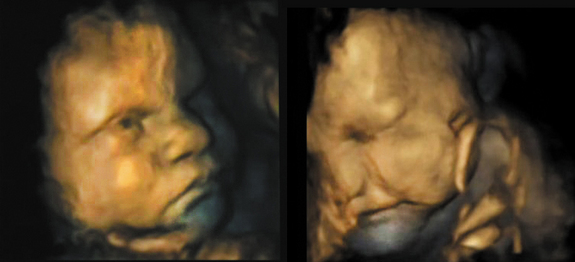
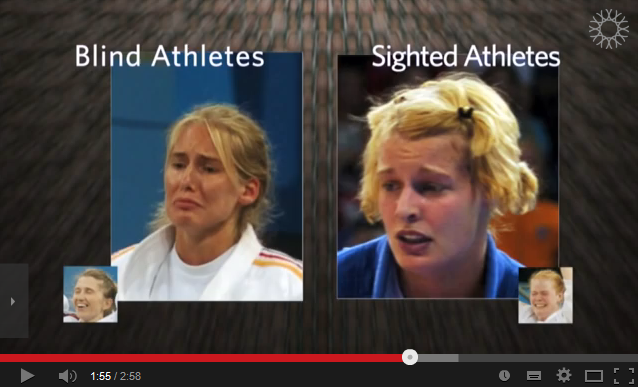




























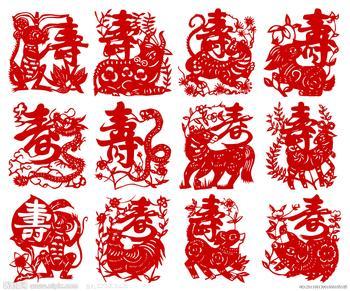

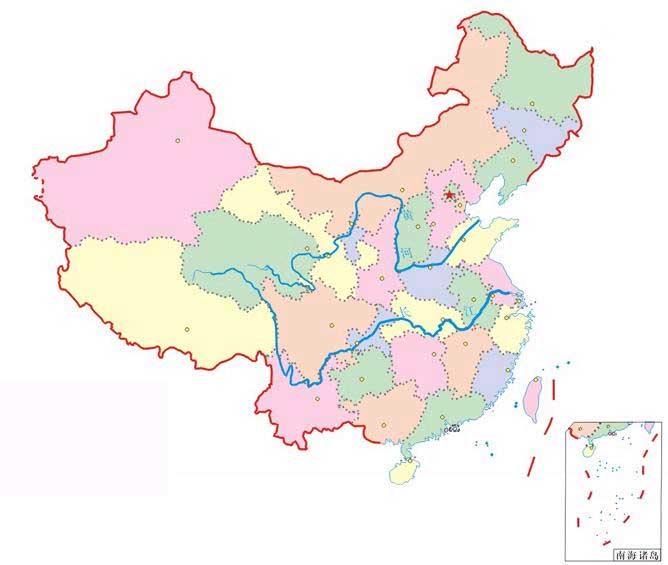
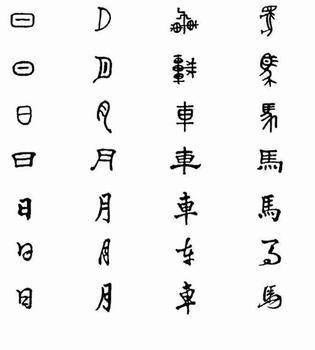


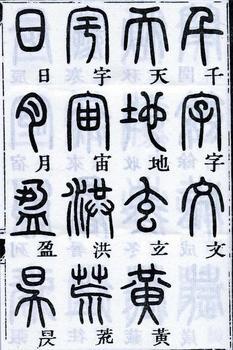
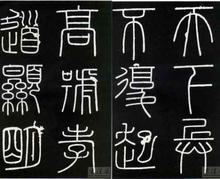
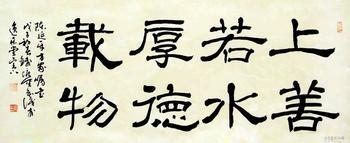
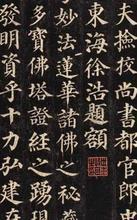



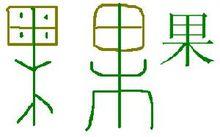
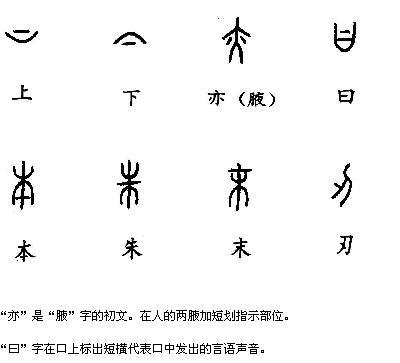

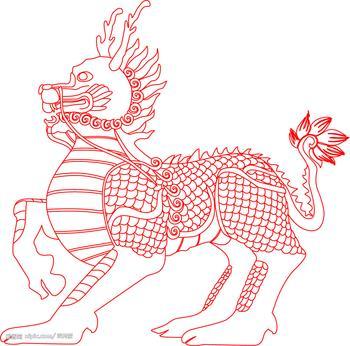
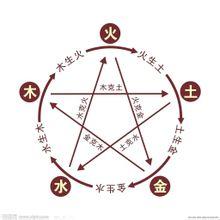


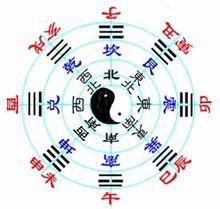
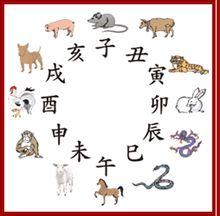
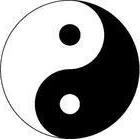
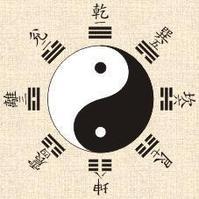

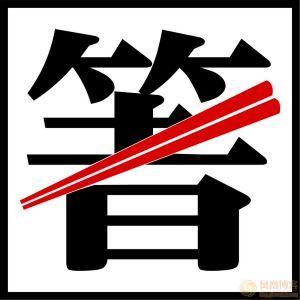


















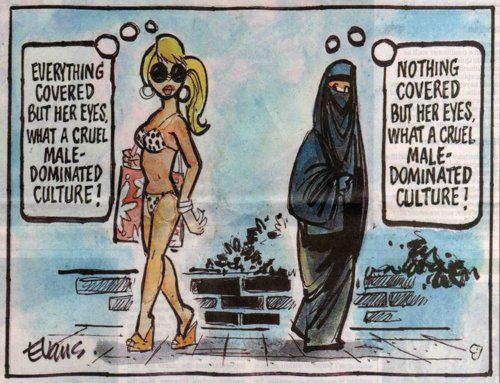
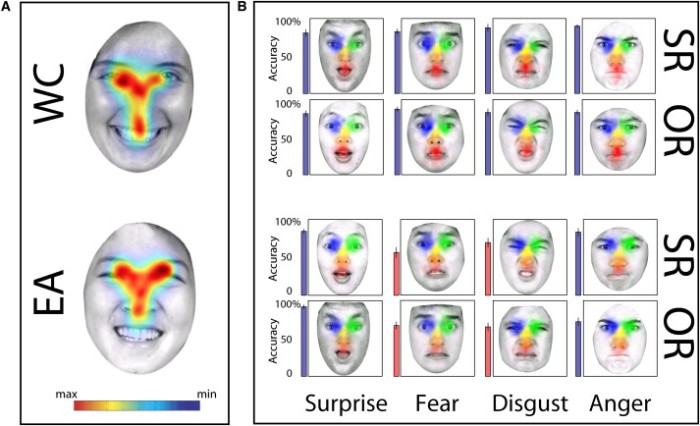
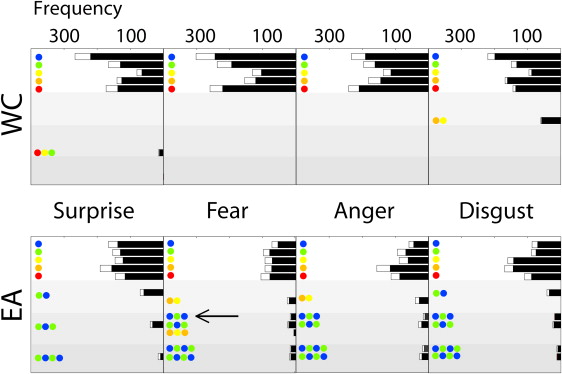

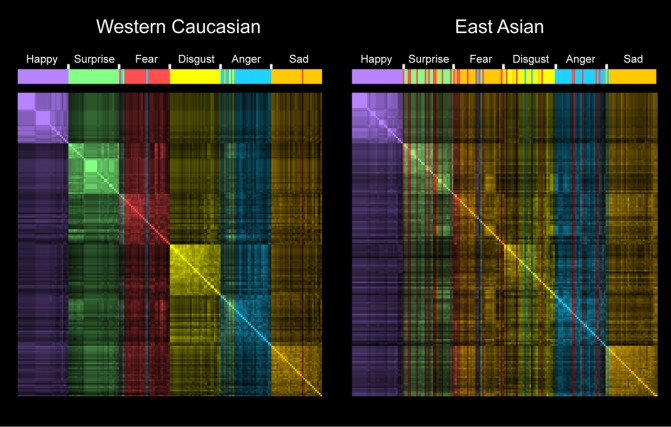
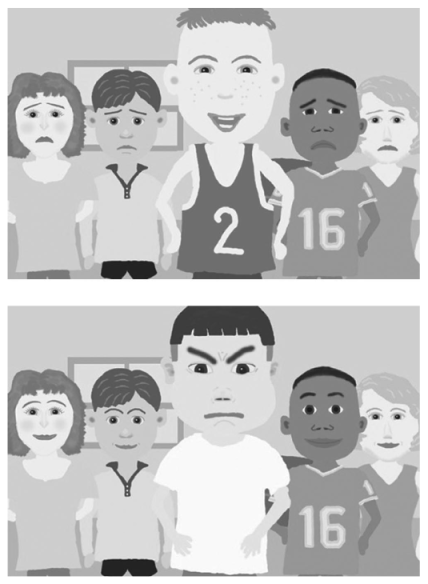






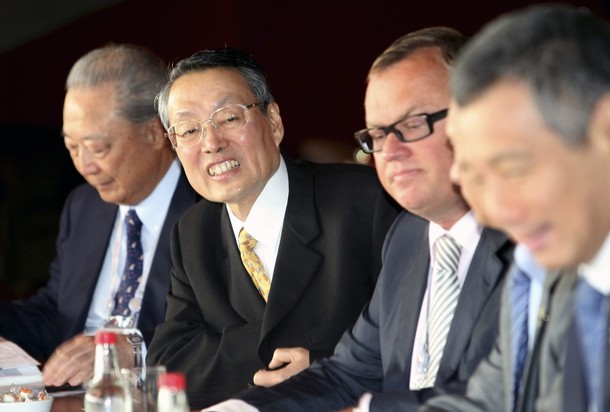



















 ..
..